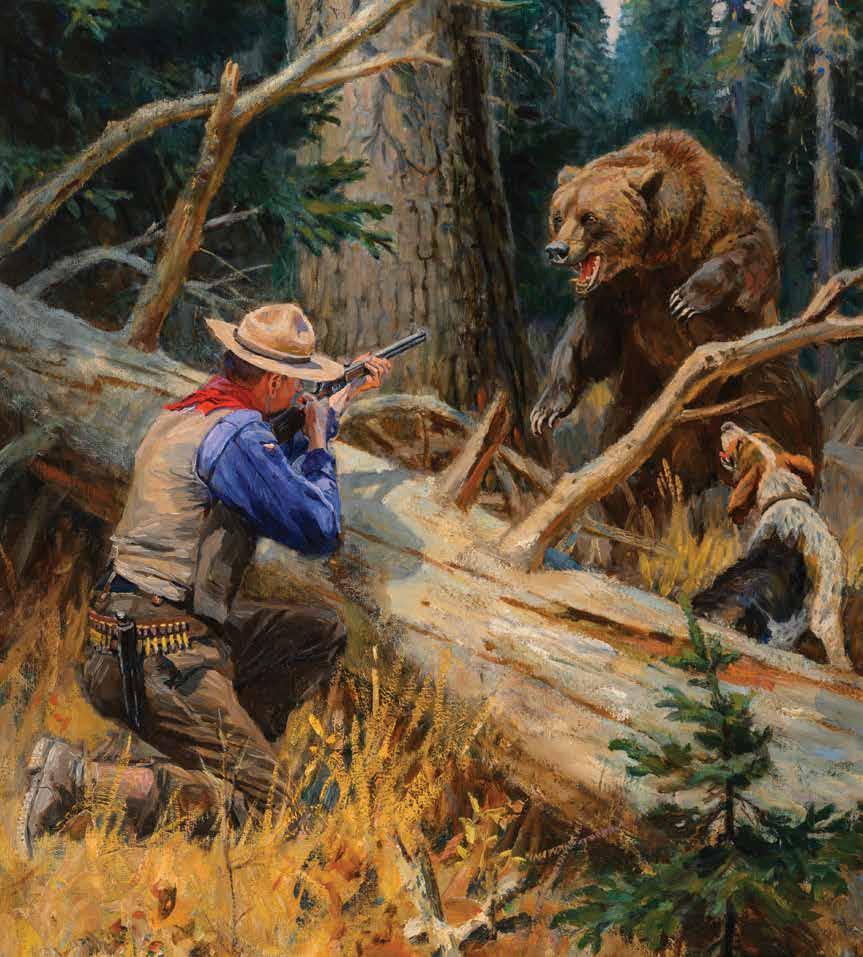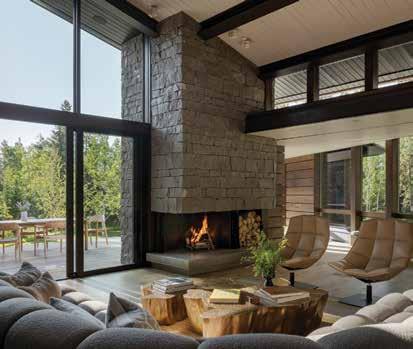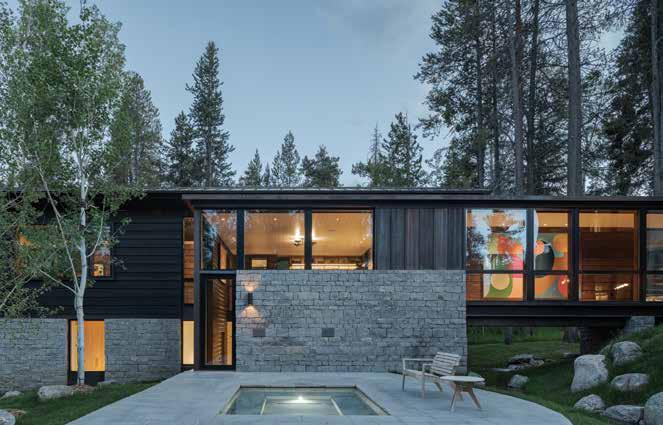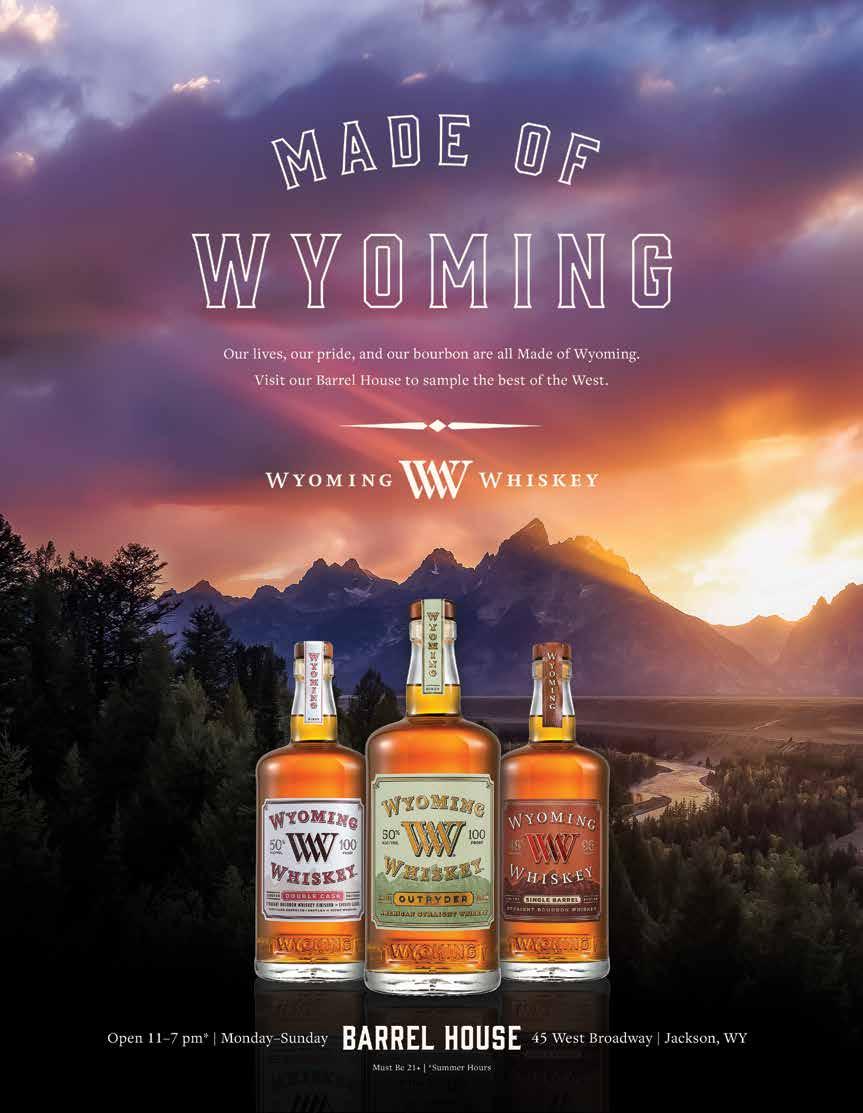
A multi-year public-private partnership is, for the first time, helping tell the history of the families that settled and lived on Mormon Row.


A multi-year public-private partnership is, for the first time, helping tell the history of the families that settled and lived on Mormon Row.



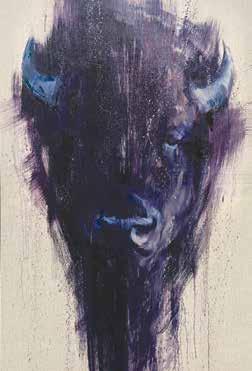
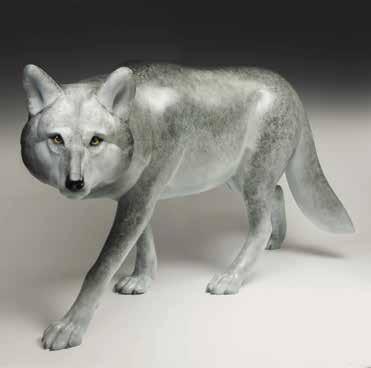

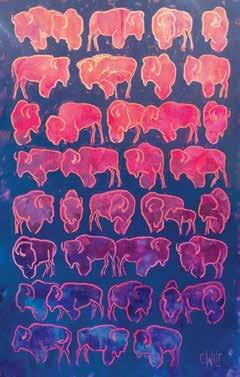
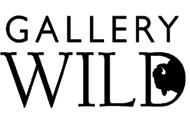
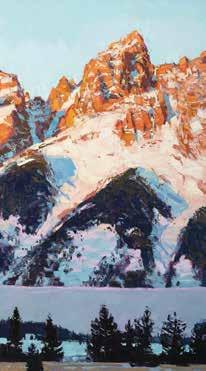


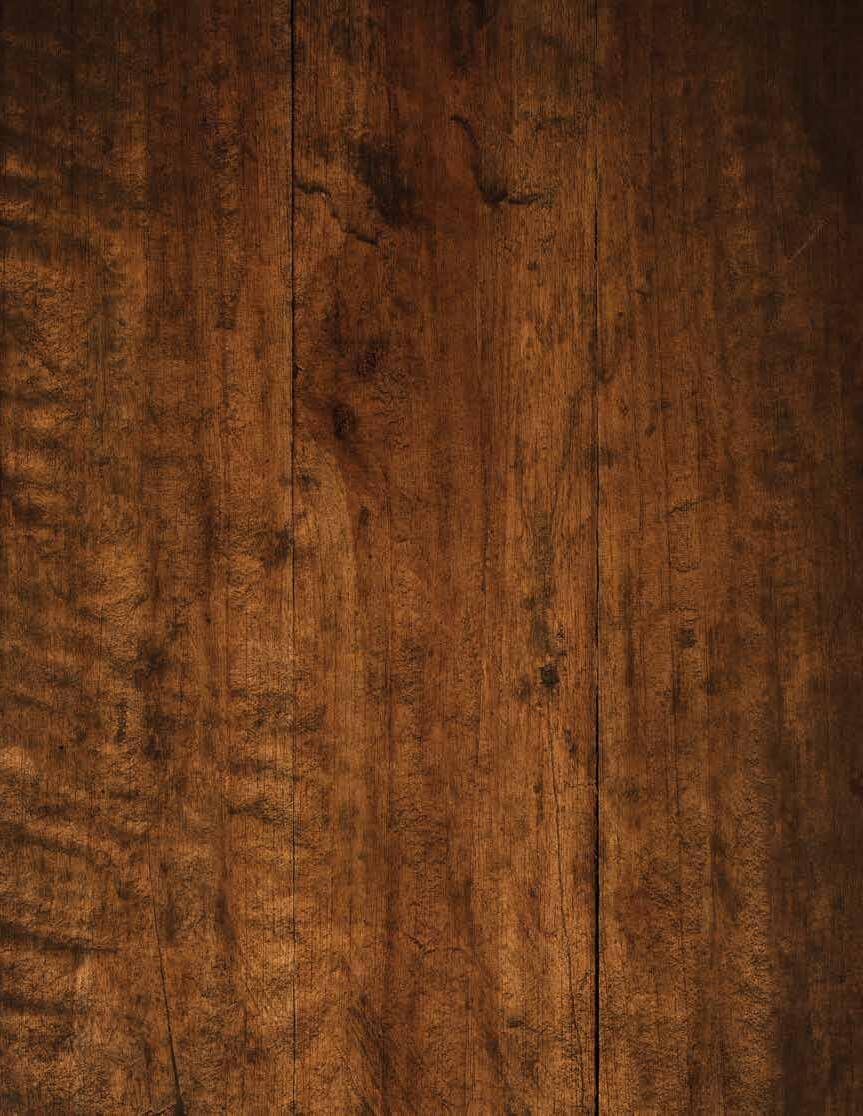

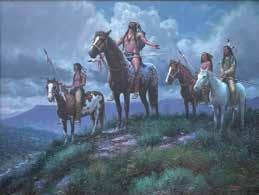
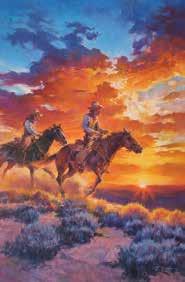
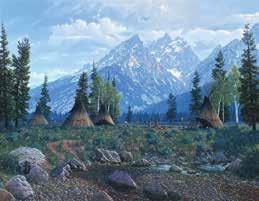

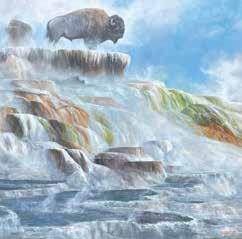




 Ashley Kidd
7x Wold Champion Wake Surfer
Ashley Kidd
7x Wold Champion Wake Surfer

Spas Swimming Pools Glass-Walled Pools & Spas
Energy-Efficient Portable Spas Swim Spas Cold Therapy Plunge Pools
Tile-ready Pools & Spas Water Features Luxury Custom Indoor & Outdoor Bath Fixtures
Specializing in Elevated / Rooftop Pool & Spa Installations
Lightweight & Durable


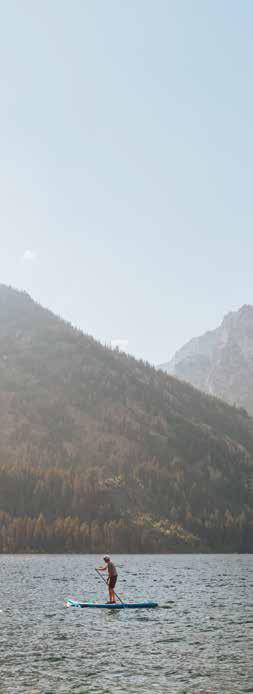


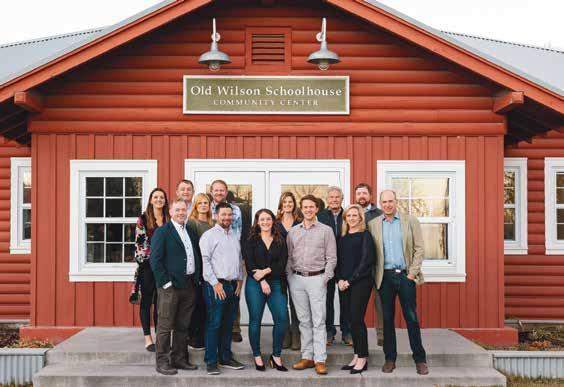
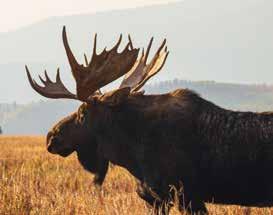


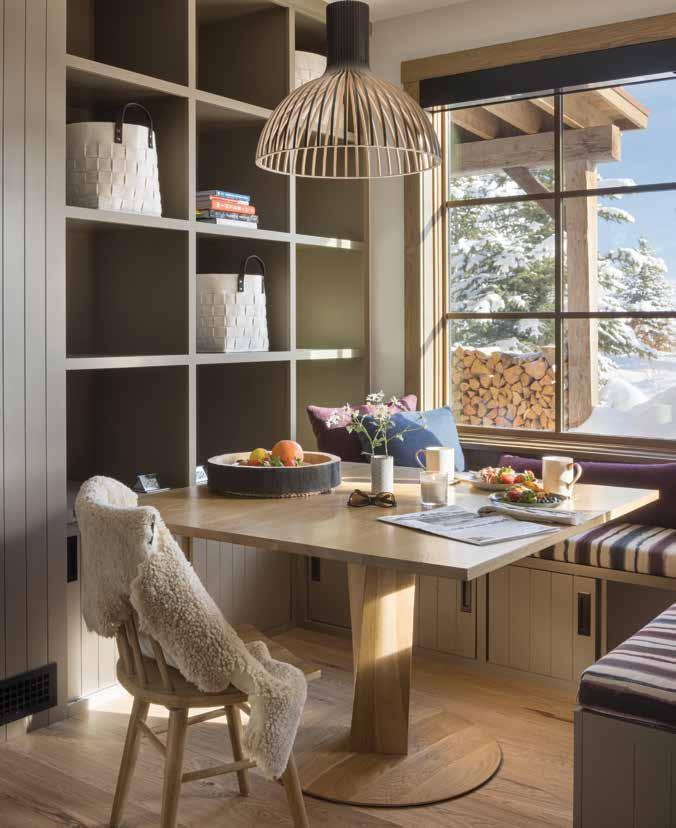

Bill VanGelder ASSOCIATE BROKER
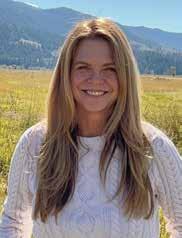
Barbara Allen ASSOCIATE BROKER

Jessica (Mayers) Izard SALES ASSOCIATE & TEAM ASSISTANT
Barbara and Bill are top producing real estate brokers with strong community and professional ties. Working together, they bring over 52 years of combined Jackson Hole real estate expertise to your benefit. The result: sophisticated service, a range of carefully considered advice and a deep understanding of the market and lifestyle.
Begin a conversation here.
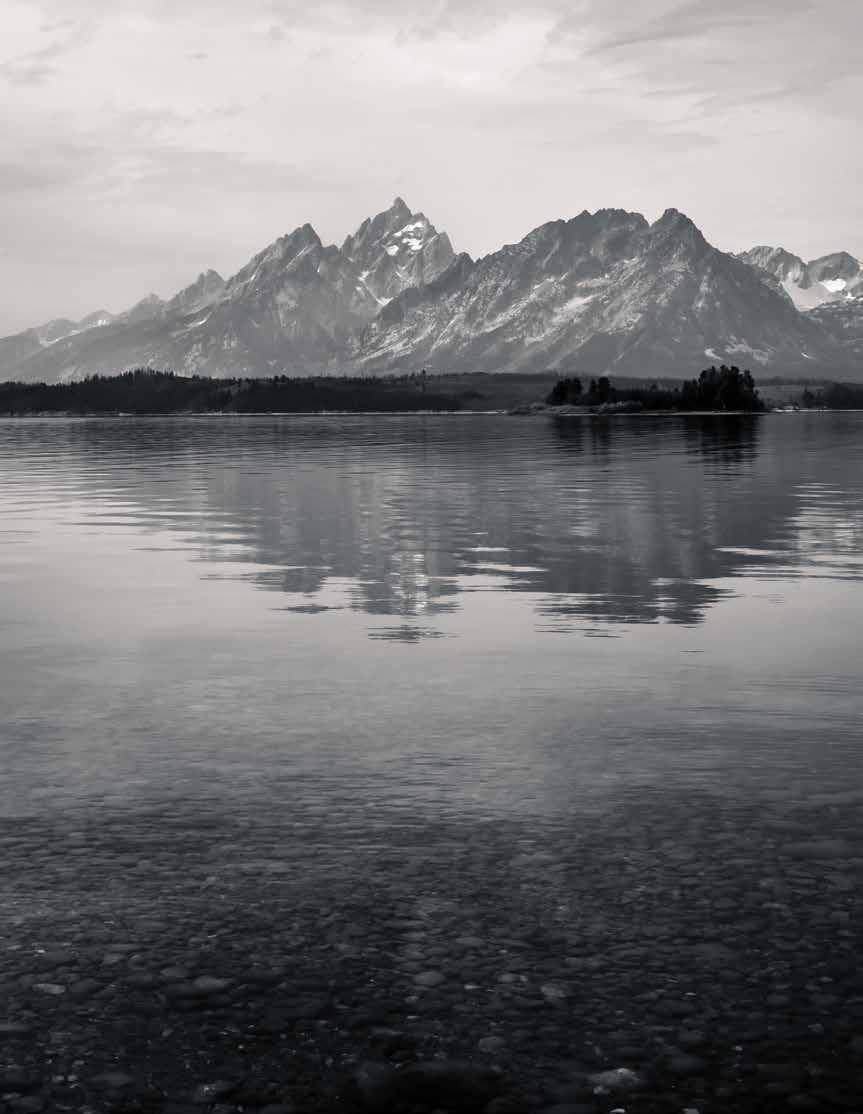
Barbara Allen & Bill VanGelder





Designed, D eveloped And Tested In The Tetons, Stio Apparel Is Made For Th e Epic And Everyday ®
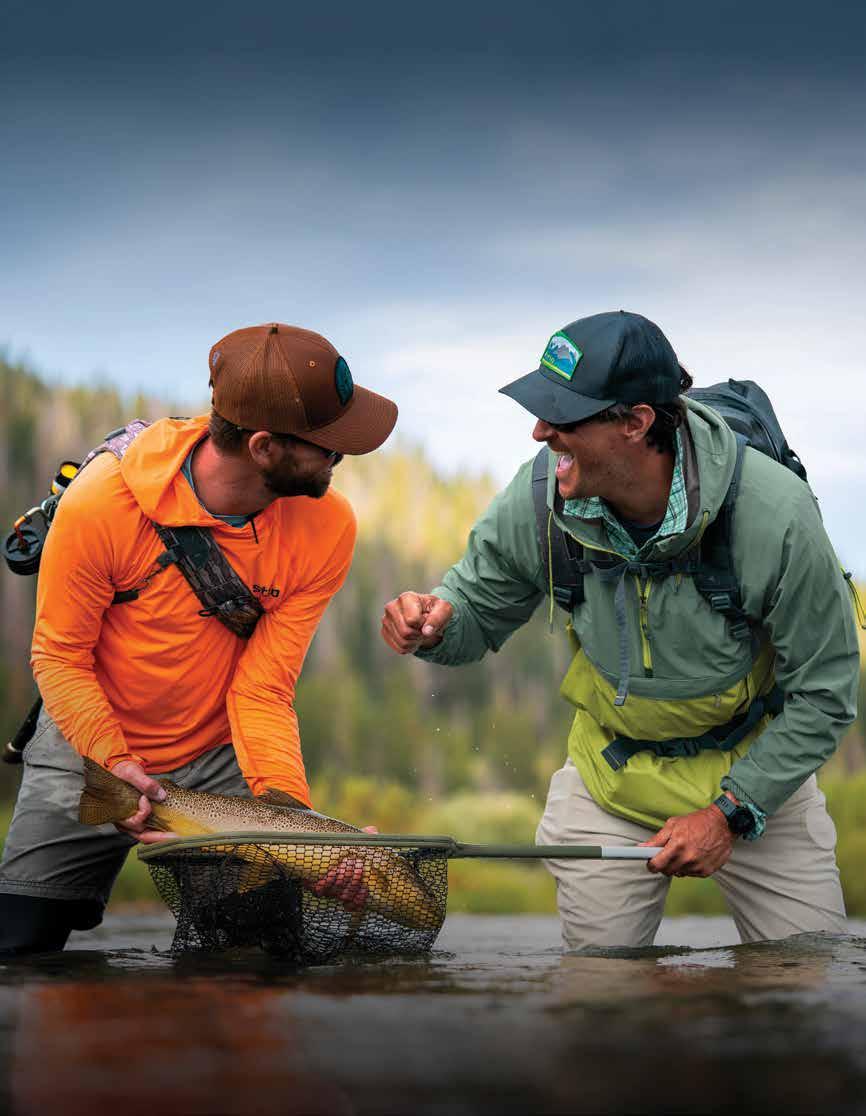

Since inception, donors have relied on the Foundation’s experienced staff to assist with current and planned giving by simplifying administration and providing insight about community needs.
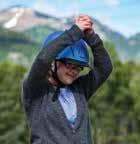

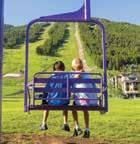








Surgical and non-surgical procedures including facelift, neck lift, brow lift, blepharoplasty, laser skin resurfacing, Botox, filler and more.
Procedures include breast augmentation, breast lift, breast reduction, breast implant revision and breast implant removal.
We offer a variety of procedures tailored to the individual including liposuction, tummy tuck, arm lift, thigh lift and more.
Our non-surgical services provide effective and advanced solutions for enhancing skin quality, reversing signs of aging, and sculpting bodies.
LauraB. Cooper, M.D. BOARD CERTIFIED PLASTIC SURGEON
Meet Dr. Laura B. Cooper, owner of Signature Plastic Surgery in Jackson, Wyoming. Known for her meticulous attention to detail, precision, and genuine compassion, she leads one of the most sought-after practices in the region.
Dr. Cooper’s expertise spans a wide range, from aesthetic, non-surgical treatments to complex surgical procedures. She is also passionate about providing immediate breast reconstruction in patients diagnosed with breast cancer.
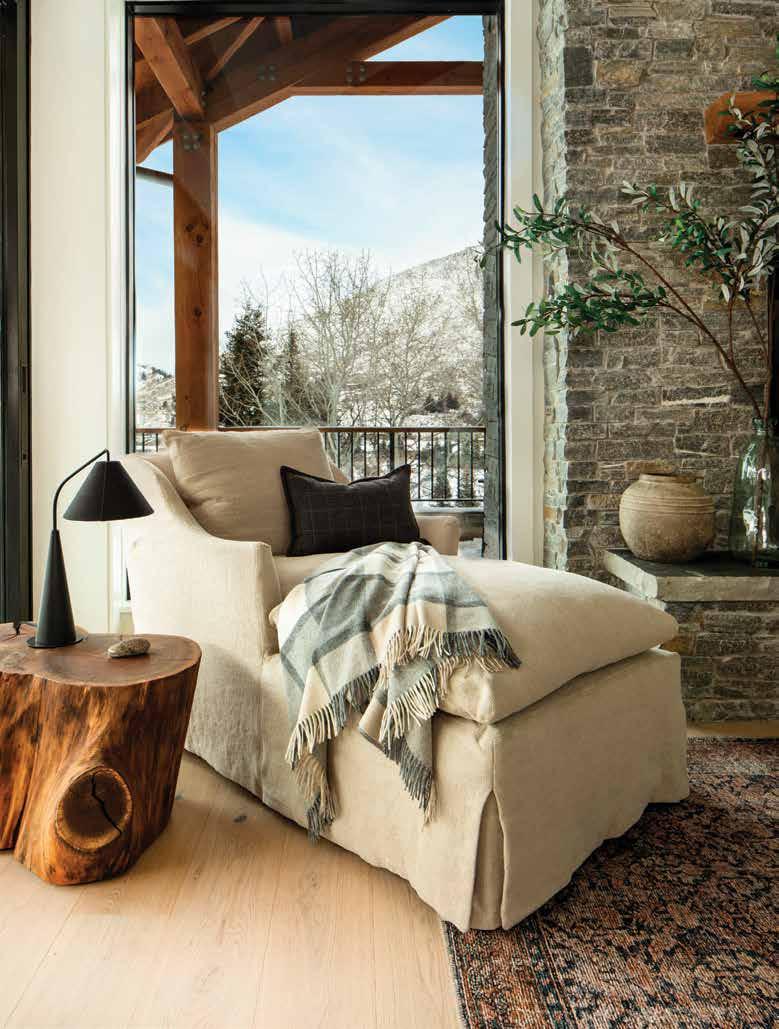


Indulge in a relaxing spa treatment after a day spent exploring the destination, or savor regionally inspired cuisine showcasing the vibrant flavors of the American West. Book now by calling 307-732-5000
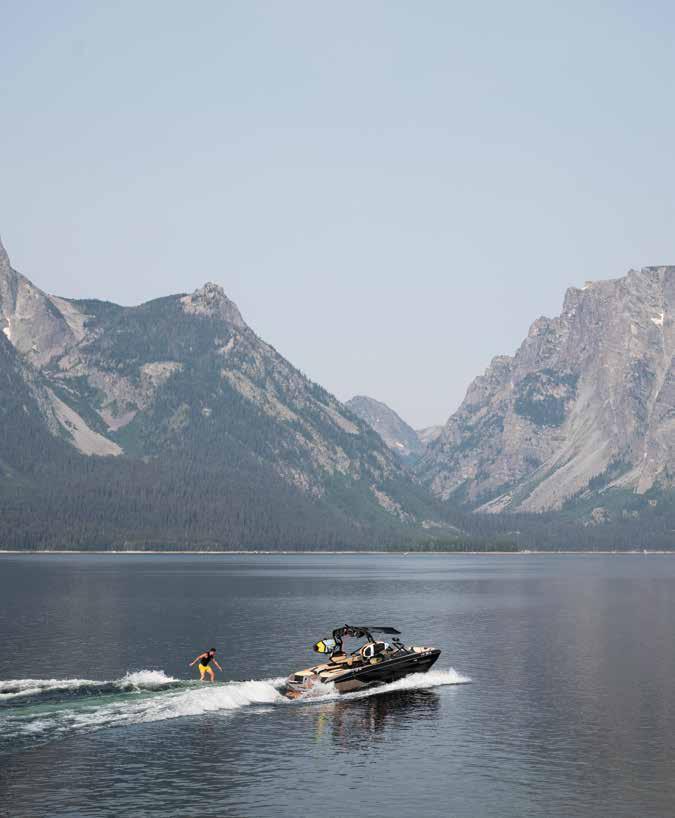
ON THE COVER: Thanks to a multiyear public-private partnership (currently in its third year), visitors to Mormon Row in Grand Teton National Park will soon enjoy interpretive elements sharing the history of the area and the lives lived here by early white settlers. For example: Mormon Rows once dotted the West; this one is the most intact of those that remain. The partnership is also stabilizing some of the historic structures. Photo by Christopher L. Thomas/Elevated Imaging.
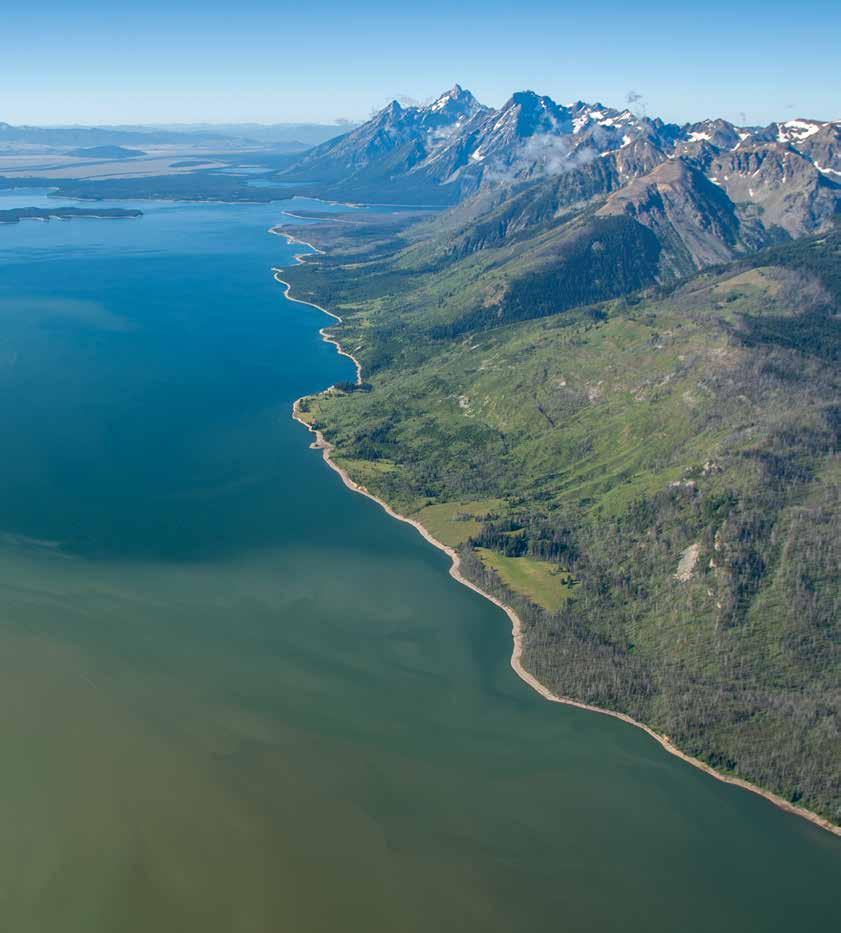
Laws say that water in the West must be put to “beneficial use.” Historically, that has meant agriculture, but could recreation and ecosystem health enter the conversation?
BY MOLLY ABSOLON114
WILD, DEADLY, AND BEST VIEWED FROM A DISTANCE
Yellowstone and Grand Teton National Parks’ views are striking, but it’s often the wildlife that steals the show for the four million-plus visitors who flock to the region annually. Here’s what you need to know to stay safe in their midst—and avoid inadvertently killing wildlife yourself.
BY MIKE KOSHMRL122
PHOTO GALLERY: WHAT'S IN A NAME?
Place names in our valley come from many different sources—from the Shoshone language to early explorers and historic characters.
BY JIM MAHAFFIE128
PRESERVATION OR PRICING OUT?
Conservation easements protect open space and wildlife, but maybe the Jackson Hole community pays a price.
BY BRIGID MANDER138
BISHISH'S ENCLOSURE
Evidence suggests that Native Americans stood on the summit of the Grand Teton centuries before the first party of white men did.
BY DAVID GONZALES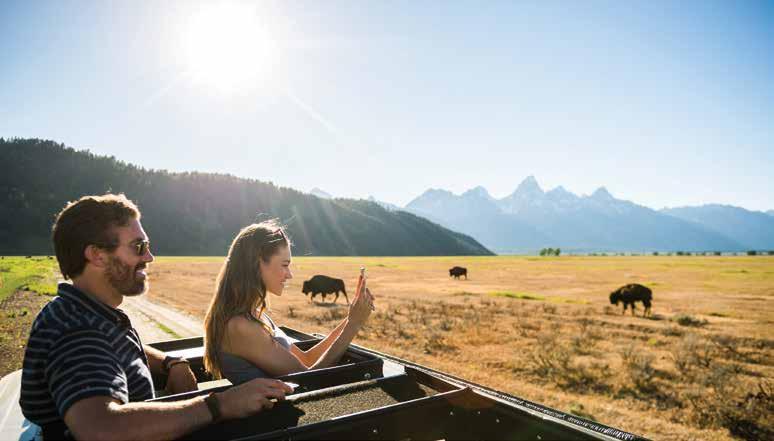
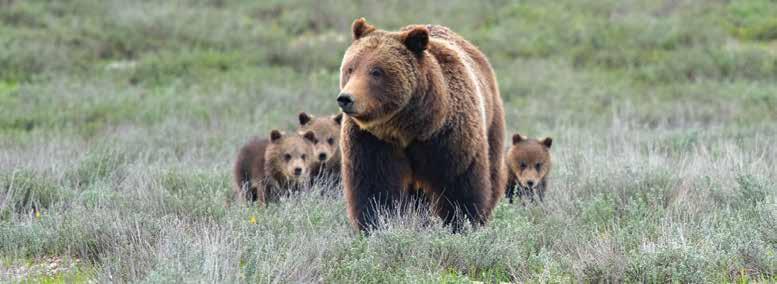
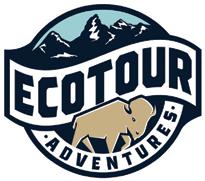
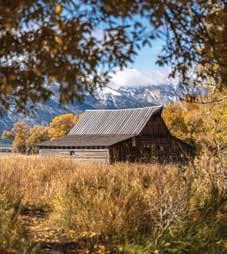



Bank of Jackson Hole is proud to provide the full range of financial services. We are committed to helping our clients and communities achieve their financial goals through Private Banking services, offering competitive rates on deposit and loan products and more.
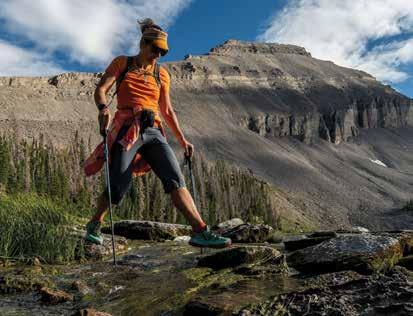
You’d think that after 12-plus years as the editor of Jackson Hole magazine, I might begin to find the job less exciting and challenging. But, for me, editing this magazine falls into the same category as living in Jackson—a privilege I can’t imagine ever getting old.
I was supposed to be in Jackson Hole for one year before returning to the East Coast and “real life.” My third or fourth year here I told myself it would be time to leave when: 1) I saw a moose or bear and it didn’t astound me, 2) my heart no longer raced at the sight of the Tetons, or 3) I went to the post office and didn’t see at least one person I knew (everyone who lives here has a PO box; there is very, very limited home-delivery of mail). This summer marks my 27th year living in Jackson.
Jackson Hole magazine is published twice a year, so this is almost my 27th issue as editor. And, thanks to a stable of curious and talented writers and photographers, I’m still learning about and being amazed by this magical valley and its residents.
This issue’s feature well is stacked with deep dives into pressing local issues. Journalist Molly Absolon presents a primer and turns a local lens on one of the biggest topics in the West—water
rights—in “The Ways of Water,” page 106. WYOFile reporter Mike Koshmrl returns to Jackson Hole magazine as a freelancer to share how to stay safe around the wildlife that is part of what makes this area so spectacular (“Wild, Deadly, and Best Viewed From a Distance,” page 114). Because it’s not just about us, Koshmrl also shares what humans can do to make the lives of wild animals easier (a hint: do not feed wildlife). In “Preservation or Pricing Out?” writer Brigid Mander takes a look at conservation easements and whether they are part of why the average single-family home in Jackson Hole in 2023 was $5.04 million.
But it’s not all heavy. As always, we profile a handful of the amazing people and places that make Jackson Hole the unique community it is. Meet one of my local heroes, recreation program manager for the Bridger-Teton National Forest, Linda Merigliano, in “The Wilderness Diplomat,” page 48. Learn about a modern-day 1,000-kilometer equestrian endurance race across Mongolia that recreates the horse-messenger system developed by Genghis Khan in 1224 and the local woman who won it in 2022 on page 44. I share four of my favorite hike-to summits in “Hike-to High Points” on page 144. Fuel your summit adventure by visiting the subject of “Jackson Hole Pantry” (page 72), Sweet Cheeks Meat, which at least one local loves so much he had its logo tattooed on his leg.
I hope you enjoy reading this issue of Jackson Hole magazine as much as I and the rest of the editorial team—art director Elise Mahaffie, photo editor Brad Boner, copy editor Bevin Wallace, and publisher Adam Meyer—have enjoyed putting it together.
— DINA MISHEV @JACKSONHOLEMAG
Why Choose the Birth Center at St. John's Health:
High Patient Satisfaction
At the Birth Center at St. John's Health, we take pride in our outstanding patient satisfaction scores. We are committed to providing an experience that exceeds your expectations, ensuring your comfort andconfidence throughout your journey to parenthood.
A Trusted Legacy
With a long history of providing exceptional care in the region, we've become a cornerstone of support for families. In fact, half of our deliveries each year are to families who live outside of Teton County, Wyoming.
Expert Providers
Board-certified OB-GYNs and certified midwife providers on our medical staff are currently accepting new patients for prenatal care, and look forward to delivering your baby at our award-winning Birth Center.
Continued Investment
We are continuing to expand the physician staff for labor and delivery services, demonstrating our ongoing commitment to excellence and expanding the program to better serve you.
To learn more about the Birth Center at St. John's Health, please visit: www.stjohns.health/birthcenter or call: 307.739.6175


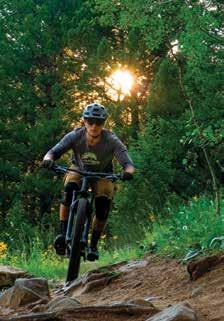
TRUST THE SHOP THAT’S BEEN
SKIING & BIKING SINCE 1976
There is no better way to experience the glory of the Tetons than in the saddle of a road bike or on a mountain bike designed to handle all types of terrain. Hoback Sports is Jackson Hole’s premiere bike shop with the best selection of rental bikes in the valley.

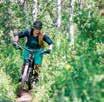

SUMMER 2024 // JACKSONHOLEMAGAZINE.COM
What's your favorite way to relax in Jackson Hole in the summer?
A sunny afternoon river trip with my wife. Sometimes we scare a few fish, but we always come home more relaxed.
An evening float down the Teton River with friends.
Walking our two Bernese mountain dogs on the Snake River Levee.
PUBLISHER
Adam Meyer
EDITOR
Dina Mishev
ART DIRECTOR
Elise Mahaffie
PHOTO EDITOR
Bradly J. Boner
COPY EDITOR
Bevin Wallace
Hanging at the beach at the levee by Emily’s Pond with the dogs. They love running with other snouts and splashing in the water.
A lazy afternoon with the kids at String Lake in Grand Teton National Park.
CONTRIBUTING WRITERS
Molly Absolon Lila Edythe
David Gonzales Mike Koshmrl
Jim Mahaffie Brigid Mander
Sofia McGulick Whitney Royster
Samantha Simma Jim Stanford
Backpacking in the northern Tetons, where I leave people and my everyday problems behind.
A stroll along the banks of the Snake River with a good book in hand until I find a good reading perch— somewhere to sit with a little shade and good swimming. I don’t really have an answer for this; my summers are usually too full to allow for any relaxing.
Parking myself at a pullout in GTNP with a sketchpad, watercolors, a baguette and cheese, and a big bottle of cold, fizzy water.
I don’t generally think of Jackson Hole as a place to relax, but I do find peace and inspiring views on the mellow hike to Taggert Lake in GTNP.
A midday solo hike or bike on The Pass leaves the daily grind and reminds me how grateful I am to live here.
Maggie Theodora Rachel Walker Bevin Wallace
CONTRIBUTING PHOTOGRAPHERS
Billy Arnold Ken Driese
Ryan Dorgan Mark Fisher
Fredick Marmsater Megan Peterson
Jonathan Selkowitz Derek Stal
Chilling on my back deck with a pillow and camping pad. Summer can be exhausting.
Morgan Timms Angus M. Thuermer Jr.
Kathryn Ziesig
ADVERTISING SALES
Alyson Klaczkiewicz
DIGITAL CAMPAIGN MANAGER
Tatum Mentzer
AD DESIGN & PRODUCTION
Sarah Wilson Luis F. Ortiz
Lydia Redzich Chelsea Robinson
DISTRIBUTION
Jayann Carlisle
Oscar Garcia Perez
Rulinda Roicew
Kevin B. Olson, CEO P.O. Box 7445, Jackson, WY 83002 | 307/732-5900
Hiking into the Snake River for a cool dip then drying out in the sun. Cold water is good for whatever ails you.
Riding on horseback to the top of Sheep Mountain.
©2024 Jackson Hole magazine. All rights reserved. No part of this production may be reproduced in any form without written permission from the publisher. No responsibility will be assumed for unsolicited editorial contributions. Manuscripts or other material to be returned must be accompanied by a self-addressed, stamped envelope adequate to return the material. Jackson Hole magazine is published semiannually. Send subscription requests to: Jackson Hole magazine, PO Box 7445, Jackson, Wyoming 83002. 307/732-5900. Email: dina@jhmagazine.com. Visit jacksonholemagazine.com.

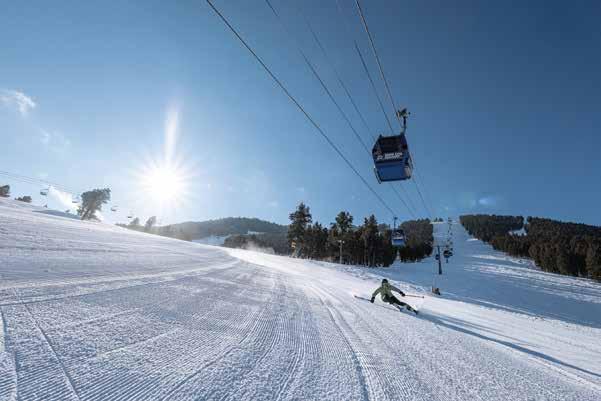

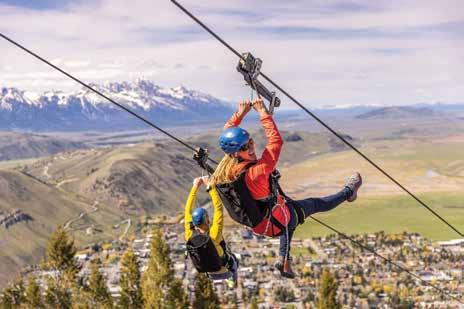
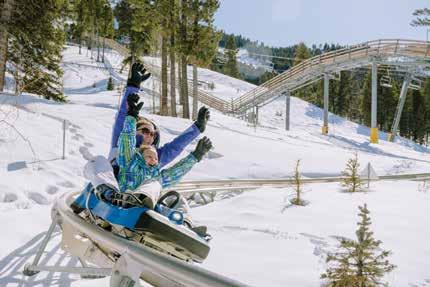

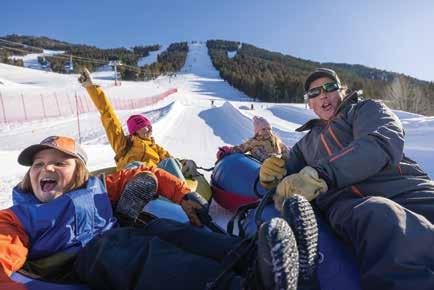
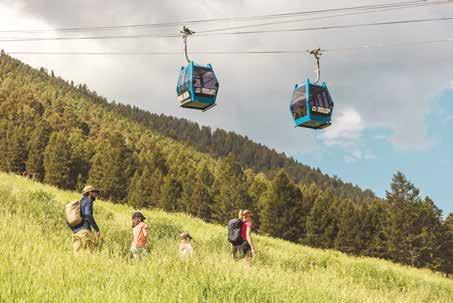


MIKE KOSHMRL
(“Wild, Deadly, and Best Viewed from a Distance,” pg. 114 ) first came to Jackson Hole in 2012, drawn by the environmental reporter gig at the Jackson Hole News&Guide. He’s now on staff writing for WYOFile
As a freelancer, Koshmrl has written about urban wolves in his home state of Minnesota and he’s trekked into the Thorofare to fish for and cover resurgent migratory cutthroat trout. He tries to spend as much time as possible exploring the Greater Yellowstone Ecosystem.

RACHEL WALKER
(“Local Knowledge” pg. 30) has made a living out of asking people nosy questions about themselves. Lucky for her, the answers keep coming, and she gets to share parts of her subjects and their phenomenal lives and expertise with her readers. A former reporter at the Jackson Hole News, Rachel now lives and writes in Boulder, Colorado, and loves to indulge her curiosity through journalism.




(“Choose Your Own Adventure,” pg. 98) loves flow charts, in part because they reflect the inevitability of certain outcomes. She has lived in Jackson since 1993. When not feeling existential, she hopes to be found in some state of rapture, or bloated on ice cream, or both. A pie chart reflecting how she spends her time would show a startlingly large wedge marked “working on and/ or being annoyed about insurance.”

ELISE MAHAFFIE has been the art director of Jackson Hole magazine for the past six years and feels incredibly lucky to do the work she loves while living in Teton Village. In her spare time, she paints wildlife and Western art. Last year, Southwest Art named Elise an “Artist to Watch.” She has also painted in the National Museum of Wildlife Art’s Plein Air Fest event the past three years.
@elisemahaffie
Belle Nuit: A Beautiful Night of Song - Opera
June 7 - 6pm | Teton Geo Center & Museum
Teton Valley Chamber Music Festival
Cordovas - American Rock
July 3 - 6pm | Driggs Plaza
In partnership with Teton County Idaho Fairgrounds
The Shift - R&B and Jazz
July 21 - 6pm | Driggs Plaza
Black Rock Winds - Classical
July 26 - 6pm | Driggs Plaza
The Wild Potatoes - Irish
August 16 - 6-8pm | Driggs Plaza
Dirty Cello - Blues, Americana and Rock
August 30 - 6pm | Driggs Plaza
Nicolas Meier Trio - World Jazz
September 5 - 6pm | Driggs Plaza
July 21 – 27 | Driggs Plaza & Gallery
July 21 - Opening Reception and Concert
July 26 - Awards Ceremony and Concert
July 18 - September 20 - Art Sales at Teton Geo Center
Shakespeare in the Parks
July 28 | Teton County Courthouse Lawn 5:30pm - Vaudeville Skits by ACT Foundation 6pm - Hamlet

Driggs, Idaho to enjoy live music, art and theater. Stay overnight to explore the historic downtown with great shops and dining.

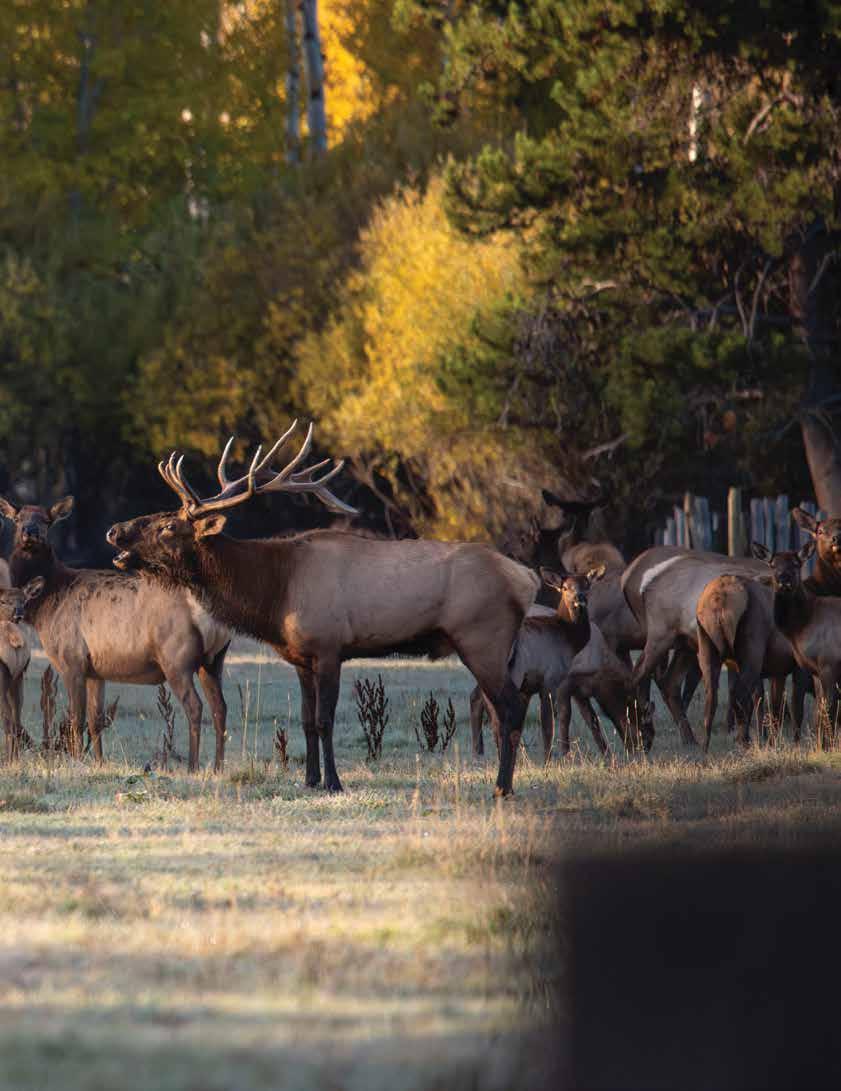
A BULL ELK BUGLES early on a autumn morning on the R Lazy S Ranch during the annual mating season, also known as the rut. Elk usually stick to same-sex groups, but during the rut, mature bulls gather females— or cow elk—into groups called harems, which they will aggressively protect from other bulls. The bugling advertises their fitness to cows and also shows off to other bulls.

The Bridger-Teton National Forest fire-prevention specialist works to help people understand the amazing force fire can be.
W// BY RACHEL WALKERhen Bridger-Teton National Forest fire-prevention specialist Lesley Williams-Gomez arrived in Wyoming to fight wildfires in 1994, she stepped into a career that bridged two of her passions: outdoor adventures and ecology. She would also forge new territory as one of the first female smokejumpers, leaping from airplanes into areas where wildland fires were burning to help battle the flames. These pursuits delivered equal parts adventure and public service while satisfying Williams-Gomez’s innate curiosity about the natural world.
“I’m passionate about being outside and fire management,” Williams-Gomez says. “Fire ecology is such an important piece of this ecosystem that this career path seemed like a no-brainer.”
Today, having spent more than 20 years working for the USDA Forest Service on fire-prevention education and natural resource protection, Williams-Gomez is a familiar face in and around Jackson Hole as she travels to campsites, neighborhoods, and schools to teach people how to prevent wildfires. In addition to teaching about campfire safety (see her top tips below), Williams-Gomez also shares details about the importance of fire on the landscape, how to best protect private lands from catching fire, and how to learn more and spread the word so that fire prevention becomes a community effort. This includes thinning trees and brush on private land that abuts public land, minimizing flammable materials on private property—replacing a shake roof with a metal one, for instance—and creating “de-
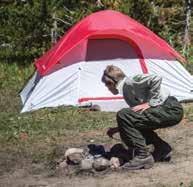
SHARES ESSENTIAL FACTS ABOUT CAMPFIRES AND WILDFIRE RISKS:
1. If you don’t know how to put out a fire, you should not have a campfire.
2. Always check campground signage to make sure fires are allowed before lighting one. (A campfire is usually allowed when it is not windy or dry and you have enough water with you to put it out properly.)
3. Have at least five gallons of water and a shovel—the best things to extinguish a campfire.
4. To extinguish a campfire, first douse it with water. Stir it, and then get your hand close enough to feel it. Douse, stir, and feel until the fire is cold to the touch.
5. Yes, you absolutely have to feel your extinguished campfire. Don’t just look at it. If it’s a little warm, it’s not out and it will only take some afternoon wind to be reignited.
6. If you see smoke and suspect a wildfire, call 911.
Fire ecology is such an important piece of this ecosystem that this career path seemed like a no-brainer.” "
fensible spaces,” areas around structures where fuels and vegetation have been greatly reduced or removed in order to slow the spread of a potential wildfire.
Generally, Williams-Gomez has found an amenable audience that is willing to learn. “Kids are great,” she says. “I love going into schools and talking with them so then they go home and talk to their parents. If we teach kids how to put out a campfire and how to be responsible with fire, that’s indispensable.”
As she shares her knowledge, Williams-Gomez strives to explain the complexity and nuances of wildfire in a way that fosters respect for the natural world. Fire is an essential part of the landscape that helps vegetation rejuvenate and provides important wildlife habitat, but decades of fire suppression have given rise to destructive conflagrations that cause significant environmental and material damage. “Fire is an amazing force,” she says. “It puts so many nutrients back in the soil, and it’s good for habitat. But it’s horrible for communities if they’re not fire-adapted.” JH
 // BY JIM MAHAFFIE
// BY JIM MAHAFFIE

RANCH-STYLE DESSERTS
Wild Sugar: Seasonal Sweet Treats Inspired by the Mountain West
Lindsey Johnson
From her ranch in Freedom, Wyoming, Lindsey Johnson delivers this lifestyle cookbook of seasonal desserts and sweet treats, innovative table settings, and serving ideas. These are combined with fun stories of animal antics, holidays, her family’s adventures, and Wyoming life.

NATIONAL PARK ART
Ranger of the Lost Art: Rediscovering the WPA Poster Art of Our National Parks
Doug Leen
As a young Park Service ranger, Doug Leen stumbled on an old poster of Grand Teton National Park in an abandoned barn in the Tetons. That discovery began a quest to find and preserve the art created for national parks during the Great Depression by the Works Progress Administration. Over a long career as a health provider in rural Alaska, staff dentist at the South Pole, and Pike Place Market dentist in Seattle, he has recovered and today reproduces dozens of these distinctive works.

HIMALAYAN TRAVEL
A Gentle Rain of Compassion
David R. Shlim, MD
A compelling memoir from an incredibly accomplished travel physician, this adventure tale shares the author’s time practicing medicine in the Himalayas. In the Himalaya, Dr. Shlim found an amazing spiritual connection to the region and to Buddhism, and was a personal witness to medical mysteries and hard-toexplain events. Among many accomplishments, the author ran a travel medicine clinic in Kathmandu for 15 years, offered free medical care at a Tibetan monastery, and also served as a tour doctor for the Rolling Stones.

Images of America: Jackson Hole
Scott MorrisThe book covers the valley’s Indigenous peoples and the first fur trappers, then the early settlers and ranchers who created an economic base and frontier village. Before long came big game hunters, then the skiers to Mount Snow King. Two national parks to the north and Jackson Hole Mountain Resort grew the area into the major recreational hub it is today—all of which is chronicled in this book. JH
ANATOMY OF
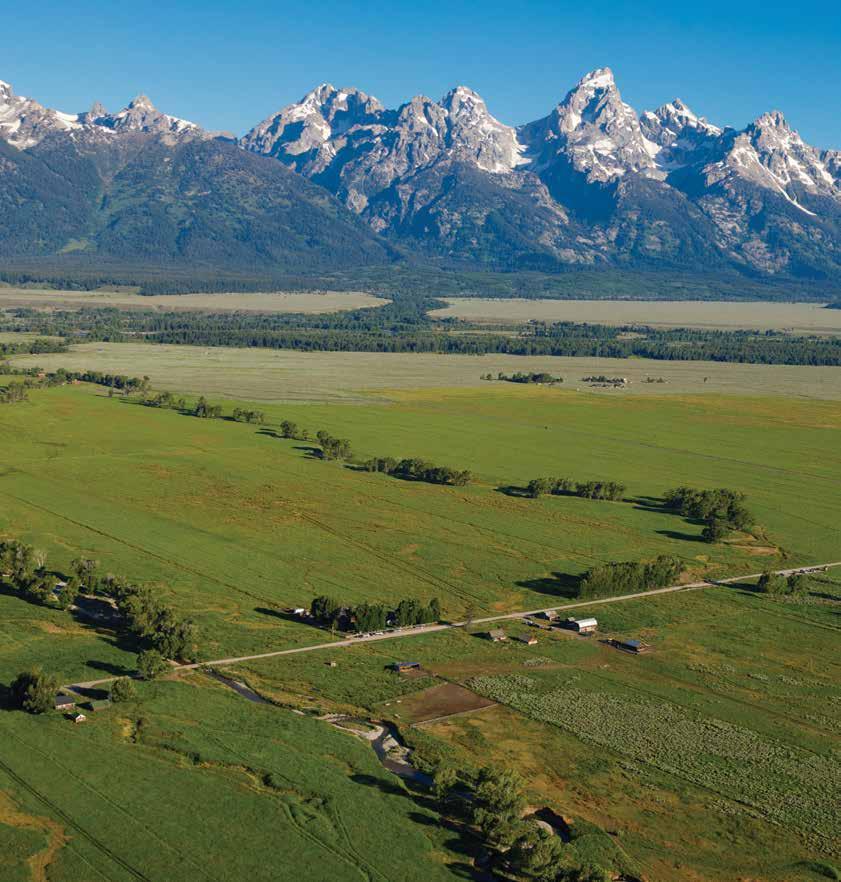
At one point, Mormon Row extended all the way south to the Gros Ventre River; today the Roy Chambers house is among the southernmost structures that still stand. One of the last occupied buildings on Mormon Row—Roy and Becky Chambers lived here until 1989—the house got a new foundation last summer. Over the next two summers ,the building will be rehabilitated and modern utilities installed so that it can provide housing for seasonal GTNP staff. “One of my favorite things about this building is its bright yellow kitchen,” says Kate Birmingham, GTNP’s branch chief of cultural resources. “It is definitely of its time—an early 20th century kitchen painted in a bold color.” While the appliances will be updated, Birmingham says the yellow will remain. “It contributes to the building’s historical significance,” she says.

T.A. Moulton, brother to John Moulton, homesteaded here as a bachelor in 1908 and in 1912 brought his new wife, Lucile, and newborn son, Clark, to the Row. Construction on the original part of the barn—a flat-roofed, 18-by-24-foot box, 12 rows of logs in height, built to shelter the family’s horses, Don and Saylor—started the following year. In 1928, Moulton and son Clark added a peaked hayloft. In 1934 and 1938, the south and north lean-to additions were constructed. Everything was built with lodgepole cut from nearby Timber Island skidded to the site using a team of horses and also with lumber bought at a local sawmill. Deteriorated to the point of near-collapse by the first decade of this century, the barn was stabilized and got a new roof about a decade ago.

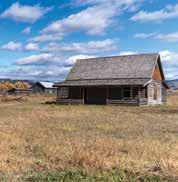
Andy Chambers built this two-story log cabin in 1916 on a relinquished claim that he had purchased in 1912. Today the cabin and its surrounding outbuildings are the most intact homestead on Mormon Row. In 1918, Andy married Ida Kneedy, and the couple had seven children, including Roy, whose home got a new foundation last year. Roy was born in this log cabin, which will receive exterior renovations in 2025.

At the northernmost end of Mormon Row, the Reed Moulton/Joe Heninger property was one of five homesteads irrigated by the Mormon Row Ditch, which was built by Heninger and his neighbors starting in 1929. The house standing today was built around 1908 by Thomas Murphy, who sold the property to Heninger in 1920. Heninger sold to neighbor John Moulton in 1945, and John Moulton gave the ranch to his son, Reed Moulton, who lived there with his wife Shirley. By 1953, Grand Teton National Park had bought this ranch and the adjacent John Moulton Ranch, although three generations of Moultons continued to live here until 1973, when Reed and one of his two daughters died in a car accident.
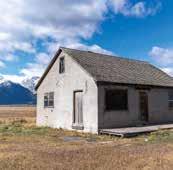
“Where’s the barn?” There are hundreds of barns in Jackson Hole, but ask this question of any local and they will all give the same answer: the T.A. Moulton Barn is on Mormon Row in Grand Teton National Park. More than a century old, this barn might be the most photographed in the world. With the Tetons rising sharply behind it, it does make for a gorgeous image.
But the barn, and the 30-some other buildings that remain on Mormon Row, are more than props. A $7.4 million multi-year public-private partnership now in its third year seeks to share the unique history of the area and the lives lived here by early white settlers. (Before white settlers arrived in Jackson Hole, 24 Native American tribes used this land.) The project also includes substantial preservation and rehabilitation work to the buildings.
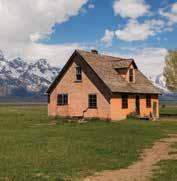
Constructed in 1938, the Pink House was lifted and put on a foundation in 2021. And then the hard work started: “The most difficult part of this building was color matching,” Birmingham says. “We took color samples from various places, and the first color that came back looked more terra cotta. I was very concerned. I didn’t want to be the person that turned the pink house into the orange house.” After more than one dozen different colors, a match was finally found. Don’t just admire this building’s color though— take the time to look in the windows. “There are at least 33 different types of wallpaper in this house,” Birmingham says. “Bartha [Moulton, who lived here with her husband, John] was known for redecorating every year.” Fun fact: John Moulton, brother of T.A. Moulton, painted this house its distinctive color as a welcome-home surprise for Bartha, who had been in the hospital. He knew she had wanted to repaint the house. John picking salmon pink as the color was a mix-up. Rumors are that Bartha hated the color but kept it because she loved John’s thought behind it.
A century ago, Mormon Rows dotted the West. “Mormon Row” was a colloquialism given because of the communities’ layouts—rather than isolated homesteads more typical of the place and time, Mormons organized their homesteads with their homes along one road and with fields behind. The first homesteaders arrived at Jackson Hole’s Mormon Row in 1896. The area thrived until the 1940s, when it became obvious that nearby Grand Teton National Park, which was founded in 1932, would likely expand. Mormon Row residents began selling their ranches to the NPS.
Today, Jackson Hole’s Mormon Row is the most intact of the Mormon Rows that remain. “Mormon Row is a popular place to visit, but when you’re out there standing around these old buildings, there is limited information about its importance,” says Leslie Mattson, president of the Grand Teton National Park Foundation, which seeks to raise $5 million for the project. “As cool as the buildings are, for me, it’s the history that truly makes it special. With the right interpretive elements, you can understand the hearty souls who came here and created a community.”
To date, the project has focused on the buildings themselves (some were almost at a point from which they could not have been preserved). Interpretive elements including signage, audio and video tours, and experiences on the National Park Service mobile app will come in 2025 and 2026. Also to come is a network of accessible trails and amenities. In the meantime, here’s some history about a handful of Mormon Row’s buildings. JH
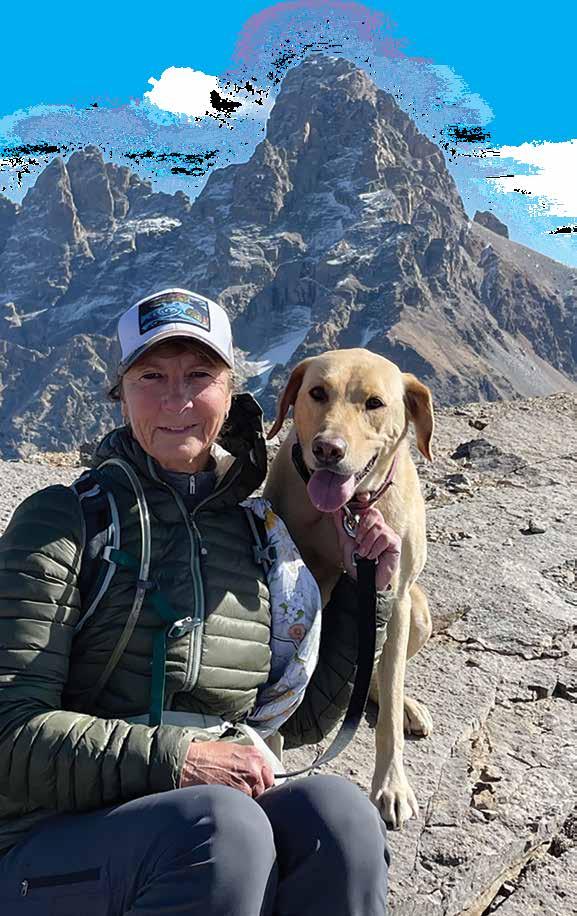 // BY JIM MAHAFFIE
// BY JIM MAHAFFIE
She came here to ski powder; in staying, she's made an indelible mark on the community.
“People love Grand Teton National Park,” says Leslie Mattson, president of the Grand Teton National Park Foundation since 2004. “They step off their flight, and the mountains are right there in their faces. How can you not love that view? We enable people to support what they love.” During Mattson’s time at GTNPF, it has raised over $150 million for the Craig Thomas Discovery and Visitor Center; major improvements to Jenny Lake, Antelope Flats, and other areas of the park; plus, youth programs; wolf-conservation research; climate change studies; and now upgrades to the popular Taggart Lake area. (Read more about how GTNPF is helping with the restoration of Mormon Row on page 32.) Before the GTNPF, Mattson was executive director at the Jackson Hole Land Trust for 13 years, where she led the $26.5 million Campaign for Our Valley for the permanent protection of thousands of acres of landscapes and wildlife habitat. She also serves on the boards of the Teton County Search and Rescue Foundation and the Haub School of Natural Resources at the University of Wyoming.
Originally from Massachusetts, Mattson grew up skiing with her dad and twin brothers, driving four hours to Sugarloaf in Maine on Friday nights and then back on Sundays, listening to NFL games on the radio. She first visited Jackson Hole in 1988 on a ski trip. Two years later, she moved here to “try living out West for a year.” Thirty-five years later, she has made an indelible mark on Jackson Hole. “It’s such a unique place, with the people, the landscapes, and all the opportunities for recreation,” she says. “And when you’re a part of the community here, you can really make a difference.”
HERE LESLIE SHARES SOME HIGHLIGHTS FROM HER
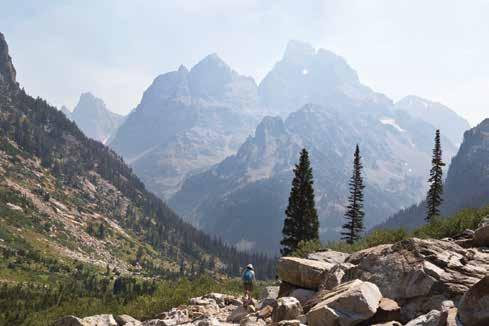
It’s such a unique place, with the people, the landscapes, and all the opportunities for recreation.” "
I love the Village. Skiing is what brought me to Jackson Hole years ago. Powder skiing is my favorite thing to do on earth, and I never knew a thing about it until I first came here in 1988. We were three couples during St. Patrick’s Day week. We landed in dry and sunny, and then it was blizzarding. My boyfriend announced to me on the Thunder Lift that he was moving here. A year later, I was engaged and moving with him. I remember truly spectacular runs in deep snow down Rendezvous Bowl, North Colter Ridge, and so many others. I usually ski about 50 days a season, and that’s plenty for me.
Over the three seasons that I’m not skiing, you can find me on Josie’s Ridge three or four days a week, hiking with my little Labrador Patsy (named after my mother). Josie’s has always been a happy place—a dog-friendly trail with great views of town and the Tetons, all the way up to Snow King. Afterward, we hit Pica’s for a chicken tostada.
I love hiking to Lake Solitude from the Paintbrush Divide side and coming down through Cascade Canyon to Jenny Lake. That’s fun to do once a year or so, with great views of the Tetons and potential for wildlife. Then, I’ll always go check out how our Foundation project is being received on the west side of Jenny Lake, where we worked with the park on all the infrastructure improvements. That was so gratifying, and a tribute to the Park Service’s 100th anniversary in 2016. We’re talking now about what we want to accomplish for the 100th anniversary of GTNP in 2029.
I live in my house in Wilson when I’m not at the ranch in Dubois with my husband, Will, so I like to stay local when going out for food. My favorite is the chicken dinner at the Calico Bar on the Village Road. You can get it off the chalkboard menu in the bar area. That’s comfort food for me.
When I first moved here in 1990, I said I’d try it for a year. I was with my first husband, and we had left our wedding gifts at my parent’s house in Massachusetts. I showed up with a ton of Ann Taylor outfits. I remember going mountain biking with a friend. Afterward, she said we were going to Calico for another friend’s birthday party. I was all muddy and thought I needed to go home to shower and change. My friend said no. We showed up at the party, and that’s the moment I realized I’d truly made a major transition. JH
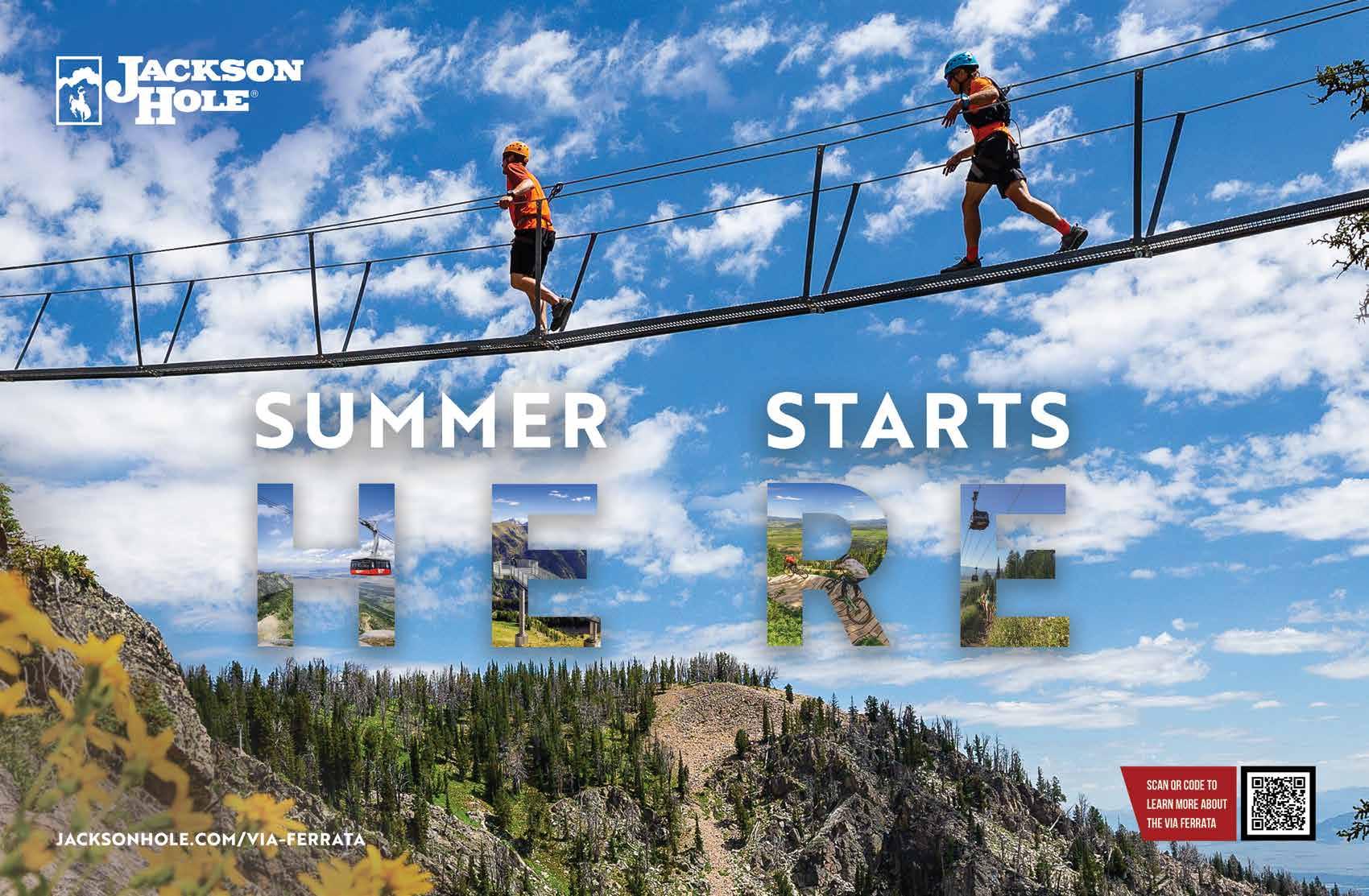

Black Diamond’s Alpenglow Hoody is a fullcoverage, lightweight SPF layer (SPF 50+) with in-fiber cooling technology; it reflects 71 percent of near-infrared rays and reduces the wearer’s perceived temperature. $95, available at Black Diamond, 160 W. Pearl Ave.
Icemule’s Pro soft-sided coolers—available in 23- and 33-liter sizes—retain ice for 24 hours. With backpack straps and a drybag-style roll-top, they are easy to carry and water- and sand-resistant. From $135, icemulecoolers.com
We take our Kammok Roo Single Recycled Hammock everywhere, so we’re ready to nap anytime the desire arises. Only 11.4 ounces, it stuffs down to the size of a softball but holds up to 500 pounds. $75, kammock.com
The Therm-a-Rest Air Head Lite Pillow has a shape designed to fit into the hood of a sleeping bag, but we’ve found it fits perfectly into a hammock too. It takes only a few seconds to inflate and packs down to about the size of a stick of butter, which is also about equal to it in weight (two ounces). $42, available at Teton Mountaineering, 170 N. Cache St.
Because you don’t always want to hammock in the sun, consider the Rumpl Original Puffy Blanket, which is the perfect weight to keep you comfortable during a sunset hammock or when hammocking in the shade. From $110, available at REI, 520 W. Broadway Ave.
As soft as they are stretchy, Nathan Sports’s 365 Joggers are perfectly named. We’d totally wear them every day of the year and always wear them when we’re looking to maximize comfort. From $85, nathansports.com



While we wouldn’t pack Decathlon’s Quechua MH500 folding camp chair for a backpacking excursion (it weighs just over two pounds), at half the price of its lightweight competitors, we love it for picnics on top of Snow King or along the Snake River. $60, decathlon.com
Help your feet recover in comfort with Hoka’s Ora Recovery 3 Slide, which comes in more than 20 color combinations and has been improved over earlier models with added breathability. $60, available at Skinny Skis, 65 W. Deloney St.
HydroFlask’s 12-ounce Cooler Cup is a goodlooking insulated can cooler that converts to a cup. $25, available at REI, 974 W. Broadway Ave.
Hydration leader CamelBak perfected drinkware of a different sort with its Horizon Cocktail Shaker. Made from insulated stainless steel, the 20-ounce Horizon brings style and sophistication to your bar, whether at home, a campsite, or on an SUP on Sting Lake. $40, camelbak.com
Tifosi’s Swank line of sunglasses are at home on the trails, but their light and durable Grilamid TR-90 frames, shatterproof and scratch-resistant lenses, variety of color options both frames and lenses come in, and affordability make them perfect for protecting eyes while relaxing. From $25, available at Hoback Sports, 520 W. Broadway Ave. and at tifosi.com
Stio’s Shifter Shirt has performance features that make it trail-worthy (moisture wicking and stretch), but its fun prints are 100 percent relaxation. The Jackson-based brand’s CFS Drifter Shorts have stretch, too, so whatever form your lazing about takes, they can handle it. Shirt $99, shorts $59, available at Stio, 10 E. Broadway and at stio.com JH

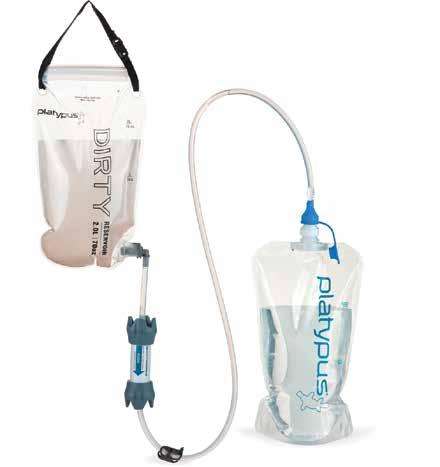
WHAT IS IT
Fill the 4-liter “dirty” bag of this gravity-fed water-filter kit, connect it to the high-flow filter and “clean” bag, hang it so gravity can do its thing, and walk away. Within minutes, you’ll have filtered water.
STRENGTHS
No pumping or squeezing required; the bags can be converted to a solar shower.
WEAKNESSES
This doesn’t kill viruses, and it can be difficult to fill the bag in shallow water sources.
BEST FOR Effortless water filter for small groups.
DETAILS
$135; available at REI, 974 W. Broadway Ave., and rei.com

A pump purifier capable of treating 2.5 liters per minute with a hollowfiber cartridge that is good for more than 10,000 liters of water.

A filter that attaches to a water bottle, straw, or, for the lightestweight option, an included soft-sided pouch. Fill your chosen vessel with dirty water and then squeeze or suck the water through the filter, and it’ll be 99.99999 percent free of bacteria and protozoa.
Meets the testing standard used by the U.S. military for removal of viruses, bacteria, protozoa, and sediment from “worst-case” water conditions; the pump is selfcleaning so no backflushing or filter scrubbing is ever required.
While this pump is faster and easier than other pumps, pumping is still more work than gravity, UV, or straw filters; the price.
Users who don’t mind the size (about as big as a 16-ounce water bottle) and weight (1 lb., 1.3 oz) since they come with ultimate filtration and durability.
$390; available at backcountry.com
This filter fits in the palm of your hand and, with the 16-fluidounce collapsible Mylar foil pouch it comes with, weighs only 2 ounces.
We’re still looking for one.
Adventurers looking for an affordable, lightweight, easy-to-use filter.
$30; available at moosejaw.com

EDDY + FILTERED BY LIFESTRAW

4 5
This 32-ounce stainless steel water bottle has a lid with a built-in LifeStraw hollow-fiber filter, which, through two stages of filtration, removes bacteria, parasites, and microplastics.
A rechargeable purifier that uses ultraviolet light to scramble the DNA of living organisms in water so that they can no longer reproduce and make you sick.

KATADYN MICROPUR MP1 WATER PURIFICATION TABLETS
6
Chlorine dioxide tablets that kill bacteria, viruses, and cryptosporidium—a parasite that causes a diarrheal disease you definitely don’t want to get.
Fill the bottle with questionable water, screw the LifeStraw lid on, and start sucking through the straw filter—about as easy as filtering water can be.
Easy to use: insert the UV light into your water bottle, press a button, and gently swirl the light around for 60 seconds (.5 liter) or 90 seconds (1 liter).
These are lightweight and extremely packable, can’t break, and can treat all quantities of water. (1 tablet does 1 liter)
Hard sided and weighing 1 pound, 1 ounce, this isn’t for devotees of fast-and-light backcountry travel.
Stylish hydrating on the go.
UV disinfection deactivates living organisms— virses, spores, cysts, bacteria—but doesn’t remove particles. Also, if it breaks while you’re in the backcountry, you’re hosed.
Areas where the water doesn’t have sediment or particulates and in which you’re carrying purification tablets, just in case.
It takes 4 hours for the tablet to work its magic. Also, these tablets leave water with a chemical taste. (The Aquatabs brand of tablets have less of this taste, but Aquatabs don’t kill crypto.)
Back-up. We always have these in our backpack in case something happens to our main purification/filter.
$70; available at Teton Mountaineering, 170 N. Cache St., camelbak.com
$130; available at REI, 974 W. Broadway Ave., and rei.com
From $11.95 for 20 tablets; available at outdoor shops around the valley JH
RISING UP FROM the sage and grasses of the National Elk Refuge’s prairielike expanse immediately east of U.S. Highway 89, a lone cottonwood tree stands tall, casting a shadow over a stretch of Flat Creek. Today, the tree bears a nickname among local guides and tourists as the “eagle tree,” for its propensity to serve as a perch for the birds of prey. Its more official title is the Winegar Tree, after a family of early pioneers who settled in the area in 1909 and likely planted the tree.
Willis L. Winegar was an Idaho butcher shop owner when he had a chance to deliver groceries to Jackson Hole in August 1897. After a prosperous season for the shop, Winegar asked his wife, Alice, if she would move to Jackson Hole. The family, which included eight children, purchased the Frank Woods ranch, today part of the National Elk Refuge. Recollections from Alice’s diary that were published in a 1965 edition of The Jackson Hole Guide said that the family moved to Jackson Hole on Thanksgiving Day, and that snow on Teton Pass made crossing it take three days. W. L. Winegar was reported to have been a guide in Yellowstone National Park and Jackson Hole
for many years and was also the bishop of the Jackson Ward of the LDS Church from 1915 until 1921.
“To our knowledge, their house was located near that tree,” says Raena Parsons, visitor services manager at the National Elk Refuge. “There was originally more than one tree, but some of them have died over the years. And as far as we know, the cottonwoods were planted by that family.” In the 1930s, the Winegars sold their ranch (the National Elk Refuge bought it), and they relocated to Salt Lake City. When the family began preparations to sell, a 1938 Jackson’s Hole Courier article stated, “The Biological Survey has an option to purchase the property. Addition of this ranch to the Biological refuge will complete the project on the west line and permit the erection of remaining section of fence.”
The Winegar Tree is easy to spot. Driving north out of the town of Jackson, about when you pass the National Museum of Wildlife Art, look toward the east and Sheep Mountain. The lone tree is the Winegar Tree. JH
One tree on the Elk National Refuge has a long history.

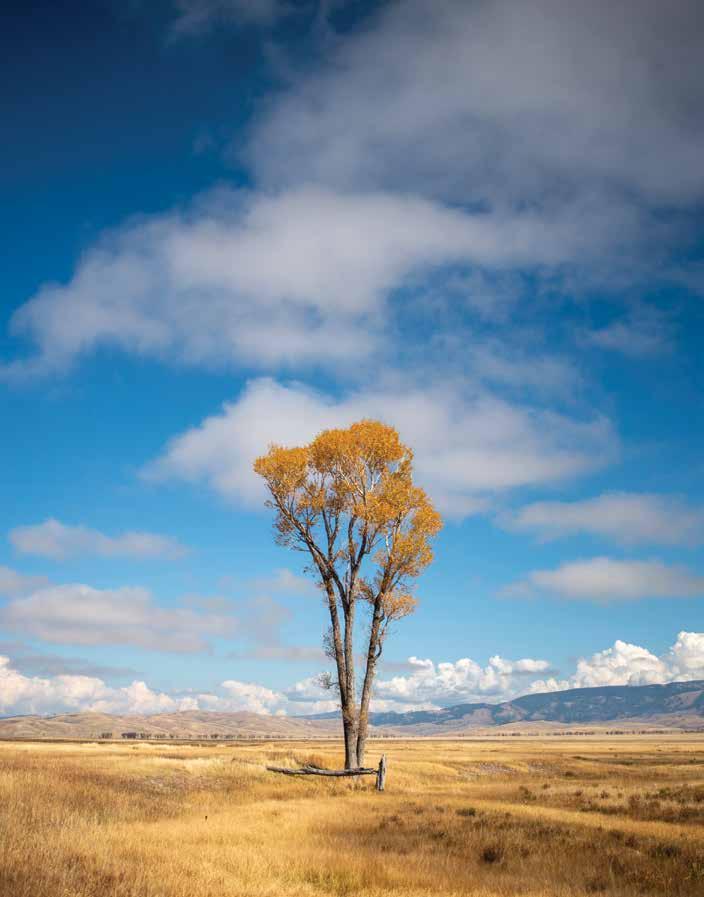
“I am a Best Friend of the BTNF by exploring the forest with friends and developing a sense of conservation through appreciating this land. I share my outdoor knowledge with other Spanish speakers in short films about outdoor education that you can find on btfriends.org.”
FIO LAZARTE, TCSAR FOUNDATION MEMBER AND BFF OF THE BTNF SINCE 2007



“I’m a Best Friend of the BTNF by respecting the land and the different types of users on trails. I practice Leave No Trace principles and am kind to other users. The goal is for all of us to play nicely on public lands. I support land managers creating opportunities that open the forest to everyone.”
— JOE STONE, STIO AMBASSADOR & BFF OF THE BTNF SINCE 2013 @MEETJOESTONE

“I’m a Best Friend of the BTNF by teaching my kids about responsible recreation—to stay on trails, pack out their trash, give wildlife space, be kind to others, and to overall respect the land. I do these things too, and also plan ahead and know conditions before I go.”
— TIM FARRIS, BTNF TRAILS AND WILDERNESS SPECIALIST, JACKSON DISTRICT & BFF OF THE BTNF SINCE 2006



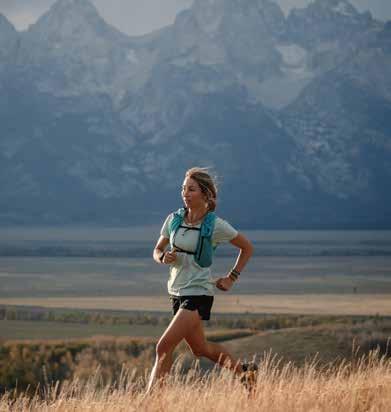
“I am a Best Friend of the BTNF by sharing knowledge with current and future generations of this incredible ecosystem. It’s our responsibility to protect this wild place we are so fortunate to have access to by exploring it with awareness and recreating with care. We can practice reciprocity with the forest by leaving trails, campsites, and other areas better than how we found them, learning about the ecological community and educating others to be inclusive and to use Leave No Trace Principles.”
— KELLY HALPIN, PROFESSIONAL ATHLETE & ILLUSTRATOR & BFF OF THE BTNF SINCE 1986
@KYEHALPIN

Are you a BFF of the BTNF? Connect with us on Instagram — @bridgertetonfriends — and tell us why.




In the two years since Jackson local Deirdre Griffith won the epic Mongol Derby—a 1,000-kilometer equestrian endurance race that recreates the horse messenger system developed by Genghis Khan in 1224—the longtime equestrienne has been busy. She helped to spearhead the Parental Mental Wellness program at St. John's Health; earned recognition as one of the valley’s top-producing realtors; continued to raise two daughters, Lilah, 8, and Delaney, 6, with husband, Vance; and trained horses at the family’s rural property south of town. If there’s a common thread in these seemingly disparate accomplishments, it is Griffith’s passion for doing hard things and the discipline she has in all of her preparation.
Take the Mongol Derby. After the Covid-19 pandemic canceled the race in 2021, the year she originally intended to compete, Griffith tacked another 12 months of training onto her regimen. This meant an additional year to contemplate everything that could go wrong and to draw out her exhaustive physical training. “Two and a half years of preparation was grueling and emotionally difficult to manage,” Griffith says. “But I was dedicated. I kept at it and was really disciplined, which put me in a great position when the time came for the race itself.”
Griffith credits much of her discipline to having grown up riding horses. “I cannot remember a time when I did not ride,” she says. “Horses have always been the constant in my life.”
Horses are one of the best things for a teenager. They teach humility and responsibility. They also level the playing field for kids coming from different backgrounds." "
Growing up in Bolinas, California, Griffith trailed her older sister at the barn. She discovered horse packing and Western riding as a freshman at the Thacher School in Ojai, California. Upon arrival at the private boarding school, Griffith enrolled in its renowned horse program and was assigned a horse to care for, for the duration of the school year.
“Horses are one of the best things for a teenager,” she says. “They teach humility and responsibility. They also level the playing field for kids coming from different backgrounds. Horses don’t care how much money your parents have or what kind of house you grew up in. The horse only cares about how it is treated.”
Once she discovered packing, a term used for loading horses and mules with equipment that can range from backcountry camps to construction materials to hunting equipment and more, and took her first overnight, she was hooked. And though she was only 14 at the time, the experience positioned her for a first career working as a packer for various outfitters in California, Colorado, and Wyoming. In those roles, she worked with horses and mules. “Packing is equal parts science and art,” she says. “Loads have to be perfectly balanced on each side, and the weight must be appropriate for the animal’s size and strength.”
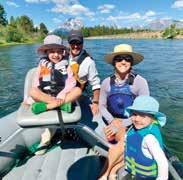
Listen to your body. “Postpartum depression is a hard thing to identify,” she says. “You don’t necessarily know you’re going through it because the hormonal changes are big and you’re already exhausted. But if something feels even a little off, listen to that and be willing to seek help.
Rest. “In Jackson, a lot of social life revolves around hard-charging athletic pursuits; you’re not meeting for coffee, you’re meeting to hike Snow King or ski. But when you have a baby, you have to take some time to recover, even if there’s a sense of missing out.”
Get outside. Griffith rode throughout her pregnancies and when her daughters were little. Whether your balm is horses, hiking, biking, or something else, make time to regularly be out in the fresh air.
Don’t compare. Social media reels can make you feel like the entire world is passing you by while you’re inside learning to become a parent. Ignore them if you can, and if they’re too distracting, delete the apps from your phone altogether.
Recognize the gift of sharing your world with your baby. “Having kids has made me slow down in my outdoor pursuits, but I actually enjoy them more because I am sharing them. ”
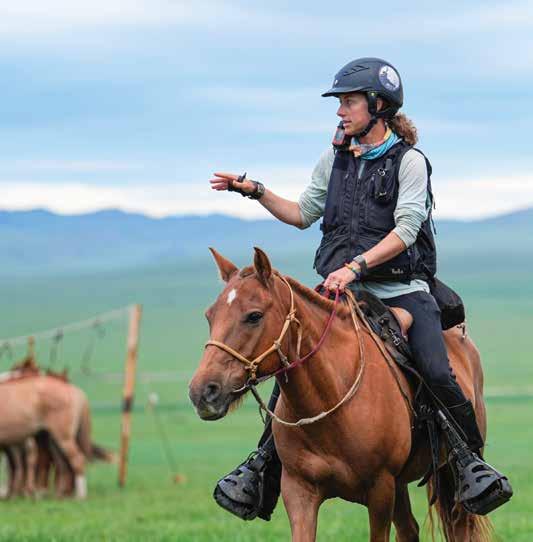
More, packers have an arsenal of hitches—or knots—that they use, and they must also know how to keep a horse or mule healthy and nourished in the wilderness, far from modern conveniences. This entails everything from veterinary medicine to horseshoeing, as well as picking campsites that are protected.
Horse-packing trips allow riders to go deeper into the wilderness than they can on their own two feet, and it affords a certain amount of luxury; the pack animals facilitate bringing in nice food, a big stove, and comfortable bedding. Packers must also be problem solvers. Camps must have adequate grazing and water for the animals, and have terrain that is conducive to keeping the animals there—which sometimes entails setting up a portable electric fence. Other times, it might mean
tethering one horse and allowing the others to roam. Despite a packer’s best efforts and expertise, an animal may wander, and the packer needs to excel at tracking them down and returning them to camp.
The work ethic that made Griffith a successful packer and long-distance equestrian race champion helped fuel her massive fundraising effort to establish a program to screen new parents for postpartum depression at St. John’s. Those who show signs of the common ailment will be connected with a mental health professional within 24 hours. Having suffered from postpartum depression after the births of her daughters, Griffith struggled to find professional help when it might have been most effective—in the early days of new parenthood. Once she realized that her lack of enthusiasm might be
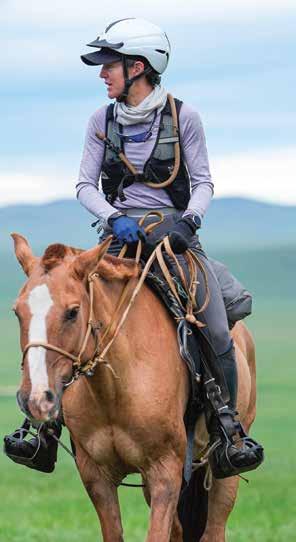
a sign of depression—and not simply the exhaustion that comes from caring for an infant—she spent hours cold-calling therapists while caring for the baby and continuing to work. Had the Parental Mental Wellness program been in place when she was a new mother, “everything would have been much easier,” she says.
Now, having accomplished two goals—winning the world’s most difficult long-distance equestrian race and helping launch this valuable community resource—Griffith is beginning to contemplate her next big challenge.
“I don’t know what it will be, but whatever I do next will be out of my wheelhouse,” she says. “A triathlon or long-distance running. Something that pushes my boundaries. Horses are my comfort zone, and I think you really grow when you step outside of that.” JH
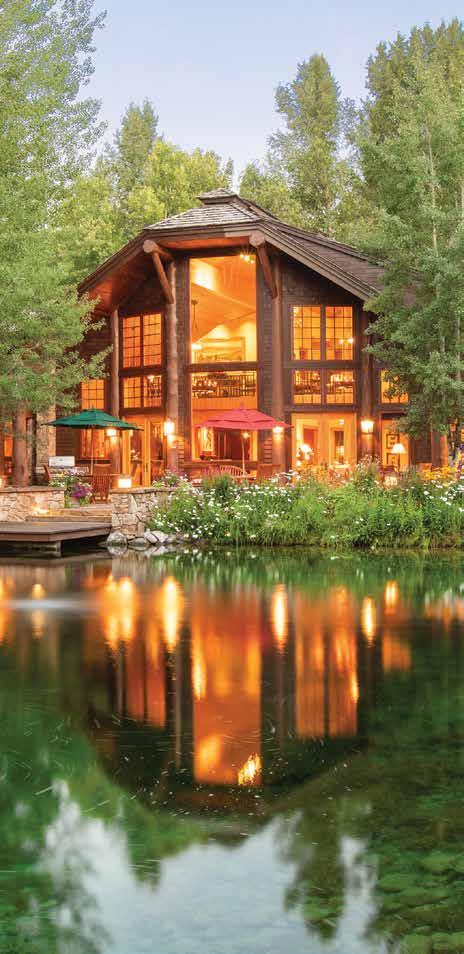
In 1991, soon after joining the staff of the BridgerTeton National Forest as a wilderness planner, Linda Merigliano was dispatched to the tiny town of Cokeville, Wyoming, to speak at a meeting of snowmobilers about why snowmobiles aren’t allowed in designated Wilderness Areas.
“I said, ‘Northwestern Wyoming, this is wild country. So, logically, we’re going to have a lot of wilderness here. In Florida, you grow oranges so, there’s oranges down there. And there’s wilderness here.’
They didn’t like that analogy,” she says with a laugh.
Since then, Merigliano’s public communication skills have improved as she has deftly navigated, arbitrated, and negotiated many of the thorniest issues that have arisen over local public lands in the last two decades. As the recreation program manager for the Bridger-Teton—the fifth largest national forest in the Lower 48, which is also adjacent to two wildly popular national parks—Merigliano oversees the complex and constantly tested interface between eager forest fun-seekers and 3.4 million acres of remote, rugged country. Her experiences have

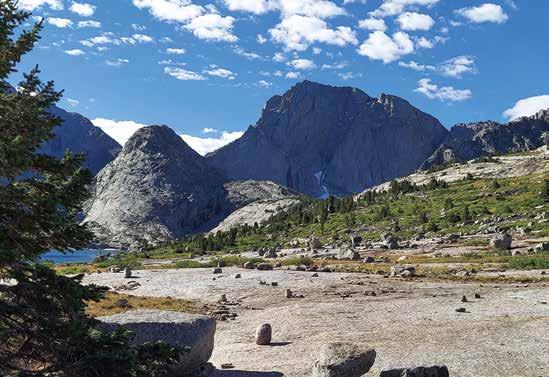
led her to become locally renowned for what can only be described as wilderness diplomacy.
You’ll find very few people in Jackson Hole who have the reverence for the Wilderness Act of 1964 that Merigliano has. As she tells it, she was practically born into it. Growing up near Schenectady, New York, her first favorite forests grew on the slopes of the Adirondacks, which, she points out, were crucial inspiration for Howard Zanhiser, lead author of the Wilderness Act.
Merigliano started her career as an Adirondacks trail worker while on summer break from Cornell University, and it was in this capacity that she met Mike Merigliano, himself an expert trail restorer. “We immediately clicked and had lots of long conversations in the woods,” she says. When she graduated from Cornell, she followed Mike to Idaho, where he was attending grad school at the University of Idaho to become a plant ecologist. In the late 70s, there were few jobs in natural resources management, so Merigliano was happy to land a job as a student conservation associate (“basically, a volunteer,” she says) on the west slope of the Tetons,
where she would spend the next 11 summers as a backcountry ranger. “I know the west side of the Tetons really well,” she says.
In the off-season, she and Mike worked at Grand Targhee Ski Resort as ski instructors, lift operators, front desk attendants—whatever was needed. Money was scant and jobs were scarce, especially on the west side of the Tetons. “In Jackson, we were all known as the pigs from Driggs,” she laughs.
In the mid-80s, Linda also attended grad school at the University of Idaho, where she steeped herself in wilderness politics. “I got hooked up with David Cole and other folks who were working on a “limits of acceptable change” system for protecting natural ecosystems from over-recreation,” she says. In 1988, her expertise in wilderness policy was noted by a fellow ranger who’d gone to work for Bruce Vento, a U.S. Congressman from Minnesota who needed “boots-on-the-ground” rangers to testify at oversight hearings about wilderness management. This gave Merigliano a once-in-a-lifetime opportunity to testify in front of Congress about her favorite subject. As the headline in the
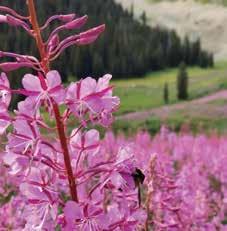
"You’ve got to figure out early in your career what legacy you want to leave, what change you want to make. Get yourself into the position where you can most affect that change, and then don’t let anybody move you out.”
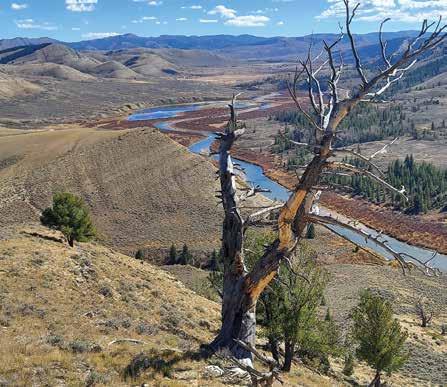
“I’ve made the drive over Teton Pass nearly 10,000 times over the last 32 years, so it has been memorable to witness the seasonal changes year after year and see what has changed and what stays the same. It is a special place— for its trails, skiing, flowers, history, moose, aspens, and scenic views.
At Deep Lake in the Bridger Wilderness, I love granite slabs and the majesty of being in an amphitheater of massive peaks.
Alkali Ridge in the Gros Ventre Wilderness has differing colors in the rock formations, views of the Tetons, a great view of Crystal Creek slide and the Gros Ventre River drainage, and I’ve followed the tracks of lions there."
Casper Star Tribune reported, “Forest Service not doing enough for wilderness, rangers tell panel.”
Fated to do enough, or more, Merigliano was soon recruited by the Aldo Leopold Wilderness Research Institute to create wilderness conservation training courses for Forest Service officers around the country. In 1991, she was invited to join the Bridger-Teton as a wilderness planner, and in 2000, became the forest’s recreation program manager.
Tom Kovalicky, former forest supervisor for the Nez Perce National Forest,
had previously told Linda, “You’ve got to figure out early in your career what legacy you want to leave, what change you want to make. Get yourself into the position where you can most affect that change, and then don’t let anybody move you out.” Linda took this advice to heart and has stayed in the recreation manager position since the turn of the millennium, navigating an unending string of controversial forest recreation issues.
First, there was the increasingly lawless nature of the Snake River, so Merigliano focused on writing a new Snake
River Plan and establishing the Snake River Fund, a happy collaboration with local donors who came forward to cover the costs of improved boat ramps and parking lots. Then there was the troubling expansion of illegal mountain bike trails on Teton Pass. At the time, Merigliano thought, “We’re not going to just play this cat-and-mouse game of trying to close trails when they’ll just be opened again.” She recruited her friend Keith Benefiel, a local biking icon, to negotiate with the “Teton FreeRiders” to compromise on a settled trail system that included the best of the new trails.
“I got a lot of calls from Forest Service people across the nation,” Merigliano says. “They were angry. ‘What the hell are you doing allowing downhill bikes in the forest?’ This was totally new at the time. Looking back, we could have made some slightly different decisions, but the illegal trail building ceased.”
Not long after this, Merigliano stepped into the morass of creating a new Motorized Travel Plan for the northern half of the BTNF. Putting new limits on off-road vehicles invited backlash, but Merigliano wisely teamed up with the two local businesses who rented off-road vehicles to promote the plan. “So, they were saying good things about it in the paper, which was instrumental,” she says. When the winter plan was implemented, there were no appeals—rare in such a process.
With the pandemic came a blizzard of new problems, thanks to an explosion of dispersed camping. The Forest Service’s solution is what Merigliano considers her proudest career accomplishment: the Ambassadors for Responsible Recreation. Facilitated by funding from the nonprofit Friends of the Bridger-Teton, these volunteers live at the busiest dispersed camping areas in the northern part of the BTNF and monitor the areas while also educating campers about how to practice responsible recreation. They quickly proved their value by quenching hundreds of abandoned campfires in their first few summers. Soon, Merigliano will be tackling the issue of people on
electric mountain bikes wanting increased access to trails. “The questions are: Where is the appropriate place for this? And, how do we set it up so that we’re not regretting our decisions down the road?” she says.
At 65, Merigliano is feeling the tug of retirement (in which she hopes to spend her days as a local trail ambassador), but she doesn’t want to take herself out of the conversation too soon.
“A lot of people who go into natural resources aren’t real comfortable with working with the public, and that is 100 percent of the job,” she says. “The public has to be involved. It’s their land, right? And I have this naive optimism that with enough education and information, people do the right thing.”
As a seasoned backcountry ranger and a lifetime wilderness explorer, Merigliano never leaves the house for a hike without these essentials.

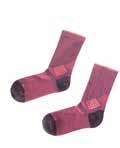
1. A HEADLAMP: “It seems like you’re always walking out of the woods in the dark,” she says.
2. SOCKS. “This is for overnight trips. I remember all the rangers used to say that a pair of dry socks was essential. You have to take care of your feet.”

3. A PAPER TOPOGRAPHIC MAP (as a backup for GPS apps on smartphones). “Mike and I were in the Winds this summer and ran into a group trying to navigate Jackass Pass with their phones. It’s hard to see the big picture on a phone, and they were confused. I remember we pulled out our paper map to show them where they were. Paper maps are always handy, but they’re especially useful if your phone dies.” JH
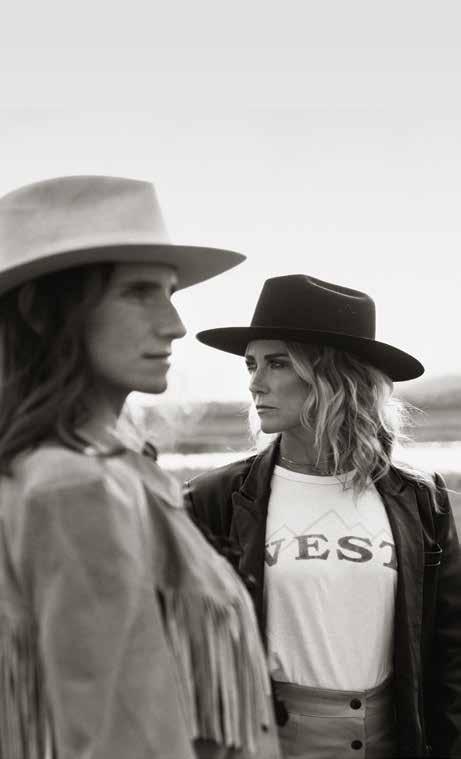
The ‘last of the old cowboys’ chronicles his life of adventure in three books.
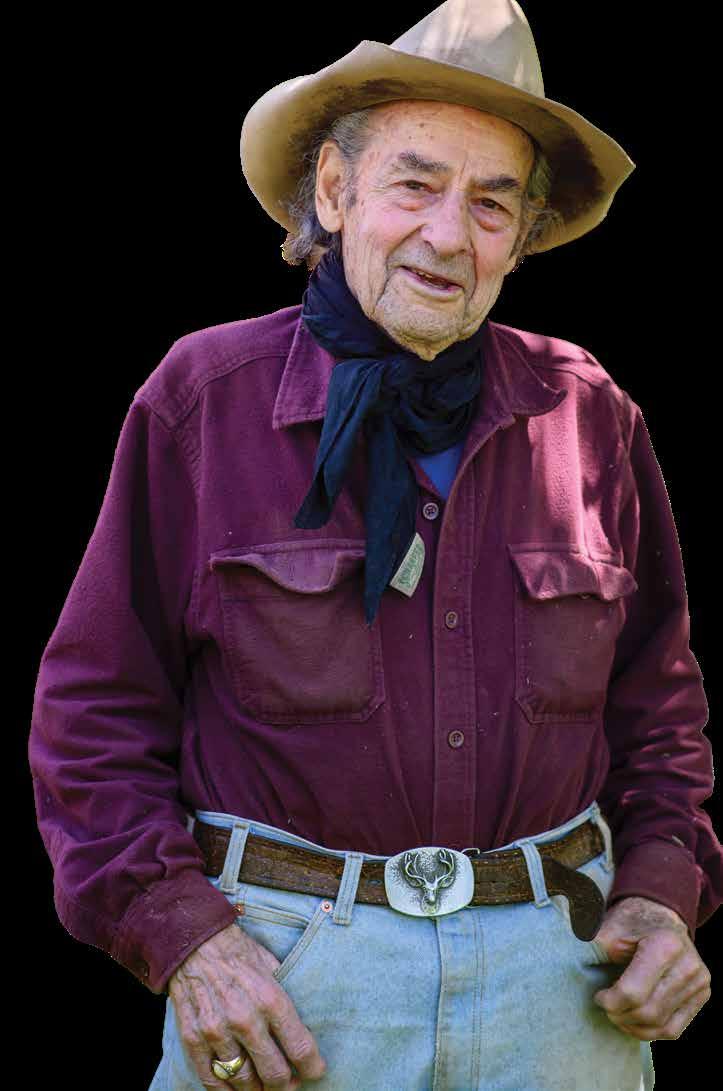
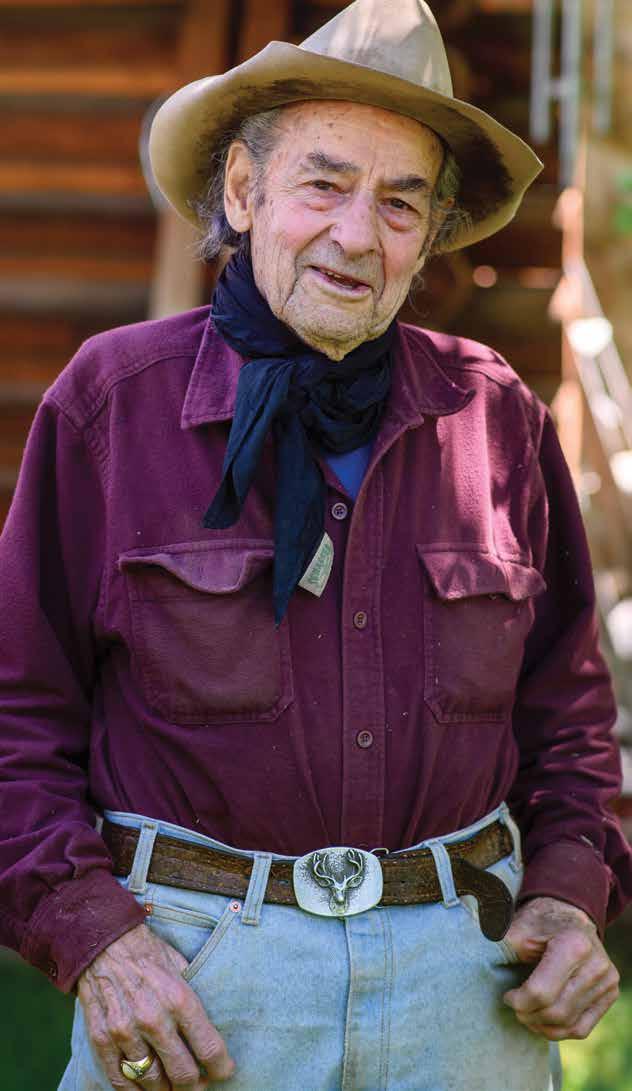 HELLO
GAP PUCCI
HELLO
GAP PUCCI
Dressed in a maroon button-down shirt, kerchief, and sheepskin vest, he tosses forkfuls of hay into a corral beside his cabin, tucked into a draw by the Camp Creek elk feed ground. One wall is adorned with horseshoes he fashioned with a forge and anvil, while the inside teems with stuffed wildlife mounts, bear hides, firearms, old leather saddles, and horse tack.
He may not have been on the Lewis and Clark expedition, but Gap Pucci seems to have stepped out of the pages of mountain man history from a hundred years ago. As a hunting and pack-trip outfitter, he ranged through the most remote parts of the
His given name is Gaspari Puccio, the same as his father and grandfather; it’s Americanized into Casper Puche or Pucci. “Gap” is a common Italian nickname for Gaspari.
Gros Ventre Wilderness for four-plus decades, guiding clients in pursuit of elk, deer, bears, and bighorn sheep. He has been knocked down by a bear; nearly drowned in creek crossings; been bruised and broken by falls on horseback; and survived blizzards, landslides, and earthquakes. He has a five-inch plate in his neck from an equestrian wreck: “Not one time, it was too many times!” he says.
All of this was highly unlikely for a child of Sicilian immigrants raised


Ranked #1(2021) and #2 (2022) in Wyoming for individual residential sales – Real Trends



near Philadelphia. His given name is Gaspari Puccio, the same as his father and grandfather; it’s Americanized into Casper Puche or Pucci. “Gap” is a common Italian nickname for Gaspari. A former bodybuilder who once had Olympic dreams, he served in the Army and went to Penn State for a year to become a farrier. After sheepherding and roaming parts of the West in the late 1960s, he came to Jackson Hole to work on Don “Doc” MacLeod’s Granite Ranch and then ran Granite Hot Springs for 25 years, mostly living in a cabin with no electricity or running water. He later moved to Camp Creek and started Crystal Creek Outfitters. Now retired and approaching 89 years old, he recently finished his third book, Jackson’s Hole Horse and Family Adventures, due out this year.
Because a conversation with Gap is like the proverbial drinking from a firehose, with enough information and anecdotes to fill an entire magazine, this interview has been edited for brevity.
Q: How did serving in the Army prepare you for Wyoming?
GP: I was part of a Cold War strike unit in Point Barrow, Alaska, during the 1950s. It was a bad time. We lived in a bunker and were on duty 24 hours a day. It was dark all winter. It got down to 62 below. I learned a lot about survival. When I left Alaska, I said, “I’ll never say it’s cold again.”
Q: What was it like living up Granite Creek all those years? Was it as idyllic as it sounds, or was the reality harsher?
GP: You got to remember I was young. It was an adventure. That’s why we live here—the adventure. That’s what I came for, and I sure I got it!
Q: What are three things every adventurer should carry into the wilderness?
GP: By all means, carry fire. If you get lost, build the biggest damn fire you could, and stay put. I did that lots of times. Two, some sort of medication, at least aspirin, and something to stop bleeding. A neckerchief can be used for a tourniquet. Three, knowledge—let somebody know where you’re going.
Q: Throughout your outfitting career, you relied on Morgan horses. What distinguishes the breed?
GP: They’re the most powerful. They’ve got the most endurance and have a good brain. When you’re in snow up to your chest, you’ve got to have a good horse busting trail. No wonder they still use the term “horsepower!” A good mountain horse, they’ll save your life over and over.
Q: What advice do you have for someone new to hunting preparing for their first elk hunt?
GP: Be quiet. Ever notice the size of their ears? We’re talking wilderness elk—they know you’re there. Know your rifle well, and listen to your guide. Practice following crows in your scope. You should be able to put a sparrow in the crosshairs. So often I’d have clients coughing, sneezing, talking, tromping on pine cones. I’d say, “If those elk could shoot back, you’d be dead.”
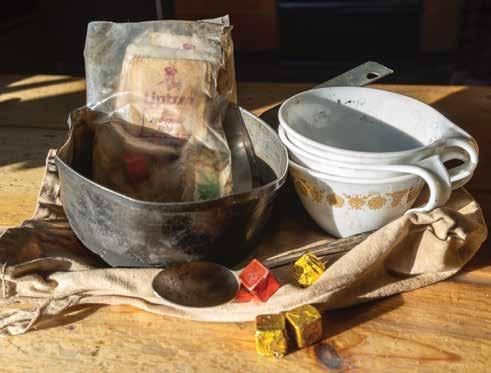
On his well-worn “mountain saddle,” outfitter Gap Pucci estimates he rode 45,000 miles up and down some of the most rugged terrain in the Gros Ventre Wilderness. His high camp was at 9,000 feet at the base of Crystal Peak, a 17-mile ride from base camp with seven creek crossings. He always carried with him a small essayer’s bag (“You’ve seen them in all the Westerns,” he says) with a few pieces of gear more valuable than gold in case of an unplanned night out, including a lighter, propane, waterproof matches, or Sterno ethanol gel; and a two-cup pot with cups, tea bags, and/or chicken bouillon stashed inside a plastic bag. “If you get out there in a bad storm, you can get a fire started. Make a big fire, as big as a pickup truck,” he says. With that and hot drinks, “You’ll be very comfortable that night, or two. You feel so much more comfortable when you’re prepared, not panicky. It doesn’t weigh anything. If you’re guiding, the clients feel good thinking, ‘This guy knows what he’s doing.’”

2 cups flour 2 tbsp sugar 3/4 tsp salt
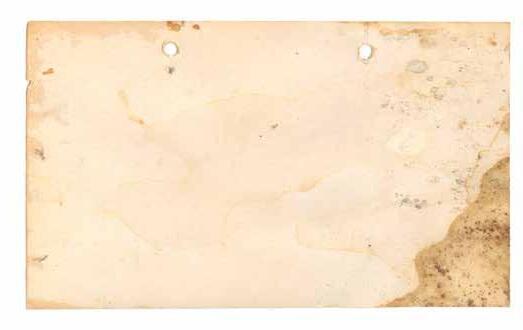
Eating well at camp is a must for high-country adventures. This recipe Gap’s godfather brought back from World War II, and Gap stole it from his mother. He calls these pancakes a “wholesome” crowd pleaser. “They’re real stuff. You can’t stop eating them.”
1 1/2 cups milk 1/4 cup oil, melted shortening, or margarine
Mix all ingredients well and ladle into a heated, greased skillet.
Flip when bubbles appear in the batter. (Serves 4)
Q: You’ve devoted a good part of your life to storytelling, oral and written. Did you study English?
GP: I barely got through school. I didn’t learn a damn thing. Teachers pushed me through because I played sports. I was there for lunch and sports.
Q: You do all your writing by hand, with a stack of thick yellow legal pads and pens collected from the bank. Is it a difficult process?
GP: I start writing on the mail, or toilet paper. Then I do an outline on the legal pads. The stories are coming out from my head to my heart and soul, to my arm and hand. You’re getting all the emotion down to the pen.
Q: You’ve written, “Most bears are peaceful unless provoked or harassed.” One of your closest calls on a hunt was being knocked down by a wounded bear. What’s it like to come face to face with one?
GP: They are so quick and powerful. They’re defiant. And they’ve got a nose and ears like radar. That bear on the defensive, he can hurt you. But if it’s wounded, you’ve got to follow it as long as you can. You have a responsibility if you shoot at an animal. You can’t leave him out there where he might hurt somebody else, like a hiker who comes along the next day.
Q: Some of your early friends and mentors were Doc MacLeod, Mardy Murie, and Neil Rafferty. What did you learn from Mardy Murie?
GP: She was really inspirational in my life. She was a preservationist but also an outdoorswoman and tough as nails. When they lived in Alaska, she and her husband, Olaus, subsisted on caribou meat.
Q: Religion is a big part of your life. You’ve spent so much time in the wilderness and had many intense experiences—was it spiritual?
GP: God was all around you. I had a lot of close calls, living like this. If life gets hard enough, you’ll learn to pray. I appreciate a beautiful sunrise, a beautiful sunset, a threefoot Engelmann spruce tree, all the wildlife. That’s part of that peace. You don’t have to be any particular denomination to feel the tranquility.
Q: Many of your stories about people are punctuated by “They’re all dead now.” What can the young people of today learn from your generation?
GP: I notice they get down pretty quick. They give up too quick. Never quit. Don’t be a quitter. Never give up. Persevere. JH

We offer safe, educational and FUN 3-hour Multi-Gun Rifle & Pistol Experiences that will strengthen connections and build memories, making your vacation or corporate event a huge success!

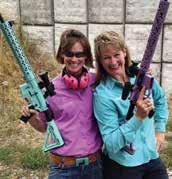



Invested in you. Invested in your home’s potential.
Morgan Buss understands the unique considerations of each homeowner and guest. She carefully balances client objectives with the goals of like-minded visitors, ensuring meaningful stays and sustainable rental revenue.

This former church—bought for $666.66—has been a community gathering spot for six decades.
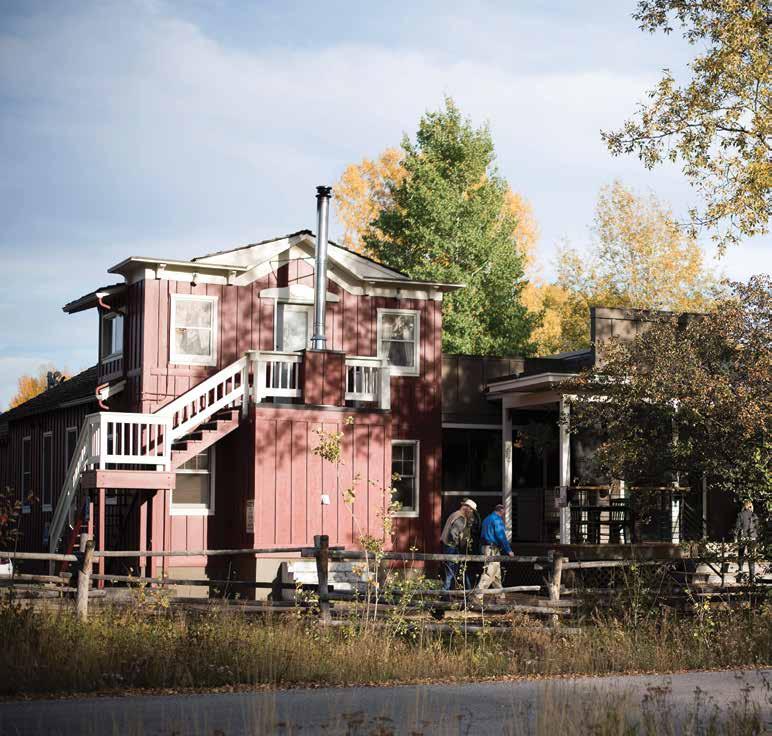
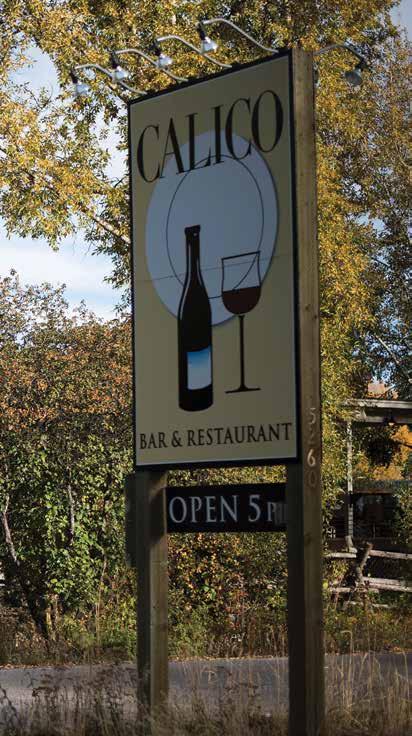
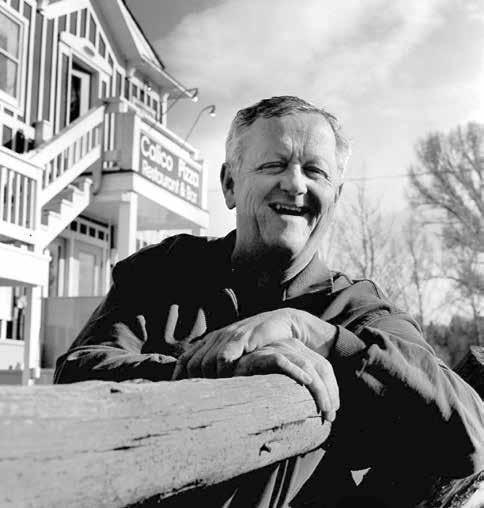
One of the oldest restaurants in Teton County is still the crown jewel of Moose-Wilson Road—an American-Italian bar and restaurant that turns 400 to 500 covers on a busy summer night. At Calico Bar & Restaurant, muted lighting and a crackling fireplace are welcome comforts on dark, snowy evenings. During the summer, parents sip wine at deck tables while kids romp on the large, grassy lawn. It’s date night with a built-in babysitter.
In a past life, Calico’s bar was a church on Mormon Row—a homesteading settlement north of the town of Jackson (read more on page 32). Built in 1905, the church had been abandoned by the late 1950s. In 1966, friends Tim Mackay and Tom Jewell purchased it for $666.66 from Grand Teton National Park, a bid that Mackay says was “actually kind of a joke.” What wasn’t a joke was that the park service accepted the bid and wanted the building moved within 30 days.
Mackay and Jewell purchased five acres on the MooseWilson Road for $15,000, and installed the former church on it with the idea of opening a beer bar and pizza parlor. They came up with the name “Calico” while driving through California buying equipment for the new restaurant; their route took them past the ghost town of Calico. “Neither of us had any pizza experience, but we had lots of experience in beer,” Mackay says. Together, the friends developed Calico Pizza Parlor’s pizza crust recipe and insisted each pie be hand-tossed.
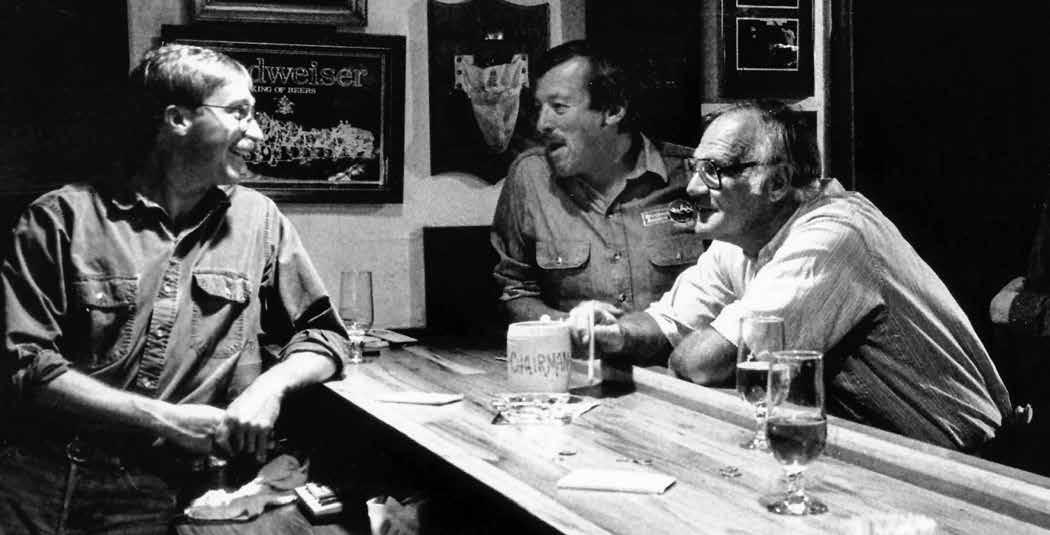
took attorneys 30 pages of paperwork to make official).
Davies expanded Calico’s menu to include pastas, sandwiches, and desserts. He also doubled the size of the restaurant, resulting in the present-day dining room and kitchen, and had the building painted a deep rust color with crisp white trim and railings. The latter was an homage to the red-and-white tablecloths of traditional pizza joints.
I’m the only guy in the history of the world who turned a Mormon church into a bar. It’s a great source of personal pride.”
JOHN BECKER "
In 1971, 1,500 square feet were added onto the church building. The addition served as the main restaurant and bar space, while the old church was used as a space for children and families. Four years later, John Becker, an early employee, bought the business. “I was scared because I was just a ski bum and a hippy,” said Becker, who passed away last winter. One of his first changes was to move the bar back inside the former Mormon church. Becker told Jackson Hole News&Guide, “I’m the only guy in the history of the world who turned a Mormon church into a bar. It’s a great source of personal pride.” Becker also turned 1.5 acres of Calico’s lawn into a garden that supplied the restaurant with more than 50 pounds of lettuce and spinach a day. (Today, Calico still has a .25-acre on-site garden that grows produce used by the restaurant.)
In 1996, Becker sold Calico to his friend Jeff Davies in a deal hashed out while skiing at Jackson Hole Mountain Resort. The men found themselves riding the Après Vous chairlift together. Becker shared with Davies that he was done with Calico. “You need to buy the Calico from me,” Davies remembers him saying. Three chairlift rides later, the men had reached a deal (which
In early 2022, three former Calico managers—Betsy Campbell, Andy Ward, and Julie Broughten—came together to buy the business. Broughten had previously invested in the restaurant in 2017, but Davies had a stipulation for her before he’d sell her a greater share: she had to work every position in the building. From the hostess stand to the kitchen, she did. “I wasn’t the greatest in the kitchen, much to Chef Cody Allen’s chagrin,” she says. “There’s nothing locals fear more than change, and we try to keep things similar to what they always have been. You can almost always count on seeing a familiar face inside Calico, which is why Calico (and the bar in particular) is like Wilson’s Living Room.”
Open at 5 p.m. daily; 2650 WY-390, Wilson; 307/733-2460, calicorestaurant.com JH
‘‘ DO IT FOR THE ‘ GRAM ’’
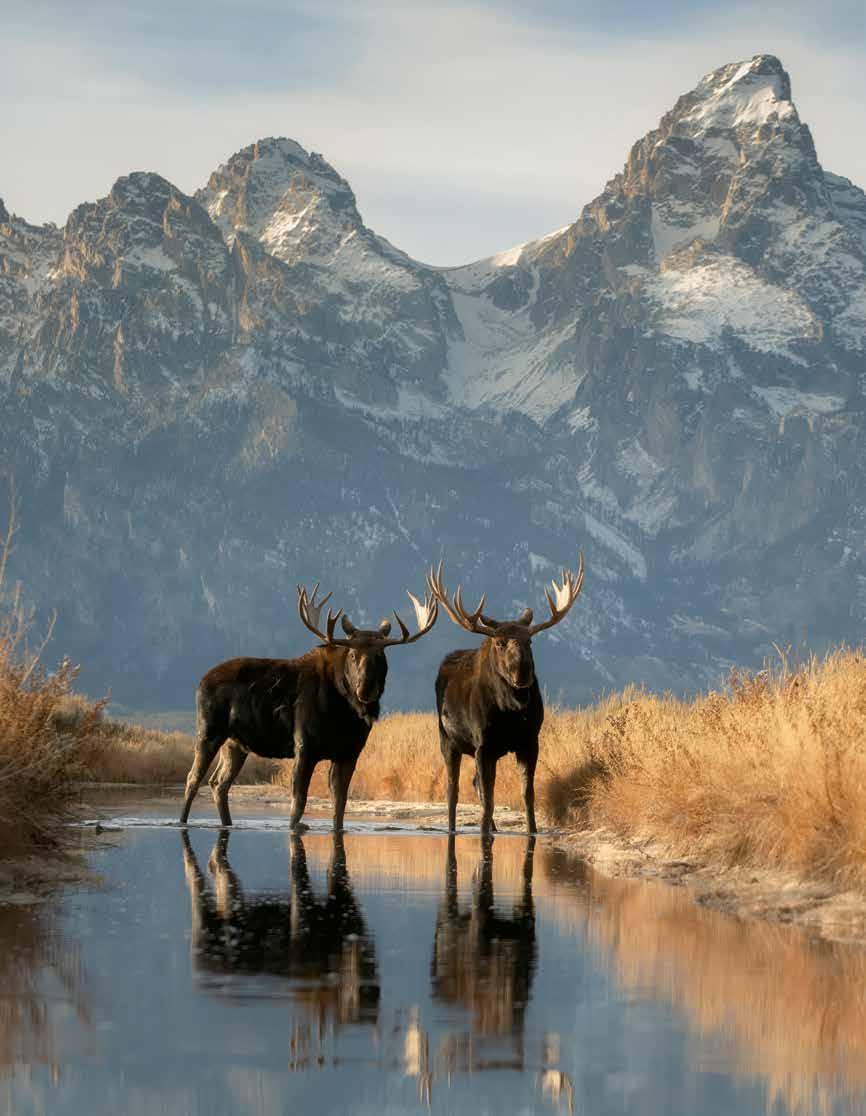
For your safetyand theirs, stay atleast 100 yards from bears and wolves and 25 yards from all other wildlife.
The factor that makes the Jackson Hole real estate market so unusual is the relative scarcity of private land. Ninety-seven percent of Teton County, Wyoming, is publicly owned—either national park, national forest, or wildlife refuge. This computes to just 75,000 privately held acres in a county spanning 2.5 million acres. The guaranteed open spaces and unobstructed views these surrounding public lands afford make the remaining private land a real treasure. Add the abundance of recreational opportunities found in and around the valley, and the quality of life one can enjoy in Jackson Hole is simply unbeatable.
Moreover, many of the properties featured here are secluded, scenic retreats located in the midst of prime wildlife habitat. Most existing and prospective property owners in Jackson Hole cherish this notion, and serve—or will serve—as stewards of nature.
One cannot put a dollar value on waking to the Teton skyline, skiing home for lunch, or listening to a trout stream gurgling through the backyard. In Jackson Hole, “living with nature” is not a fleeting, vicarious experience a person has while watching TV. Here it’s a fact of life, and we wouldn’t have it any other way.
LUXURY TOWNHOMES IN HEART OF TOWN

3,120
FEET AT A GLANCE
3
3.5
A stone’s throw from the Town Square, the Glenwood offers a mountain town retreat close to both cultural and outdoor activities. 3-bedroom luxury units with rooftop decks and the finest amenities. Please reach out for information about the second phase.
A TRUE LEGACY PROPERTY ON FISH CREEK

SQUARE FEET AT A GLANCE
8,086 8 10 UPON REQUEST BEDROOMS
Bill Van Gelder, Associate Broker 307/201-8045 ext. 8045 allenvangelder@JHSIR.com Jacksonholerealestateinfo.com
Big Boulder is a true “legacy property” meant to be enjoyed generationally, situated on the banks of idyllic Fish Creek in lovely Wilson, Wyoming. Set among the aspens, the home and guest house offer breathtaking vistas of the Sleeping Indian in a wildlife-rich 23.06 acres. This immaculate Jackson Hole-styled home and guest house were designed with sense of place in mind and are ready for a new owner to enjoy. HUFF VAUGHN SASSI 307/203-3000 huffvaughnsassi@jhsir.com


7,500,000 22-3163
Jake Kilgrow • 307/413-2822 jake.kilgrow@sothebysrealty.com 4,205 6 5
The Jackson Home Company presents this newly constructed custom home in East Jackson by awardwinning Farmer Payne Architects and New West Building Company. Classic exterior with refined interiors, including a 28-ft vaulted ceiling in the great room, chef’s kitchen, cozy fireplace, covered patio wired for a hot tub, mudroom, laundry, and junior suite on main level. Primary suite with private deck on second floor, plus two guest rooms and shared bath. Basement has living/rec room with wet bar, two guest rooms, and bathroom. Unbeatable Town of Jackson living.
JACKSON HOLE SOTHEBY’S INTERNATIONAL REALTY
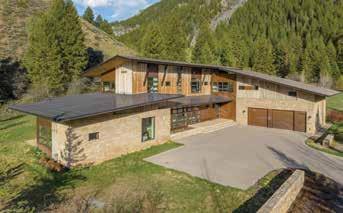
This is quintessential mountain contemporary living at the Snake River Sporting Club. Barn wood, limestone, and copper were used on the exterior of the home, providing beautiful variety and creating a modern yet rustic feel that anchors the home on its 1.14 acre lot and adjacent 1.59 acre building site. Once inside, appreciate thoughtful design, where every fixture and finish were hand-picked or built custom for the property, and select WRJ furnishes are included.
KELLER WILLIAMS JACKSON HOLE
Barbara Andrews • 307/413-6620
barb@andrews2.com andrews2realestate.com
The Mead Ranch is one of the most iconic settings in Jackson Hole. This legacy ranch land has it all: Teton views; over a mile of private, world-class Spring Creek fishing; and a range of homesites with unbeatable ease of access to the Town of Jackson. With 1898 priority water rights and approximately 73 acres outside of the conservation easement, this property affords the buyer a great deal of flexibiliy. Please inquire about potential alternative configurations.
JACKSON HOLE SOTHEBY’S INTERNATIONAL REALTY Des Jennings • 307/413-4945 des.jennings@jhsir.com
WESTERN STAR IN SHOOTING IRON
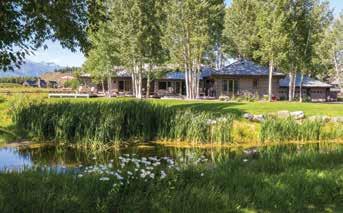
A GLANCE
3,110 3 4
FEET
10,975,000 BEDROOMS
This 3,110 sq. ft. modern, handcrafted log home is surrounded by mature landscape, a private pond, and a lush pasture with a creek running through it. Set on 8 acres of flat land, with sweeping views of the Tetons and postcard sunsets. Artfully laid out, the 3 bedroom, 3 1/2 bathroom home balances privacy and flow. The south-facing deck is ideal for entertaining and relaxing by the pond. There is a heated 3-car garage and a run-in barn with plenty of room for tack and hay. The serene neighborhood attracts wildlife, yet it is just a few miles from town, schools, and a bike path that goes all the way to Grand Teton National Park.
LIVE WATER PROPERTIES JACKSON HOLE Latham Jenkins • 307/690-1642 latham@livewaterproperties.com livewaterjacksonhole.com
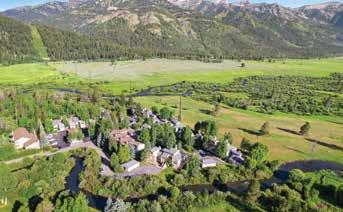

2 2.5
2,050,000
sam@mountainstandardrealty.com mountainstandardrealty.com 1,552
This charming townhome is minutes from Teton Village and has an ideal location along Fish Creek. Featuring an open layout perfect for entertaining, the kitchen is highlighted by newer appliances and a breakfast bar. The ground floor primary suite and guest bedroom are accompanied by a bonus loft perfect for a third bedroom or office space. Take in mountain scenery from the private outdoor patio and enjoy the convenience of nearby amenities and outdoor activities.
MOUNTAIN STANDARD TEAM AT COMPASS
Sam Reece • 307/203-9152
STUNNING MOUNTAIN LIVING & RENOWNED GOLF
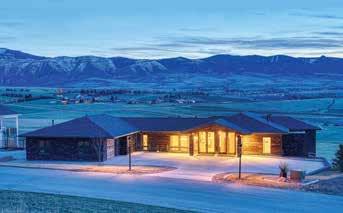
3,100 3 2.5
A Carnegie Hill landmark, 14 East 90th Street, Penthouse West, stands as the pinnacle among JER Carpenter’s esteemed residences. This historic home offers sweeping views of Central Park and the NYC skyline from every room, as well as from the 2,000 square foot private wrap-around terrace. Boasting 10-foot ceilings, two wood burning fireplaces and a greenhouse, this home is the crown jewel of Carnegie Hill, neighboring renowned institutions like Cooper Hewitt and the Guggenheim. All square footage is approximate.
NICK GAVIN PROPERTIES AT COMPASS 646/610-3055 nickgavinoffice@compass.com www.compass.com/agents/nick-gavin-properties
LOOKING FOR A PLACE TO CALL HOME?
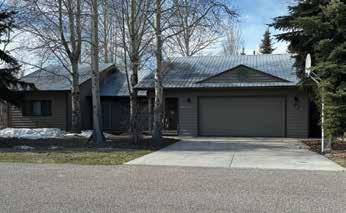
5,700 5 3.5
BEDROOMS
2,150,000 CALL
Unparalleled living and leisure at 88 Turnberry Drive in the Powder Horn Golf Community, near Sheridan, Wyoming, alongside the Big Horn Mountains. Quality craftsmanship, comfortable 2-level floorplan, gourmet kitchen, golf simulator, and theatre, featuring meticulously placed windows taking in sunrises, sunsets, and valley lights in this gorgeous home. Become part of a special community and Troon Prive’ Club with impressive amenities including 27 holes of golf, tennis, swimming, fitness. Enjoy hiking, biking, skiing and fishing in the unspoiled Bighorn Mountains.
POWDER HORN REALTY, INC.
Karen Chase, Associate Broker • 307/674-9545 hello@thepowderhorn.com www.powderhornrealty.com
BEDROOMS
1,949 4 3
2,175,000 24-559
Start each morning in this sun-filled 4-bedroom, 3-bath home. Quiet location in a popular neighborhood and just a 10- minute drive to town. Everything on one level and in immaculate condition. Additional features include cathedral ceilings, a gas heating stove, hardwood and carpet flooring. Two large decks to enjoy summer gatherings and surrounded with mature landscaping. Oversized garage and separate storage area.
KELLER WILLIAMS JACKSON HOLE Nancy Martino • 307/690-1022 nancymartino@kw.com
• Store all attractants in a certified bear-resistant container, locked car, hard-sided camper or building.
• Do not leave attractants unattended for any amount of time.
• Never feed bears. A fed bear is more likely to be a danger to people.
Virtually all scented items are bear attractants: human food, garbage, grease & dirty grills, pet food, bird seed, coolers, and toiletries.
KEEP THESE THINGS AWAY FROM BEARS

Avoid bear encounters
• Be aware of your surroundings
• Make noise (such as singing or talking loudly)
• Travel in groups

• Carry bear spray and know how to use it
• Never approach bears! Keep a distance of at least 300 feet

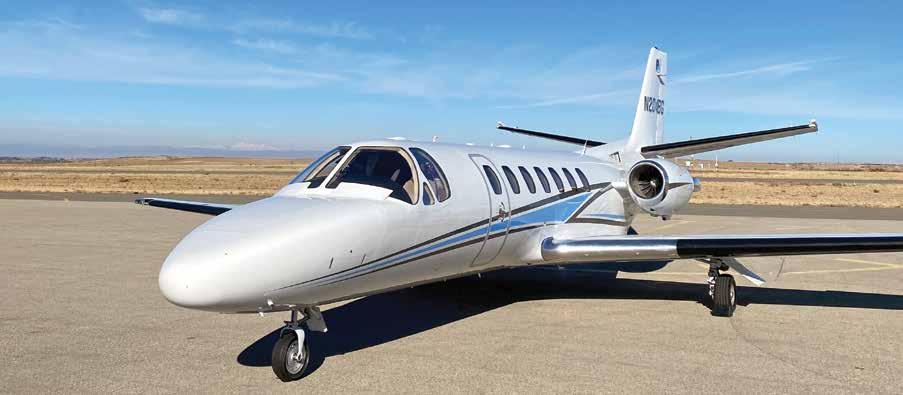


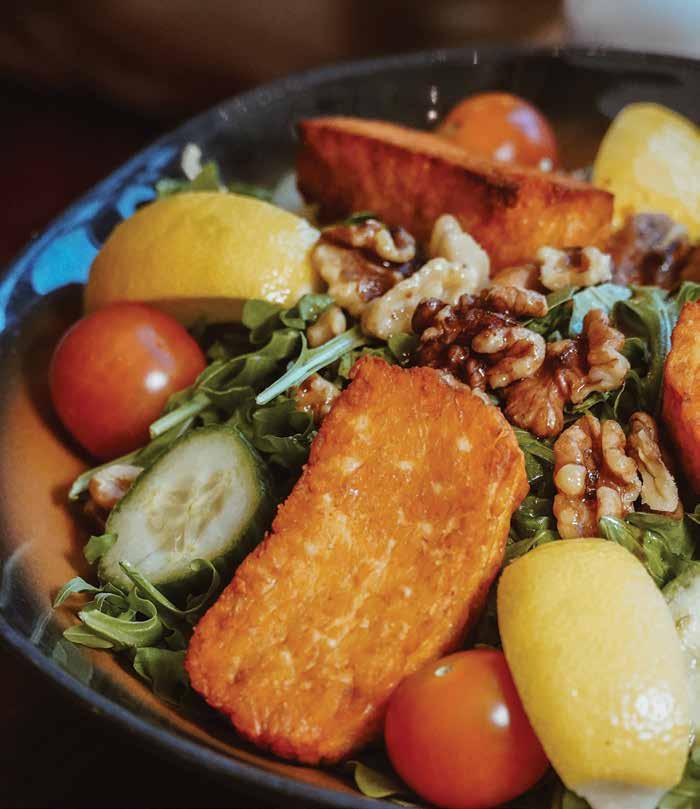
These salads are serious meals.
The West may be best known for its wild game and locally raised meats, and in Jackson Hole, salads stand by on menus as unsung heroes. Packed with fresh (and, in summer, often locally grown), vibrant ingredients, they can be as passionately composed as main courses. “The salad is not just a dish; it reflects our commitment to bringing people together through the universal language of food,” says Figs general manager Sadek Darwiche. Here are five local salads worthy of epicurean curiosity.
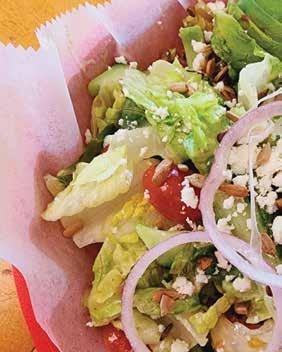
When vetting a new menu item, Healthy Being Café & Juicery owner Jessica Vandenbroeke says, “We choose dish es that provide beautifully balanced fresh flavors, complementary tex tures, and a complete nutrient profile.” The cafe’s Falafel Bowl does just that, which has made it a longstanding menu item. “I have always loved traditional Middle Eastern falafel—how healthy, balanced, and tasty it is,” Vandenbroeke says. “So, creating the healthiest version for our menu was a must.”
Healthy Being’s rendition is a dehydrated nut-based falafel crumble that keeps consumers satiated, served atop a bed of romaine and accentuated by fresh tomato and cucumbers, kalamata olives, dollops of creamy house-made hummus and cashew tzatziki, and drizzled with a zesty lemon-herb vinaigrette. “While our falafel salad meets our menu standards, we’re not the only ones who think so—it’s been our most popular salad for the past sev en years,” Vandenbroeke says. $15; Open daily 7 a.m.–6 p.m.; 165 E. Broadway Ave.; 307/200-9006, hbcafeandjuicery.com



Inspired by the mother of Marcos Hernandez, chef and owner of Streetfood at the Stagecoach, Carmela’s Chopped Salad incorporates all of her favorite flavors. Hernandez credits Carmela for teaching him to cook, and to this day, she remains a major influence on his food. When Hernandez first made the salad—romaine, cucumber, tomato, red onion, avocado, spiced pepitas, queso fresco, and jalapeñolime vinaigrette—it was for Butter, a Victor, Idaho, restaurant owned and operated by Hernandez and his wife, Amelia Hatchard. It was so well-received that they added it to the menu at Streetfood at the Stagecoach, so diners on both sides of Teton Pass might enjoy it. “The balance of the spiced pepitas, the creamy cheese, and the sweet and tangy dressing makes for a delicious salad that’ll make you forget you’re eating your vegetables,” Hatchard says. The pepitas are spiced with a blend of cayenne, paprika, cinnamon, nutmeg, and brown sugar. While one might think that the jalapeño-lime vinaigrette carries some heat, it doesn’t. “We balance the spice from the jalapeño with piloncillo, which is raw cane sugar,” Hatchard says. $14; Open daily 11 a.m.–9 p.m.; 5755 W. WY-22, Wilson; 307/200-6633, streetfoodjh.com


An unexpected delight on the menu at Local Restaurant & Bar is its Duck Salad, the centerpiece of which is a confit duck leg. The richly savory duck rests atop a bed of delicate glass noodles and seasonal mixed greens that might include romaine, tango, mizuna, green chard, arugula, radicchio, or frisée. There are also cucumbers, pickled carrots, red cabbage, cashews, crispy wontons, and cilantro. The nuttiness of the cashews mellows the tanginess from the pickled carrots, while a miso vinaigrette is both savory and sweet. Available on Local’s bar menu during both lunch and dinner, the salad may be served to patrons in the dining room upon request. $22; Open Monday–Saturday 11:30 a.m.–9 p.m.; 55 N. Cache St.; 307/201-1717, localjh.com

“Our Halloumi Salad is not just an ensemble of ingredients; it is a narrative that reflects our commitment to preserving and sharing the authentic flavors of Lebanese cuisine,” Figs general manager Sadek Darwiche says. This salad’s origins are in the cuisine of the Eastern Mediterranean, specifically in the culinary traditions of the Levant region, where halloumi cheese is a staple. “With a high melting point, this cheese embraces the sizzle of a hot pan or the sear of a grill, elevating it to the ranks of a favored meat substitute,” Darwiche says. In this salad, it is combined with cucumber, tomatoes, walnuts, pomegranate arils, fresh arugula, and a pomegranate balsamic vinaigrette. $18; Open daily 7–11 a.m., 11:30 a.m.–3 p.m., 5:30–9 p.m.; 120 N. Glenwood St.; 307/733-2200, hoteljackson.com

“Guests don’t look at the menu and think, ‘I just had a salad like that yesterday,’” says Gavin Fine, owner and founder of Fine Dining Restaurant Group, of The Bistro’s Frisée Aux Lardons Salad. In this traditional French salad, frisée is combined with applewood-smoked lardons, pickled shallots, potato, poached egg, and a classic red wine vinaigrette. “The fat from the lardons and poached egg makes a great complement to the acidity of the vinaigrette, while the frisée adds a fresh, light element to the dish,” Fine says. “Eggs are often found in salads in the U.S., but they are typically hard-boiled. Upon serving this salad, the poached egg is intended to be poked with a fork, allowing the runny yolk to spill out and be mixed with the rest of the salad. The yolk melds everything together and gives a delicious richness to the dish.” $19; Open daily 7 a.m.–close; 112 Center St.; 307/739-1100, thebistrojacksonhole.com JH
























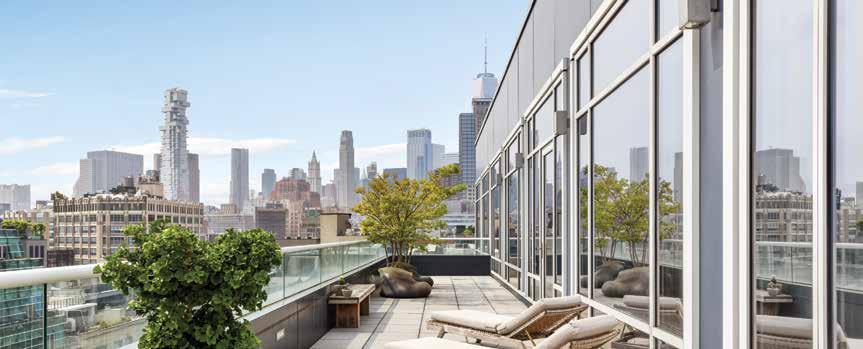
Once it hits 11 a.m. at Sweet Cheeks Meats, lunch is served. A post on the company’s Instagram story, (@sweetcheeksmeats) shows the day’s menu options. These could include the Brisket Burg, a pulled-pork sandwich, a Cubano, a grinder, or the Bliss (house-made ham, European butter, Dijon, and Swiss cheese on a 460 Bread baguette). Soon enough, a line of locals stretches out the door. “I’m looking at their lunch menu every day,” says Jason Bruni, who has been eating Sweet Cheeks sandwiches since the husband-and-wife team of Nick and Nora Phillips founded the business at the Jackson Hole Farmer’s Market in 2015. “Although I’ll still go in even when they aren’t doing any of my favorites. Then I let them choose for me. I’ve never had anything that I wasn’t stoked about.”
The menu is constantly changing because Sweet Cheeks is a wholeanimal butcher. “The driving force behind our menus are what odds and ends of meat we have in the walk-in,” says Nick Phillips. “If we’ve got 50 pounds of beef shank, we’ll do some sort of braise. If we’ve got pork legs, we’ll make some ham.”
While Sweet Cheeks Meats made its public debut in 2015, it really started in the Phillips’ backyard in 2013. The couple had purchased a whole hog from Cosmic Apple Gardens, in Victor,
Idaho, where Nora had done a workshare. “We took it home, and I butchered it in our shed with a headlamp, following instructions in a book,” Phillips says. A couple of years later, Phillips quit his job as an engineer—his work on a hydroelectric power project at Palisades Dam is what had initially brought the couple to this area—and headed to Reno, Nevada, for an apprenticeship at a vertically integrated whole-animal butcher.
“Nora and I saw a hole in the Jackson Hole market—a whole-animal butcher that provided high-quality meats— and we decided to fill that gap,” Phillips says. “We both grew up in families that had strong connections to food. Nora and I fell in love in the kitchen. Food has always been important to us.”
The Phillipses started selling meaty sandwiches at the Farmer’s Market with the goal of getting the Sweet Cheeks name out in advance of opening a brick-and-mortar butcher shop, which they did in 2016. Today, Sweet Cheeks Meats still sells breakfast and lunch sandwiches, but locals also line up for its fresh sausages and hot dogs, high-quality beef and pork, and heatat-home dinners.
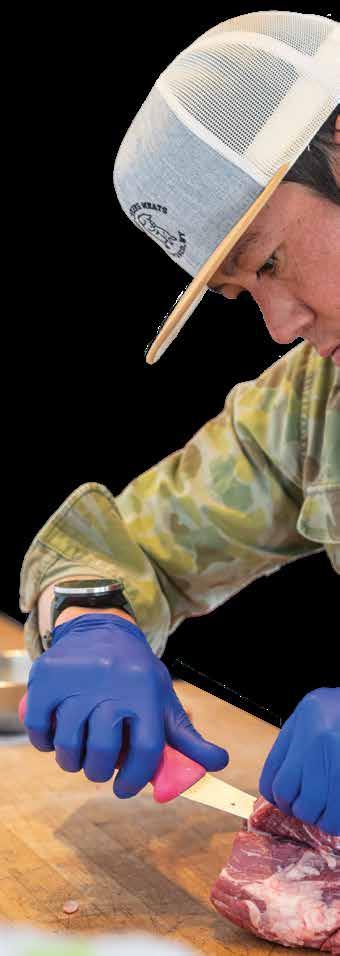
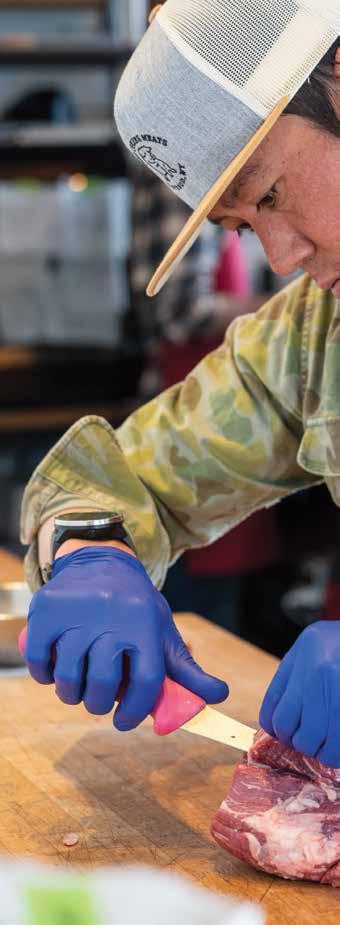

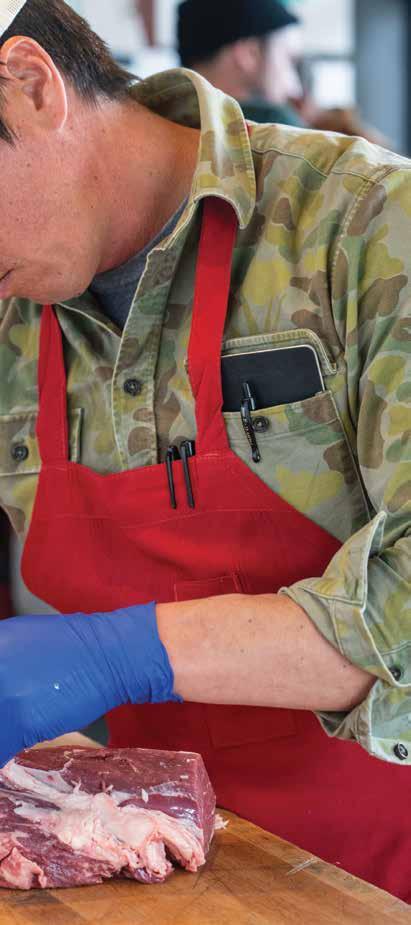





When Sweet Cheeks started at the JH Farmer’s Market, it tried selling fresh sausage in addition to sandwiches. But the sausage was too popular. “The lines got too long and chaotic for us to be weighing meat,” Phillips says. Today, Sweet Cheeks makes and sells more than a dozen types of fresh lamb, pork, and beef sausages including Italian, andouille, green curry, chard scallion, kielbasa, Calabrese, fresh fennel, Toulouse, lamb merguez, and beer brats.
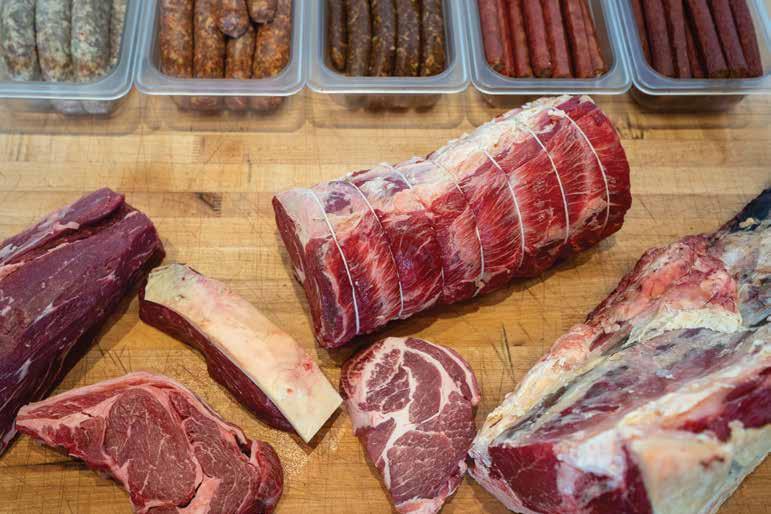
Sweet Cheeks Meat sells more beef than anything else. “What we look for in beef we sell is how old the animal is and if it has been 100 percent pasture raised,” Nick Phillips says. “Movement creates flavor in an animal, and so does a longer life. We look for animals around 30 months old, which is about a year longer of life than beef in the commodity market.” Bruni, who had Sweet Cheeks cater his wedding and has a tattoo of Sweet Cheeks’ cow logo just above his right knee, says it’s not just the quality of Sweet Cheeks’ beef that he and his wife appreciate, but also that they butcher cuts that “aren’t the popular ones you can find in grocery stores” and have staff that knows how to cook these. “You can get sound advice on how to prep and serve the meat you buy, which is especially helpful when it’s a cut you don’t come across normally,” he says.
“There is a burger option every day because there is always a demand for them,” Phillips says. “They are just so good, which I give credit for to the beef we use.” Sweet Cheeks switches up its burger offerings, but Phillips says the McDowell—double patties, cheese, shredded lettuce, pickles, onion, and sauce—is the flagship burger. “It is everything a Big Mac wishes it could be,” he says. Bruni says the McDowell is the best burger in town. “I’ve hit every high-end burger in town, and I have yet to find one as good as the McDowell. It’s the only one with a good crust on it.”



It takes Sweet Cheeks three days to make a single batch of 500 Hot Diggity Dogs. The first day, it emulsifies protein, animal fat, and liquid; seasons the resulting mix; and then blends it with coarse-ground meat, which has also been seasoned. “Mixing coarse ground meat into the emulsification gives our hot dogs a little more texture than most,” Phillips says. The meat then sits overnight to give the flavors time to come together. Day two, Sweet Cheeks stuffs the meat by hand into natural sheep casings. The hot dogs are then smoked and chilled into day three.
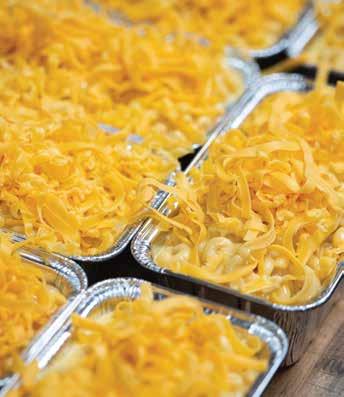

Sweet Cheeks’ mac and cheese—macaroni smothered with a béchamel sauce that has Velveeta and cheddar cheese in it—is one of the few things it sells that isn’t meat-based. “It has just become so popular that we just keep making it,” Phillips says. “By weight, we probably sell more mac and cheese than anything other than beef.” JH



These pies are as fun to order as they are to eat.
// BY SOFIA MCGULICKIs a summer visit to Grand Teton National Park really a visit if you don’t get pizza at Dornans and take it up to the restaurant’s rooftop deck to eat while enjoying the views? There are 10 restaurants inside GTNP, but it’s the Pizza & Pasta Company at Dornans, just outside the park’s main entrance at Moose, that is its most iconic eatery, mostly because of its pizzas, each of which are named after a Teton peak.
“It would be easier for staff if the pizzas had names like ‘BBQ’ or ‘garlic chicken,’ but for people eating here, they like the pizzas named after mountains. It makes it more interesting,” says executive chef Sean Dietz. If you want to match your pizza to its namesake peak, the napkins here include a profile of the range with peak names on them.
Huntley Dornan, the CEO of Dornans Enterprises and the great-grandson of Evelyn Middleton Dornan, who homesteaded here in 1922, found a menu from 1997, shortly after Pizza & Pasta opened. “All of the pizzas then were named after local things, but not all mountains,” he says. In addition to the Mount Moran, Buck Mountain, Static Peak, and Teewinot, there was also the Teton Pass, Healthy Hiker, Grizzly, Alaska Basin, and Moose. Dornan doesn’t know when the pizza menu evolved to be exclusively named after mountains. “It’s not something we’d think about changing now, though,” he says.
On a busy summer day, Dietz says the kitchen crew makes up to 500 pizzas. Every pie is made by hand and cooked in a gas brick oven at about 600 degrees. They don’t make the pizza dough but do make almost all of the sauces, which include garlic cream sauce, pesto, and tomato.
Aside from the Teton (marinara sauce and cheese), the most popular pizza is the Thor Peak. “We describe it to everyone as our meat-lover’s pizza with caramelized onions on top,” Dietz says. Dietz’s favorite pie is the Grand (sweet chili sauce, Canadian bacon, pineapple, red onion, Roma tomatoes, and crumbled bacon) followed by the Static Peak (BBQ chicken, smoked gouda, and red onions topped with fresh cilantro). The Static Peak has the distinction of being one of only two pies that has been on the menu since the restaurant opened. (The other is the Mount Moran—chicken, spinach, Roma tomatoes, and roasted pine nuts over a roasted garlic cream sauce.)
Pizzas from $9; open daily for lunch and dinner at 11:30 a.m.; 12170 Dornans Rd., Moose; 307/733-2415, dornans.com JH
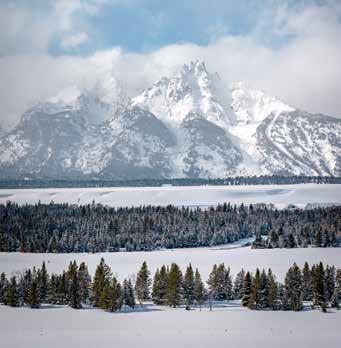
Thursday, December 12, 2024Sunday, December 15, 2024 jhiff.org
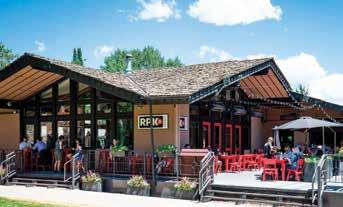
Relax with friends and family on the best deck in Teton Village- Aerial Tram views included.

Fresh air, warm sun, great food. RPK3 welcomes you to come in from your adventures and relax, either inside our climatecontrolled dining room or outside on our spacious deck. Soak up the Wyoming sun and fresh air while choosing from our small bites or hearty favorites, and enjoy the offerings of our full bar, including specialty drinks. RPK3 is convenient and easy to find next to the Aerial Tram, so join us when you’re ready to refuel.
More than 100,000 audience members attend events in and around the Center for the Arts campus every year, and at the center of it all is an open-air courtyard measuring 30 by 28 feet, with glass walls on three sides. Within this courtyard, The Center hosts rotating art installments that can be seen from multiple vantage points: The Center conference room, the Theater Gallery hallway, the Glenwood Street entrance, and from the green space above connected to The Center Park.
Submissions to have art displayed in this space are accepted from both emerging and established artists and are evaluated by the Campus Exhibitions Committee. “We are looking for installations that play off the unique architectural design of the inner courtyard and that will resonate and strike a chord with a broad range of audience members of all ages on our campus,” says The Center’s creative initiatives director Oona Doherty. “With these rotating exhibits, we are highlighting that The Center is not simply a building, but so much more, and that our spaces are meant to showcase and highlight diverse creative voices and perspectives.” The art in The Courtyard changes, although not on a set schedule. “Installations sometimes rotate annually, or biannually, or on occasion every three to five years,” Doherty says. Going up early this summer is LandSignals by Rachel Olivia Berg. The installation is in conjunction with JH Public Art’s other LandSignals installations. Here, we take a look back at some of our favorite courtyard creations.
A hidden-in-plain-sight space offers the opportunity to see public art installations that range from the whimsical to the mechanical.
 //BY SAMANTHA SIMMA
//BY SAMANTHA SIMMA


A former staff artist at Jackson Hole Public Art, Jackson Hole-based Bland Hoke has had multiple art installations on display around Jackson Hole, but none more memorable than The Fishbowl, which was installed in The Center’s courtyard in 2017. In the artist’s proposal, Hoke stated a desire for the project to “stretch the imagination and provoke a sense of wonder” in onlookers. Otto, the oversized 3D goldfish, was inspired by the children’s book A Fish Out of Water, in which a young boy overfeeds his goldfish—causing it to grow to the size of a whale. “As we plied into the historical significance of goldfish in art and reminisced of winning goldfish at the fair (true story), we found ourselves enthralled by the creative capacity of The Courtyard,” Hoke says about the design process. Hoke’s fabric fish was suspended by wires and kept inflated by a forced-air system. During its residency, the goldfish’s fabric developed a gradient of color from UV exposure, further enhancing Otto’s orange vinyl scales.
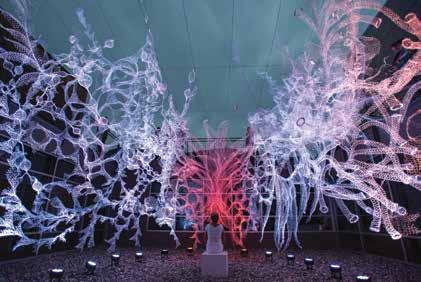
“FractaLife is an ode to life at all scales, the life within the life within the life… hence the word ‘fractal,’ patterns within patterns,” says Venezuelan artist Claudia Bueno. Installed in The Center’s courtyard from summer 2016 through the following spring, the light-art installation was described by viewers as psychedelic and/or magical. Inspired by molecular patterns, networks, life, energy, and the universe at large, Bueno posed the question, “What if we zoomed into the hexagon that is us, only to find another multidimensional, interconnected network that represents our life and its endless layers?” Her answer was an ethereal artwork constructed from painted wire netting that, at dusk, was illuminated by an LED light system. Aiming to encourage interaction with the art, Bueno says of the work’s structure, “Beyond the apparent, there is always more to be discovered. With closer observation, we start seeing subtleties and quiet details. We find the orderly amongst the random.”
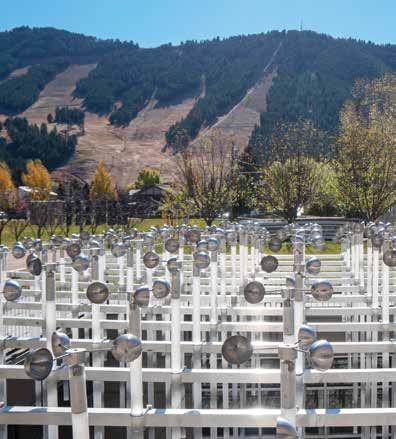
Artist Patrick Marold, of Denver, Colorado, brought The Windmill Project to The Center’s courtyard in 2018. The installment consisted of an array of 200 light-generating windmills suspended in the open space of the courtyard, engaging onlookers from above and below while presenting a living body of light in the evening hours. “This work of art converts the energy of wind into a responsive visual choreography, exhibiting the rhythm of a mechanical process that is collaborating with the harmony and chaos of wind,” Marold says. Aluminum windcups atop the windmills rotated and reflected the sun during daylight hours, while at night, each individual unit was illuminated in correlation with the will of the wind. A gentle breeze resulted in a dim glow, while stronger gusts created pulsing waves of light from the exhibit. “The windmills [were] suspended with graduated heights,” Marold says. “Peaking toward the center to allow for optimal exposure to the wind as well as presenting a visual sense of rising, or swelling, light.” JH

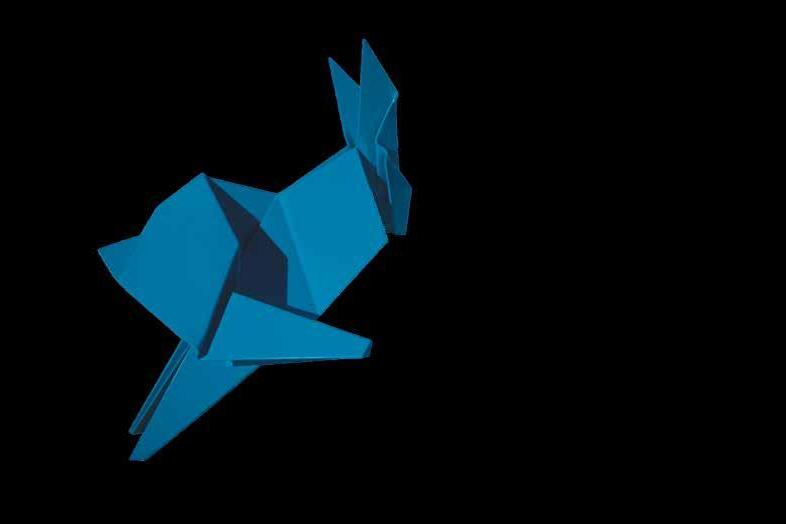
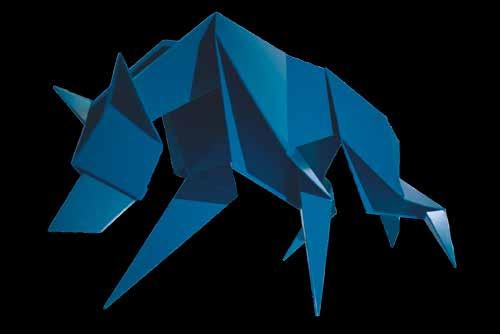
As e-bikes explode in popularity, Jackson Hole is trying to figure out where
they should be allowed.// BY MOLLY ABSOLON
Midway up the initial steep, gravelly climb out of Grove Creek in Idaho’s Big Hole Mountains, I heard a polite cough behind me. Startled, I pulled my bike off to the side, glad for a chance to stop, catch my breath, and let my pounding heart slow down. A pair of coollooking (as in not huffing and puffing) bikers pedaled past. One glance at the bottom tubes on their bike frames told the story: they were riding electric mountain bikes, or e-MTBS, and they looked like they were having fun. Real fun. Not the kind of “fun after it’s over fun” that I was experiencing.
E-bikes, bikes that provide their riders with battery-powered assistance, are everywhere these days. In 2022, 1.1 million e-bikes were sold in the United States—four times more than in 2019—according to the Light Electric Vehicle Association. In dollar terms, that represents a jump from $240 million (2019) to $885 million (2022). New technology has made e-bikes both more affordable and more capable, which in turn are leading to an increasing number of e-bike converts.
There are currently more opportunities to

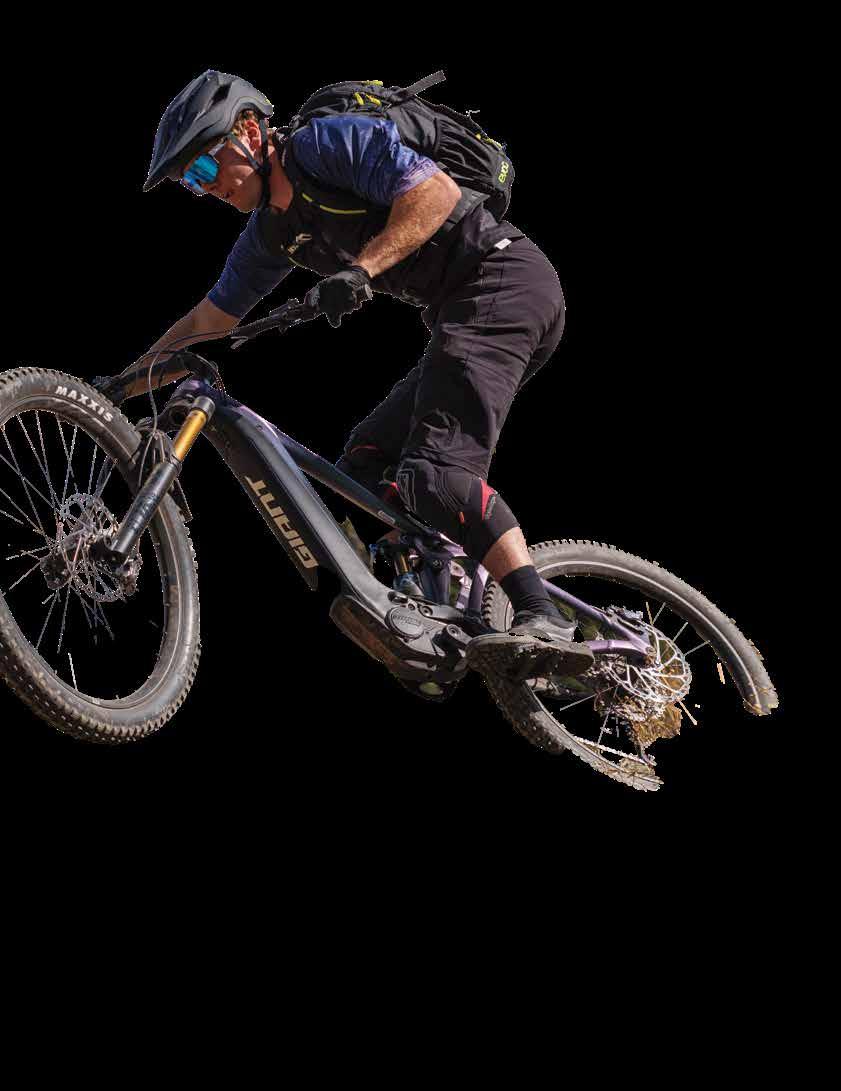
E-bike sales are approaching half of our business now, which is crazy. But it makes sense. E-bikes are fun. Everyone who takes one for a test ride comes back to the shop with a smile on their face. We joke that you shouldn’t try one until you want to buy one.”
—GEORGE FLYNN, E-BIKER AND CO-OWNER OF OPEN RANGE CYCLES
“I’d say e-bike sales in the shop have been growing around 100 percent per year,” says George Flynn, who owns Open Range Bicycles (formerly Fitzgerald’s Bikes) in Jackson with his brother, Bart, and business partner Greta Baker. Flynn is an avid cyclist who has two e-bikes in his personal bike quiver. “E-bike sales are approaching half of our business now, which is crazy. But it makes sense. E-bikes are fun. Everyone who takes one for a test ride comes back to the shop with a smile on their face. We joke that you shouldn’t try one until you want to buy one.” E-bikes allow older, less fit, and disabled people to get out on bicycles. E-bikes act as levelers, allowing riders of different abilities to be together and have fun without slower folks feeling anxious and stressed about keeping up with their speedier friends. People can ride farther or tackle more demanding trails with a little battery boost.
The arrival of e-bikes has not been without controversy, and for every convert, there is a detractor. People complain about kids on e-bikes going too fast while riding on the paved pathways around town, texting while riding, or riding on roads while carrying multiple passengers and not following traffic signs. Some hikers, horseback riders, runners, and mountain bikers on non-e-bikes are upset about e-bikers riding trails on which motorized users are not allowed. (Almost all singletrack trails on the Bridger-Teton National Forest surrounding Jackson Hole, which includes the Snow King

and Cache Creek Trail Systems and the Teton Pass Trail System and Old Pass Road are currently not open to motorized users; this includes both motorcycles and e-bikes.) There is also fear that the e-bikes will cause more conflicts with wildlife and worries that they will damage trails. People think speed differences between user groups could lead to more accidents.
Are these concerns legitimate? And which are part of the normal growing pains that happen when new technologies are adopted?
Aaron Nydam is the bike-safety coordinator for Friends of Pathways in Jackson. The bulk of his work recently has been focused on e-bikes. Nydam says e-bikes have brought Jackson’s
youth incredible freedom and mobility, which is a good thing. However, without education, that freedom and mobility can be easily abused. Fair or not, middle-schoolers have borne the brunt of Jackson’s anti-e-bike sentiment when it comes to paved pathways. “Kids deserve some of that criticism,” Nydam says. “But mostly the issue comes down to a lack of education. E-bikes don’t require any kind of license to ride, so kids can ride them without any training. But the bikes are powerful, and they require skill and education to operate safely.”
In 2023, in response to growing public concern about kids on e-bikes, Friends of Pathways initiated a bikesafety program at Jackson Hole Middle School. The program focuses on bike-
handling skills and lets kids practice negotiating turns and controlling their speed on both e-bikes and regular pedal bikes with supervision from more experienced riders. The program also includes an introduction to basic bike maintenance, so kids learn how to make sure their bikes are operating properly.
Nydam says pathway conflicts can usually be attributed to user etiquette, lack of attention, or ignorance. The goal of the pathways’ program is to address these issues early in a biker’s career so they can establish good habits. He says pathway etiquette is ultimately about being nice.
Etiquette can also go a long way toward alleviating concerns about ebikes on naturally surfaced (i.e. dirt and gravel) trails. Currently, e-bikes are forbidden on most of the trails around Jackson. Riders in Teton Valley, Idaho, have more options, with most of the
The speed limit on the Town of Jackson’s pathway network is 15 mph; in selected congested areas it is 10 mph.
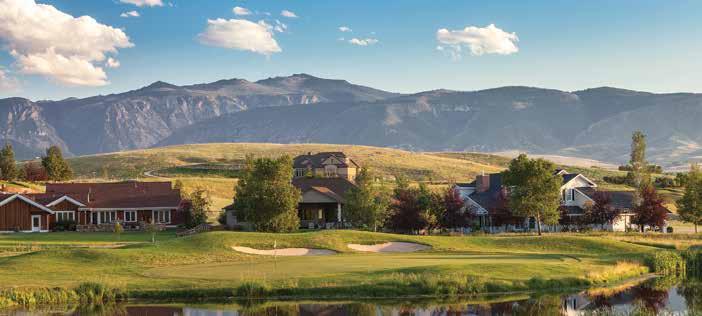









Big Hole Mountains, which are part of the Caribou-Targhee National Forest, open to motorized, and, therefore, e-bike, use. But Jackson Hole e-bikers don’t have a lot of trails to ride, which means people have resorted to riding their e-bikes illegally, raising the ire of other trail users. “E-bikers are treading on thin ice,” Flynn says. “People are watching us, and looking for negative interactions to back up their negative opinions about e-bikes. We need to ride e-bikes in the right places and lead by example to show other users we can play well.”
In 2023, the Bridger-Teton National Forest began studying a proposal to open a limited number of trails on Teton Pass to e-bikes without throttles and to extend the season when throttleless e-bikes are allowed on the Horsetail Creek Trail in the Gros Ventre Mountains and on the trail system around Munger Mountain. The idea is to provide more opportunities for e-bikers in Jackson Hole. A decision on the proposal is expected by the end of 2024 or early in 2025.
Tim Farris, the BTNF’s trails and wilderness program manager, says the proposal stems from user demand, as well as direction from forest service
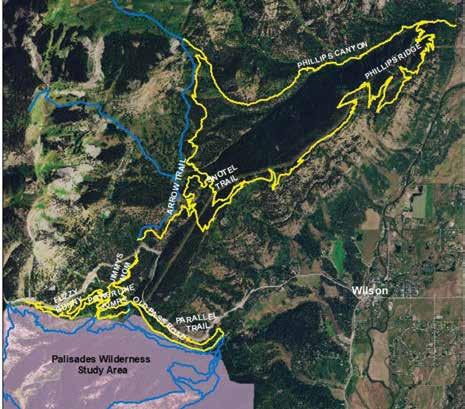
We can’t do everything for everyone all the time, but we can make sure there are a diversity of opportunities on the forest. This proposal is about looking at options for possible e-bike use.”
The forest’s proposal, which would open 27.5 miles of existing trails on Teton Pass—out of nearly 800 miles of trails in the Jackson District—garnered 342 public comments. Farris is quick to
on pathways are very different from ebikes on trails. E-bikes on pathways can be scary, and a lot of that fear is being transferred to concerns about trails.”
E-bikers are treading on thin ice. People are watching us, and looking for negative interactions to back up their negative opinions about e-bikes. We need to ride e-bikes in the right places and lead by example to show other users we can play well.”
—GEORGE FLYNN, E-BIKER AND CO-OWNER OF OPEN RANGE CYCLES "
leaders for local agencies to examine the e-bike issue on their districts. The BTNF’s Jackson Ranger District is one of the first in the country to dive into the issue, according to Farris. “The majority of forest service trails were originally designed for pack and stock use,” he says. “Over time, demand has changed.
say these numbers are not a vote, but they do provide a useful framework of concerns that need to be addressed as the process moves forward. “The concerns people raised have really helped us drill down into what needs to be considered,” he says. “There’s a lot of misinformation out there about e-bikes. E-bikes
Most of the research on e-bikes on trails shows those fears are misplaced. For example, studies have shown that e-MTBs and regular mountain bikes impact trails similarly. Concerns about speed on naturally surfaced trails also seems to be inflated. E-bikes do go faster uphill, but their speeds are hardly out of control. A 2019 study conducted by researchers at Brigham Young University showed that the average speed of regular mountain bikers on a specific trail was 8.8 miles per hour, while e-bikers on the same trail averaged 12.9. That difference is definitely significant—especially when huffing and puffing up a long climb—but on descents, where speed is more likely to cause problems, regular mountain bikers are often faster.
“Most user conflicts can be explained by the theory of goal interference,” Farris says. “People have different goals. You
may want exercise, you may want to socialize, or you may want solitude. When two people go out with different goals, that’s when you have conflicts. Are our trails overcrowded? I think it depends on the day, the season, and the place. On a Monday at 9 a.m. in Cache Creek, you may not see anyone else, while at 5:30 p.m., it may be mayhem there. Living here you learn where to go to get what you are looking for.”
What more and more people seem to be looking for is an opportunity to ride their e-bike close to town on trails designed for traditional bicycles. Celeste Young, who lives in Victor, Idaho, has been a biker all her life. Recently she added an e-MTB to her fleet of bicycles. “The most negative thing I’ve heard is, ‘Oh, you’re cheating,’” she says. “But it’s just another way to be out there. You get an extra boost going up these really hard trails, so it makes a challenging trail fun, rather than demoralizing.”
JH1. E-bikes can be as heavy as 70 pounds, which can make them unwieldy for smaller riders. Always consider the weight and size of both the bike and the rider when purchasing an e-bike. Riders should practice stopping and steering to get used to an e-bike’s greater mass and force.
2. Talk to your kids about the importance of helmets, communication, hand signals, situational awareness, visibility, kindness, and valuing others’ experience and safety when they’re riding an e-bike.
3. The town of Jackson requires all e-bikes to be registered with the police department within 30 days of purchase. In addition, Jackson Hole Middle School requires a parking sticker for e-bikes. To obtain a parking sticker, riders must complete a pathway safety course and pass a test.
This has been adapted from materials created by Friends of Pathways, friendsofpathways.org


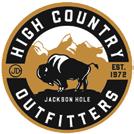
“In Jackson Hole, we’re surrounded by this amazing natural environ ment, and increasingly people want homes that engage with it—homes in which the inte rior is connected to the exteri or,” says Chris Jaubert, founder and principal at A43 Architec ture. WRJ Designs principal Rush Jenkins says, “I think as humans, by nature, we want to feel connected to the earth and the elements.” Yes, log cabins are the epitome of cozy, but homes that invite the out side in—whether through the use of extensive glass, color palettes, fabrics, materials, or textures—touch something primal in us, and can be cozy in their own way. “It’s really cool to be sitting in a room with lots of windows and light and for it to be blustery and cold outside—you feel like you’re in the elements, but you’re protected,” says Shawn Ankeny, founder and prin cipal at Ankeny Architects. “And then if an animal walks up to the house, you really feel like you’re in nature.”
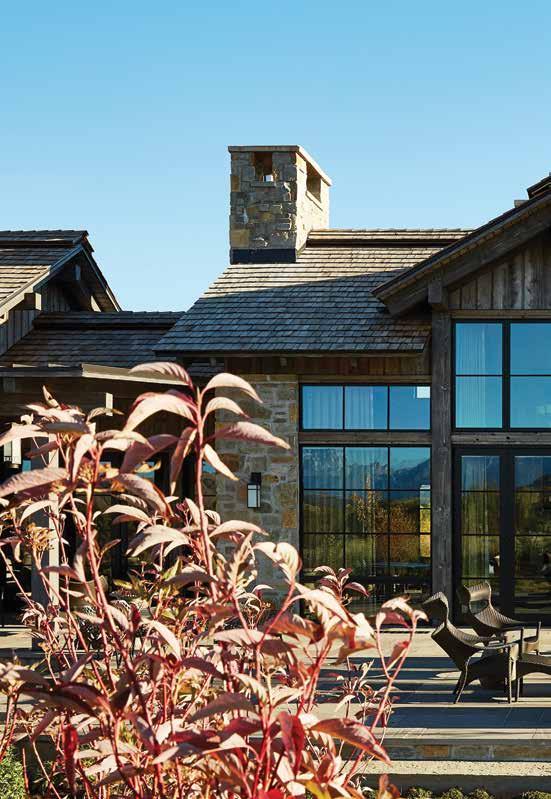
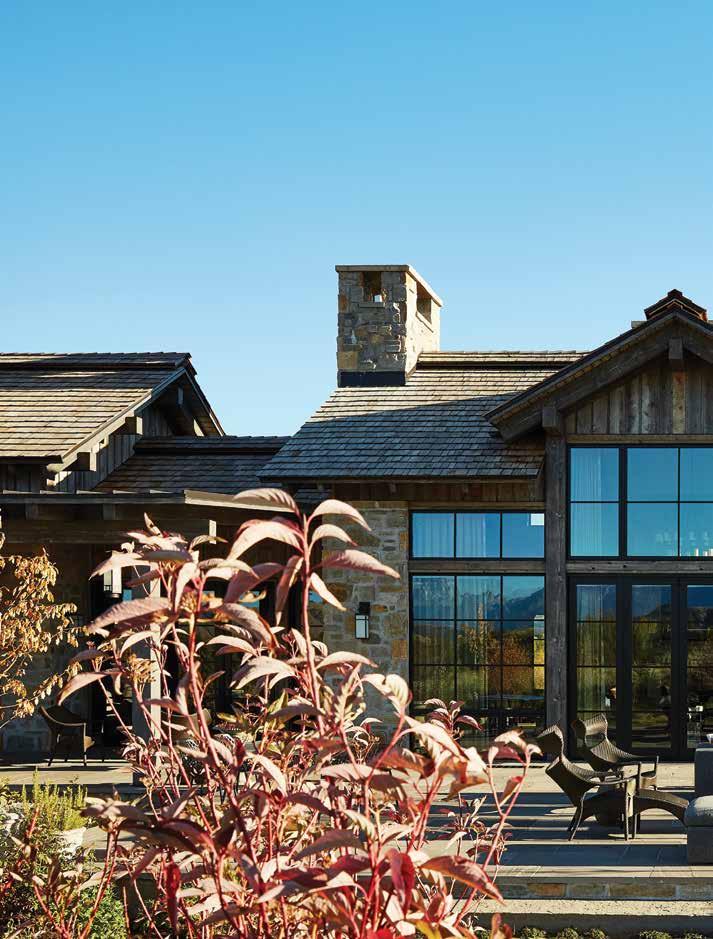


Walking down these glass hallways can feel like you’re walking through a meadow of wildflowers. “I always make sure there’s something blooming all the way from the spring and into the fall,” says landscape architect Allison Fleury, founder of Inside Out Landscape Architecture. In this courtyard, which also serves as a spot for the roof to drain and so required drainage rock, Fleury matched the colors of the flowers to the colors used in the home’s immediate interior. “We had to put drainage rock in here, but I wanted to make it pretty. We did a bluepurple-white theme, and those are really calming colors,” she says. The color of the boulder was selected to match the color of the stone on the front porch and also in the home’s interior materials palette.
The family that worked with architect Shawn Ankeny to design and build this home wanted to be able to flow between inside and out. In the great room, accordion doors open all the way to an expansive terrace and outdoor living room. But you don’t have to go outside to have the feeling of being outside. Because the windows on either side of the accordion doors come down to the floor, “the plane of the outdoor terrace looks like a continuation of the interior floor,” Ankeny says. “That really helps with the inside-outside feeling when you’re in the great room.”

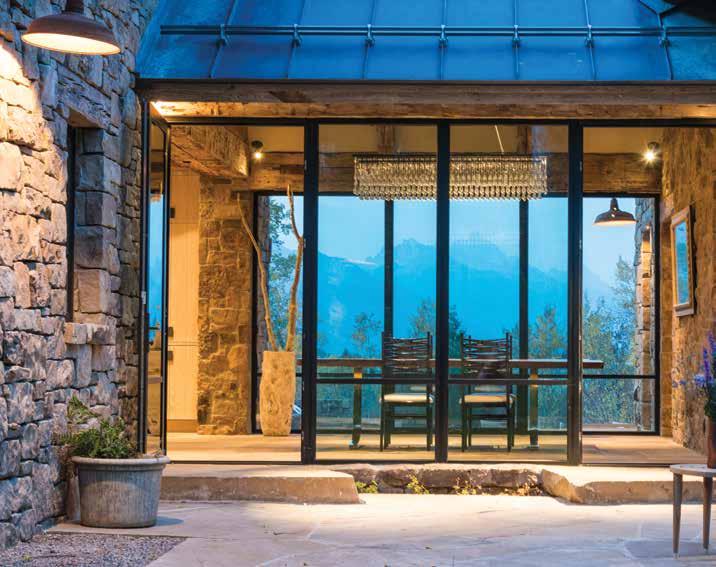
"
The main principle behind biophilia is rather simple: connecting humans with nature to improve well-being.”
Despite being an interior room with no windows out to the landscape, this small powder room has a big connection to nature. Its sink was carved from a 700-pound boulder that was unearthed on the site during construction. WRJ Designs’ principal Rush Jenkins worked with artisans to carve a sink into the boulder and then hang it (using steel) from a wood accent wall. “By integrating natural materials and elements like the suspended boulder, the interior becomes a reflection of the surrounding landscape, demonstrating that a connection to nature can be achieved in specific places and in different ways within a home, not just through extensive window views,” Jenkins says. “The boulder was a wonderful way to celebrate the site in an unexpected way.”
“The homeowners had a vision for a home that respected the surrounding landscape,” says JLF principal designer Paul Bertelli about this project. Using native fieldstone, reclaimed barnwood, and hewn timbers, the materials palette reflects a sense of place. This transparent dining room— a connection between two masses clad in stone—takes the clients’ vision one step further and seems to be part of the landscape. Bringing the stone exterior wall inside and into the dining room at both ends reinforces this feeling.
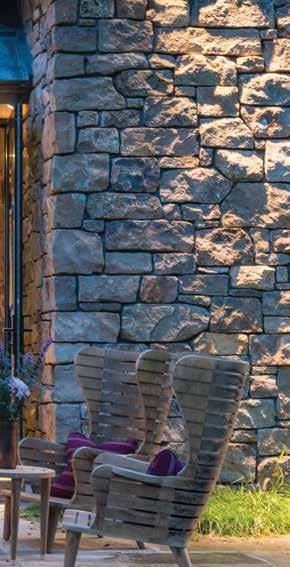
There’s a somewhat recent term in the architecture world for bringing nature and natural elements into homes: biophilic design. According to ArchDaily, “The main principle behind biophilia is rather simple: connecting humans with nature to improve well-being.” This is done by bringing natural materials and/or characteristics into built spaces. While “biophilic design” is a new term, what it describes is not. The legendary Hanging Gardens of Babylon were designed and built for certain segments of the Babalonian population to enjoy. More recently, Frank Lloyd Wright’s 1935 residential project Fallingwater is an example of biophilic design. So, too, is Farnsworth House, designed and constructed by Ludwig Mies van der Rohe between 1945 and 1951. “These buildings were built to bring the outside in,” says architect Shawn Ankeny. “Somewhere we got away from that, but it’s definitely something people recognize and want again today.”

• Top rated Wyvern and AR/GUS Gold and Platinum Aircraft and Crew.
• Competitively priced “on-demand” charters.
• No long-term contracts or costly memberships.
• Locally owned and operated. kym@Independentjets.com (307) 699.1422 independentjets.com BOOK LUXURY TODAY: Kym Rambo, Founder/CEO

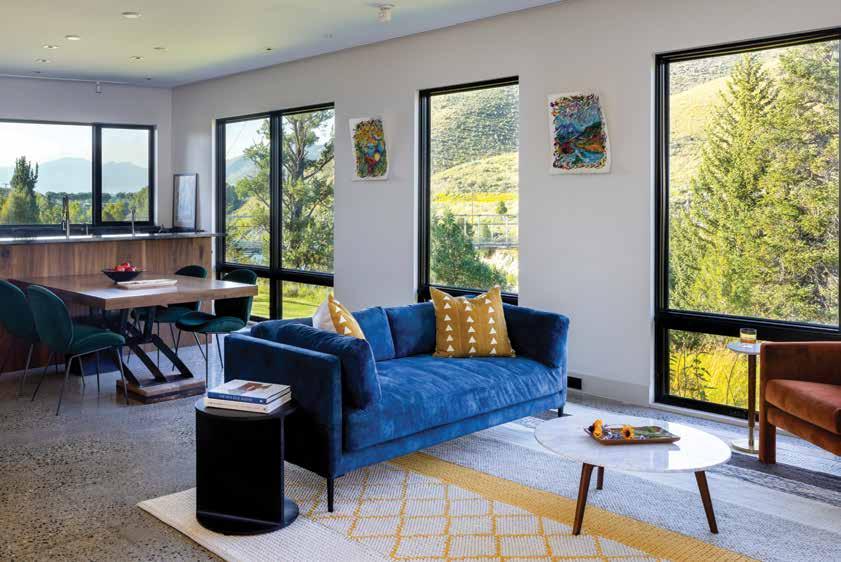
The owner of this site overlooking the Snake River approached architect Chris Jaubert, founder and principal of A43 Architecture, with a simple request: “I want to see the river from every room.” Jaubert delivered, including with a primary suite and a combined kitchen-dining-living area that seemingly overhang the river. “Blurring the lines between interior and exterior spaces is always something we’re trying to achieve,” he says. In both of these spaces, windows that come down to the floor create a visual connection to the Snake. “You really feel like you’re hanging over the edge,” he says. Sections of the home cantilever out from the ground, mirroring the effect of the river bank’s erosion by the river below. JH

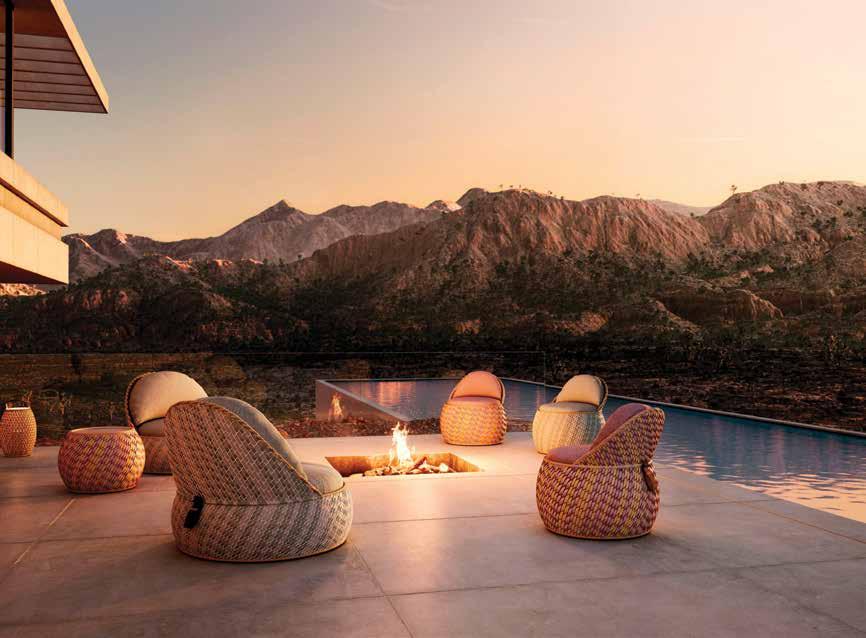


Once only available in metropolitan areas, elective IV therapy, which might help with issues ranging from dehydration to vitamin deficiencies, has come to Jackson Hole.
// BY LILA EDYTHEA45-year-old single mom, Tibby Plasse describes herself as “someone who is always trying to figure out how to make my body feel better.” She adds: “As a perimenopausal woman, nutritional IVs keep me going completely normally and help with a load of things. I am definitely a believer, and it makes a lot of sense for me.”
Nutritional IV therapy is the administration of minerals and vitamins—or sometimes just a saline solution—directly into the bloodstream. IVs are most often put into the arm or hand. Nutritional IVs are generally not covered by insurance and are administered not at hospitals, but at medi-spas, “hydration bars,” “drip bars,” or even by a nurse who comes to your home. There is no scientific proof that these IVs do anything, but Plasse is not alone in believing that they contribute to her wellness.
Janice Fritsch, a highly motivated amateur athlete, says her everyother-week vitamin drips “have been a game changer.” Fritsch, who confesses, “I am not the nicest person to my body; I push it to do a lot,” started vitamin IV therapy in 2022 while training for a full-distance Iroman. “I read somewhere that you should be spending three times as much time recovering as training,” she says. “This message resonated with me, and I decided I was going to really commit to recovery.” This started with weekly saunas, cryotherapy, and red light therapy, but Fritsch quickly added IV vitamin treatments. She got through the intense training an Ironman requires and the race itself “feeling so much better than I thought I would,” she says. “I could not believe the energy I had.” Even though the Ironman is past, Fritsch continues to work out two or three times a day and remains committed to helping her body recover. She now has a sauna at home and does a vitamin drip every other week. “I like to be active, and I feel like it just helps. I feel so great the next day,” she says.

and aging skin. A 2014 New York Times article mentions IV hydration services in Las Vegas, Los Angeles, Scottsdale, New York, the Hamptons, San Francisco, Los Angeles, and Chicago. In 2018, the Federal Trade Commission charged several IV therapy bars with making deceptive promises about their IV blends’ abilities to treat cancer, congestive heart failure, and multiple sclerosis, but by the end of the decade, celebrities like Katy Perry, Rita Ora, and Gwyneth Paltrow were very public about their use of vitamin IV drips.
There is no research that shows proof that IV vitamin therapy can cure cancer, but it might reduce fatigue in those undergoing chemotherapy.
Medically necessary IV treatments—blood transfusions, antibiotics, fluids—were first used in hospital settings about a century ago and have been widely used in hospitals since the 1960s. The first vitamin IV therapy was developed between 40 and 50 years ago. A doctor at Baltimore’s Johns Hopkins University, John Myers, formulated a blend of B-vitamins, vitamin C, calcium, and magnesium that he thought could help chronic medical conditions such as asthma, fibromyalgia, fatigue, migraines, and more. While Myers had hundreds of patients who swore by his blend, which today is known as the Myers Blend or Myers Cocktail and is one of the most popular vitamin drips, vitamin IV therapy remained little known until the 2010s.
Early in that decade, doctors began offering drips purported to help with hangovers, weight loss, dehydration,
The first nonmedical IV therapies available in Jackson Hole arrived about a decade ago. Today, there are five IV services, some of which do house calls while others have a storefront. “When I first started Housecall Hydration, I thought that there was a lot of partying that happens here and that I’d be getting clients wanting help with hangovers,” says nurse Lindsay Emerson, who founded the business about eight years ago. “But it is a lot more people looking for help with wellness—they have a stomach bug, or are from lower elevations and are struggling to acclimate to our elevation.”
As popular as IV vitamin therapies have become, they are not FDAapproved, and there are no clinically validated studies confirming that they have any real benefits. “I understand sometimes you do need hydration in an urgent situation. If you’re used to sea level, you will get dehydrated here faster,” says naturopathic physician Monique Lai, ND. “We’re fortunate to have good [IV clinics], which is great, but my belief is that people should get nutrients from their food and water by drinking it and only use elective IVs in extreme situations. The body works in such a beautiful, perfect way, why puncture it unnecessarily?”
Still, Lai has patients that do IV therapy regularly. Some of these are elderly or ill and cannot get vitamins through food or even supplements; others “just feel like it helps them,” she says.
About a decade ago, Emerson, the nurse who founded Housecall Hydration, was a member of the U.S. Snowboard Team. During the competitive season, she got sick, which led to her being severely dehydrated. “I ended up having to get an IV for dehydration,” she says. “It helped me bounce back so quickly. It really opened my eyes.” Emerson went on to nursing school and, while in school, worked at a hospital where her boss owned and ran an IV clinic in Park City. After Emerson got her nursing degree, her former boss encouraged her to open an IV clinic in Jackson Hole. Housecall Hydration was born. (Emerson and her brother also bought her former boss’s Park City clinic, Vitamin Bar, and are in the process of opening outposts across the country; a Chicago Vitamin Bar opened this past spring.)
Before finding vitamin IVs, Plasse says she was taking more than 60 pills a day to balance her body. “The entire counter was filled with supplements. They controlled my life,” she says. “I thought nutritional IVs might be a better way to get what I needed.” In the years since she began getting drips, Plasse has gone even further and uses the regular blood tests she gets to work with an IV clinic in Idaho Falls to create custom blends for her specific deficiencies.
Iron-woman Fritsch says she knows that there are no studies saying that IV vitamins do anything. “But I am less focused on the data and more on whether or not I think I’m getting a benefit, and I think I am,” she says.

Minor side effects can include pain, swelling, and scarring at the IV site. Serious side effects include infection, clotting, and inflammation. People with kidney or heart disease or multiple allergies should not receive IVs unless prescribed by their doctor, and people on medications should be extremely cautious about the potential of drug interactions. Pregnant or breastfeeding patients should consult with their doctor before getting any vitamin IVs. JH

In the Heart of Teton Village, step into a world of tranquility at our boutique spa.

Whether you're seeking a rejuvenating massage or a refreshing facial, we are dedicated to providing you with a personalized experience designed to enhance your overall well-being.
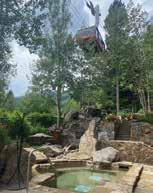
Jackson residents receive 20% off 3340 Cody Lane Teton Village, WY 307.734.9777 ext. 5 www.TheeSpa.com
Help, my SO's parents are coming to visit and I'm not sure they know what they're in for.
OK, ARE THEY COMING THE FIRST WEEK IN AUGUST?
OF COURSE THEY ARE
Did you make any reservations at Christmas?
Think grocery store items and park picnics.
All good!
Good. How about last week in July?
Fair week. Boom. Do you have kids?
Finally, a kid benefit!
Have them take kids to Snow King or Teton Village. How hardy are these people? VERY!
Send them to the Craig Thomas Visitor Center to line up some hikes.
Send them to the LSR Preserve. Send them to Target. JH
MOUNTAIN DINING FOR ALL TYPES OF ADVENTURURES


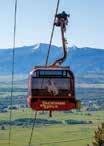

Eat, drink and relax with incredible views at 9,095’.*
The best view in Jackson Hole can be found at The Deck. After a short gondola ride, you are greeted by expansive views. Don’t miss the summer menu from Off-Piste, offering grab n’ go pizza, barbecue, fresh pastries, ice cream, cold beverages, beer and more. There is no better way to cap off an amazing day in the great Jackson Hole outdoors than drinks and appetizers on The Deck.
*Evening gondola access is included with your full-day sightseeing ticket, Summer Sightseeing Pass, 2024 Winter full-season pass or a Piste Mountain Bistro reservation. A separate evening-only (after 5 p.m.) gondola ticket can be purchased for $18. For More details, scan code.
SCAN CODE TO VIEW MENU AND HOURS
Whether you’re passionate about plein-air, a serious collector of Western paintings by contemporary or deceased masters, or a casual art fan searching for a keepsake to remind you of your time spent here, in Jackson Hole you have the opportunity to enjoy art in a multitude of forms. Over the past two decades, Jackson Hole has grown to become one of the most heralded art centers of the West, popping off the tongues of aficionados alongside the likes of Santa Fe, Palo Alto, and Scottsdale. Begin by visiting some of the galleries highlighted here, which show the diversity of art available in the valley, from traditional wildlife and Western art to contemporary paintings and sculptures.

Established in 1790, AZADI Fine Rugs is owned by one of the oldest rug weaving families in the world. For over two centuries, AZADI Fine Rugs has been honored to share history, art, and culture through the magic of handwoven rugs. With an inventory of over 40,000 in-stock fine rugs, AZADI has given the most refined clients and Interior Designers in the world an unforgettable experience by providing an unparalleled selection of fine quality rugs.
55 NORTH GLENWOOD
734-0169

Altamira Fine Art, located in downtown Jackson, is a leading fine art gallery representing works by top Contemporary Western artists. We offer an annual schedule of exhibitions, consultation and acquisition assistance. Altamira’s diverse collection of fine art ranges in media; from oil and acrylic painting to contemporary glass and bronze. Whether connecting with contours of Native American pottery or recalling a mountain memory within an abstract landscape, people who walk through our doors recognize the essential value of art in their lives. Two locations: Jackson, WY and Scottsdale, AZ.
172 CENTER STREET
307/739-4700
ALTAMIRAART.COM

Taking a nod from the exquisite environment surrounding us, our goal at Bella Fine Goods is to inspire and delight you with beauty! Enjoy our upscale collection of fine jewelry, unique home furnishings, fine art, and special gifts. Stop by, or give us a call, and we’ll take care of you with an unforgettable experience!
30 CENTER STREET 307/201-1848
BELLAFINEGOODS.COM
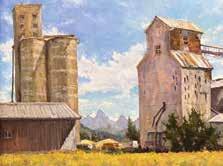
Downtown Driggs Association hosts the 13th Annual Driggs Plein Air Festival, July 17-26, at the Driggs City Gallery and Plaza, in downtown Driggs, Idaho. Hundreds of plein air paintings of Teton Valley’s beautiful mountains, forests, fields and farms are featured by 75 national artists. Opening celebration on July 21 at 6pm with live music by The Shift jazz band. Competition Judging and Awards Ceremony on Friday, July 26 with live music by Black Rock Winds. Exhibition & Sale through September 20 at Teton Geo Center.
60 SOUTH MAIN STREET
216/235-7532 WWW.DOWNTOWNDRIGGS.ORG

Gallery Wild, located in Jackson Hole, Wyoming, and Santa Fe, New Mexico, showcases contemporary fine art inspired by wildlife, open spaces and conservation. Our collection features established and emerging artists who offer a variety of mediums including oil and acrylic paintings, bronze sculpture, mixed media and photography. Gallery Wild’s mission is to inspire collectors and impassion others to help protect wildlife and wild places for future generations through the acquisition and enjoyment of fine art.

Crafters and curators of unique designs, featuring natural diamonds, rare gemstones, and exquisite, original designs showcasing the Tetons which are inspired by this incredible area. Visit our showroom located on the historic Jackson Hole Town Square, and see why we are the first choice for first time buyers and discerning jewelry collectors from around the globe.Home of the iconic Teton Stacking Rings. Voted Best Jewelry Store in Jackson Hole.

Discover the shape of western style with a custom hat fitting experience. Founded on a proud Wyoming Heritage that embraces the people, integrity and lasting values of the West, JW Bennett hats are handcrafted using refined skill, attention to detail and traditional techniques. Our style is modern, sophisticated, gritty and beautiful. Visit our boutique for a personal experience and leave with a memory of the Mountain West that is uniquely yours.
80 WEST BROADWAY

Founded in 1987, The National Museum of Wildlife Art is a world-class museum and nonprofit located in Jackson Hole, Wyoming. The Museum’s collection boasts more than 5,000 artworks representing wild animals from around the world. Featuring work by prominent artists such as N.C. Wyeth, Georgia O’Keeffe, Andy Warhol, Bob Kuhn, Albert Bierstadt, and Carl Rungius— the Museum’s unsurpassed permanent collection chronicles much of the history of wildlife in art, from 2500 B.C.E. to the present.
2820 RUNGIUS ROAD
60 EAST BROADWAY

Specializing in Golden South Sea pearls and heirloom strands, Pearls by Shari brings the elegance of pearls to the heart of the Tetons. With over 20 years of pearlbuying experience, Shari Turpin brings unparalleled expertise to each design featured at 90 E. Broadway and Neiman Marcus locations nation-wide. Whether you are memorializing your trip to Jackson or want to add a one-of-a-kind pearl design to your jewelry collection, Pearls by Shari features the widest selection of highquality pearls in the United States. Make an appointment, or stop by our showroom located on the Square.
90 EAST BROADWAY
307/734-0553
PEARLSBYSHARI.COM

The West Lives On Gallery features fine art reflecting the rich heritage of the American West. Featuring Western, wildlife and landscape art in our traditional and contemporary galleries. The West Lives On Gallery has been representing over 100 national and regional artists since 1998.
55 & 75 NORTH GLENWOOD
307/734-2888
WESTLIVESON.COM
The Grill at Amangani specializes in local, sustainable ranch meats, fresh fish and seasonal farm to table produce. Enjoy your dining experience with breathtaking views of the Snake River Valley.

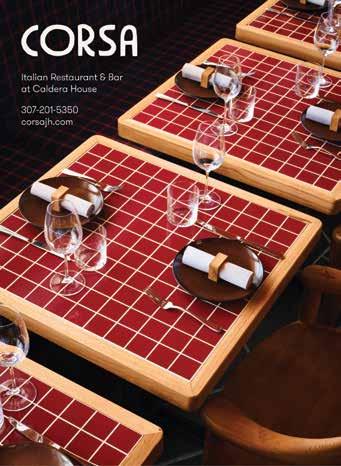
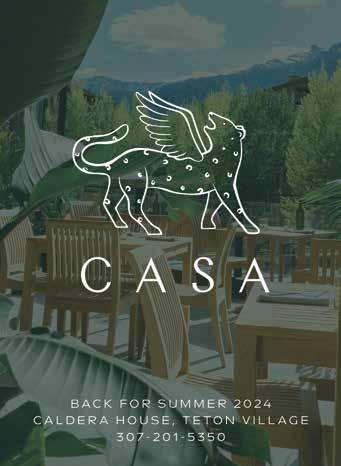









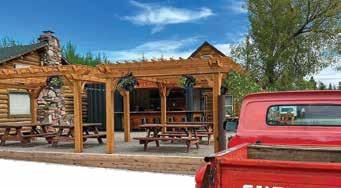







DINING GUIDE

Amangani Grill | 307/734-7333 | JACKSON
Specializing in local, sustainable ranch meats, fresh fish, and seasonal farm-to-table produce with the finest regional ingredients.
CASA | 307/201-5350 | TETON VILLAGE
Cocktail bar with stunning outdoor patio. Mexican staples.
Corsa | 307/201-5350 | TETON VILLAGE
Bold Italian in a chalet-inspired setting. Outdoor dining.
FIGS | 307/201-5350 | JACKSON
Vegetarian and vegan friendly, Mediterranean-inspired small plates/entrees.
Nora's Fish Creek Inn | 307/733-7662 | WILSON
A local favorite! This 100-year-old log cabin is open for breakfast, lunch, and dinner; pizza 7 days a week. North Grille at Jackson Hole Golf & Tennis Club | 307/733-7788 | JACKSON
Traditional country club fare with patio and indoor dining, featuring unmatched Teton views.
Silver Dollar Bar and Grill | 307/732-3939 | JACKSON
Newly renovated, we are open for breakfast, lunch, dinner, happy hour and live music.
Snake River Brewing Co. | 307/739-2337 | JACKSON
Wyoming’s oldest and America’s most award-winning small craft brewery.
Serving up 12 taps of award-winning beers and Alpine-inspired dishes.
Snake River Roasting Co. | 307/312-2382 | JACKSON
Snake River Roasting Co. serves specialty, locally roasted coffee alongside food provided by Provisions Dining Group.
Teton Thai | 307/733-0022 | TETON VILLAGE
Best of JH: Best Overall Asian Restaurant.
Wind River Hotel & Casino | 866/657-1604 | RIVERTON
Discover signature cut steaks and succulent seafood inside Wind River Casino.
Westbank Grill | 307/732-5620 | TETON VILLAGE
Enjoy panoramic views of Teton Village and Rendezvous Peak, a dynamic open kitchen, and a cozy setting at our inviting mountain steakhouse.
The Handle Bar | 307/732-5156 | TETON VILLAGE
Grab a seat at our American pub and beer hall, featuring a wide selection of American and international beers, whiskeys, and provisions.
Ascent Lounge | 307/732-5613 | TETON VILLAGE
Creative bartenders at our popular slopeside bar, where pan-Asian inspired plates are best shared either by the wood-burning fireplace or outside on the heated patio.
Powder Cache Bar and Grill | 307/353-2300 | GRAND TARGHEE RESORT
Full bar with craft cocktails, wine list and Rocky Mountain fare.
Trap Bar & Grill | 307/353-2300 | GRAND TARGHEE RESORT
A legendary Targhee bar with sports, live music, and our famous WYDAHO Nachos.
Snorkels Café | 307/353-2300 | GRAND TARGHEE RESORT
Grab-and-go café with homemade breakfast, lunch, pastries, and coffee bar.
HOLE MOUNTAIN RESORT
Piste Mountain Bistro | 307/732-3177 | TOP OF BRIDGER GONDOLA
Enjoy Rocky Mountain cuisine at 9,095 feet. Book on Open Table. Sightseeing ticket, evening gondola ticket, or 2024-2025 season pass required.
RPK3 Kitchen, Bar & Apres | 307/739-2738 | TETON VILLAGE
Dine under the Jackson Hole Mountain Resort Aerial Tram.
Tin Can Cantina | BASE OF THE BRIDGER GONDOLA
Enjoy grab n’ go tacos and a margarita after spending your day hiking or riding the Bike Park.
Kings Grill | 307/201-KING | JACKSON
Classic American menu. Happy hour. Families welcome!
Snow King Cafe | 307/201-KING | JACKSON
Sandwiches, burgers, beers, and kids meals.
Panorama House | 307/201-KING | JACKSON
Best Teton views and Jackson Hole sunsets from the top of the Snow King Gondola. Drinks, crepes, snacks, beer, and wine.


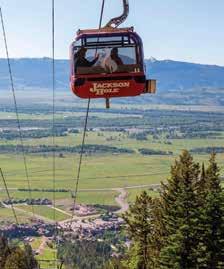
Locally sourced food paired with stunning valley views.
Piste Mountain Bistro delivers a lively dining experience at the top of the Bridger Gondola. Just beyond the friendly bar scene are floor-toceiling windows that offer the best views of the mountain and valley. The outstanding locally sourced food and ambiance are further elevated by the excellent service. Be warned — you will want to return to this place time and time again. Reservations are highly recommended.



*Evening gondola access is included with your full-day sightseeing ticket, Summer Sightseeing Pass, 2024 Winter full-season pass or a Piste Mountain Bistro reservation. A separate eveningonly (after 5 p.m.) gondola ticket can be purchased for $18. For more details, scan code.

One of the most visited places in Jackson Hole is the Snake River’s Oxbow Bend. Here you can see Mount Moran reflected in the bend’s still waters, watch the pink alpenglow of sunrise light up the Tetons, catch a glimpse of a moose bedded down in the willows, sight a grizzly bear wandering along the shoreline, or land a native cutthroat trout on a dry fly. In the Oxbow, the river is quiet, slowed by its curve to the north, in sharp contrast to the more rambunctious character it exhibits farther south in the whitewater of the Snake River Canyon, just above the town of Alpine. Along the Oxbow, the silence is broken only by birdsong and the gentle lapping of water against the shoreline.
For many, this section of the Snake River captures the essence of Jackson Hole, with its framework of jagged mountains, its abundant and diverse wildlife, and the in-your-face drama of the scenery. It feels wild, untouched, and protected—or so many of us assumed until May 2023, when the Bureau of Reclamation—the agency established by the federal government in 1902 to “manage, develop, and protect water and related resources”—announced it intended to drop flows from Jackson Lake Dam, just upstream from the Oxbow, to 50 cubic feet per second (cfs), essentially dewatering the feature.
Flow rates in the Snake have always fluctuated, with natural peaks occurring anytime from mid-May to mid-June, depending on snowpack and temperature. Under Reclamation’s management, water releases from the dam vary in timing and amount according to downriver irrigation needs. Typically, the range is between highs of
Laws say that water in the West must be put to “beneficial use.” Historically, that has meant agriculture, but could recreation and ecosystem health enter the conversation?


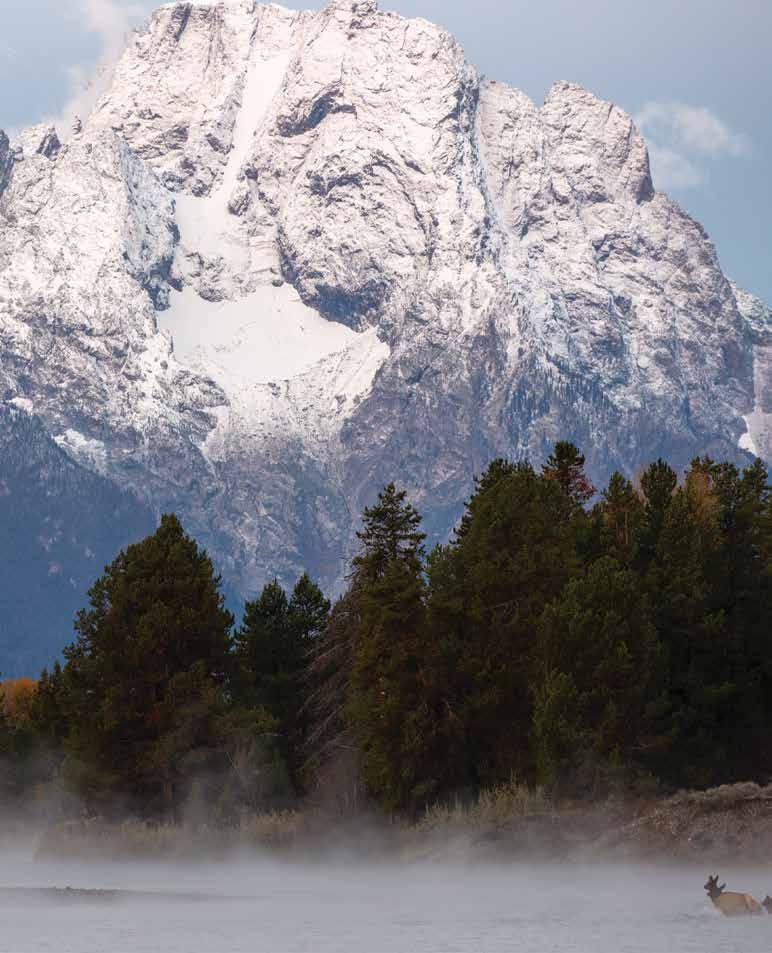
 A herd of elk crosses the Snake River near Oxbow Bend at dawn in Grand Teton National Park. The Snake provides critical habitat for a broad spectrum of animals, plants, and birds, including the largest elk herd in the world, as well as grizzly bears and wolves, trumpeter swans, common loons, and nesting populations of bald eagles and peregrine falcons.
A herd of elk crosses the Snake River near Oxbow Bend at dawn in Grand Teton National Park. The Snake provides critical habitat for a broad spectrum of animals, plants, and birds, including the largest elk herd in the world, as well as grizzly bears and wolves, trumpeter swans, common loons, and nesting populations of bald eagles and peregrine falcons.

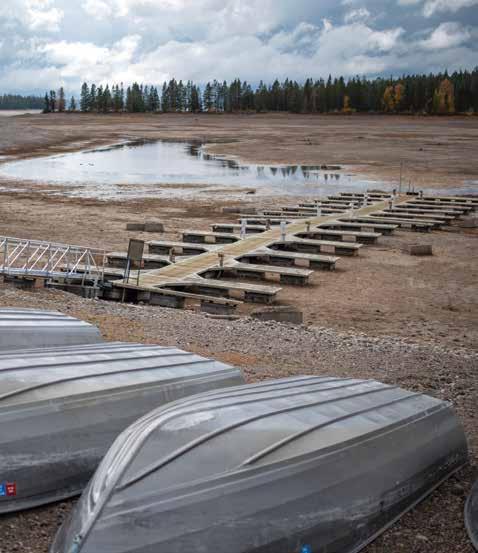
around 3,000 cfs to lows of 280, a flow rate determined in the 1980s to be the minimum necessary to sustain aquatic life in the Oxbow.
Every year, Reclamation drops the level of the river, known as a drawdown, to provide water for irrigation. In 2021, those autumn drawdowns were done so rapidly—3,000 to 280 cfs in the span of a week—that fish were stranded in dried-up channels, causing an outcry among anglers and fisheries biologists. In 2022, there were artificially high flows—releases at the dam ranged from 1,750 to 2,250 cfs from April through September—which kept whitewater boaters entertained long past the typical highwater season but left Jackson Lake nearly empty, its marinas stranded well above the waterline.
Cracked mud shorelines along Jackson Lake juxtaposed simultaneously with raging rapids in Snake River Canyon are indicative of just how far from


natural the Snake River is, despite its wild and pristine façade. Every drop of water between its banks—every drop of water in most Western waterways—is allocated in some way.
Jackson Lake Dam’s sole purpose is to store and release water to irrigate crops in Idaho. The dam, originally constructed in 1906–1907 and replaced in stages between 1911 and 1916, raised water levels in an existing natural lake by 30 feet and created storage capacity for 847,000 acre feet of water. (An average family uses 0.25 acre feet of water per year.) Idaho owns 96 percent of the water stored in Jackson Lake; Wyoming controls the remaining 4 percent.
Jackson Lake Dam is managed and operated by the Bureau of Reclamation, which has constructed more than 600 dams and reservoirs in the Western United States since its inception. The
agency is credited with promoting the economic development of the West though its water projects and is the country’s largest wholesaler of water and its second largest producer of hydroelectric power. A part of the Department of the Interior, Reclamation has a memorandum of understanding with its sister agency, the National Park Service, for managing Jackson Lake, which lies within Grand Teton National Park’s boundaries, although the park itself was created in 1929, 13 years after the dam was completed.
Water has been viewed as a coveted resource ever since Europeans first began settling the arid West in the 1800s. Water law varies from state to state, but the general rule is that of prior appropriation, or “first in time, first in use,” meaning senior water users, or those who were the first to divert and develop the water resource, have priority, regardless of their location.



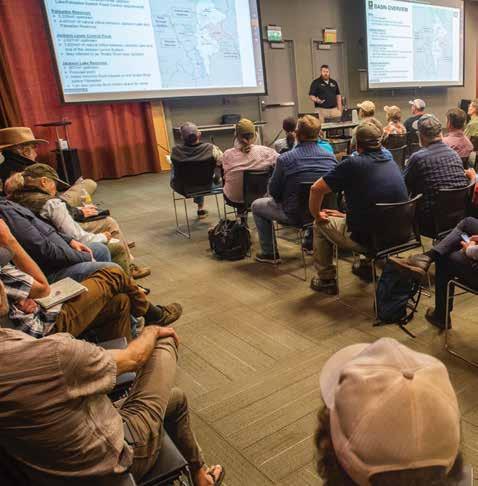
For the Snake River, the senior water users are the irrigators in Idaho who’ve had claim to the river since they helped pay to build Jackson Lake Dam more than 100 years ago. Water rights are purchased once—many Idaho irrigators have held their rights for multiple generations—after which they can be bought and sold though what’s being bought and sold is a right to use the water, not own it. Historically, surface and groundwater were treated separately. Now, as the hydrological links between the two have become clear, many water districts are being forced to consider both surface and groundwater together, adding to the complexity of the system.
The second part of Western water doctrine is that the water must be put to “beneficial use.” Water that is not used beneficially is considered wasted, and wasted water can lead to the forfeiture of water rights. (Hence the expression “use it or lose it.”)
“It’s the state’s water,” says Idaho House Rep. Stephanie Jo Michelsen of Idaho Falls. Michelsen’s family owns a number of farms and ranches in eastern Idaho that rely on the Snake River (both surface and groundwater) for irrigation. “The state issues the water rights, so you have a right to use it, but you don’t own it. You are required to use the water for the maximum benefit of all users. It’s important for people to look at the water as a resource and to try to manage it as a beneficial use for everyone.”
Just what defines a beneficial use is the rub. For ranchers and farmers, that definition is obvious. Water is critical to allowing the desert to bloom, and, therefore, its best use is for irrigation. According to the Idaho Department of Water Resources, the Snake River Plain’s agriculture is worth roughly $15 billion per year—that’s in an area that averages less than 12 inches of rain an-
nually. Idaho’s agribusiness accounts for 20 percent of that state’s GDP. Seventy-four percent of all agribusiness in Idaho is located along the Snake River.
Despite the fact that Reclamation manipulates flows in the Snake down to the very last trickle, the river remains quite healthy in its upper reaches through Jackson Hole. Though not without issues, overall it is remarkably clean and an important component of the Greater Yellowstone Ecosystem, the largest intact ecological unit in the Lower 48 states.
Leslie Steen, the Wyoming program director for Trout Unlimited, a national nonprofit with the mission of “bringing together diverse interests to care for and recover rivers and streams so our children can experience the joy of wild and native trout and salmon,” says, “The Upper Snake is unique in

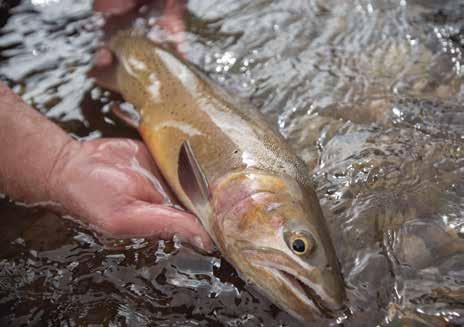
officials routinely warn people not to recreate in it and recommend against consuming fish from its waters. The Snake’s native salmon runs, which were once prized, are now threatened with extinction.
“The Snake River in Wyoming is very different from the Snake River in Idaho,” says Scott Bosse, the Northern Rockies director of American Rivers, a nonprofit that works to protect and restore rivers throughout the country. “We saw this whole conflict between Wyoming and Idaho during our campaign to protect the [Snake River] headwaters as Wild and Scenic [in 2007 and 2008]. It boiled down to people in Wyoming who wanted a free-flowing river for wild and scenic values, and those in Idaho who saw the Snake as a big ditch to benefit ranchers and farmers.”
The Snake River Plain receives less than 12 inches of rain annually. Thanks to irrigation from its namesake river, it is able to help produce $15 billion of agriculture every year.
that it has a healthy, stable native cutthroat trout population.”
“We are surrounded by highly compromised, nonintact watersheds,” Steen told Jackson Hole magazine reporter Mike Koshmrl in 2020. “They’re great fisheries, but they are not like what we have in [Jackson Hole]. As time goes by and the climate warms, this might be one of the last best places for cutthroat, if we can hang onto it.”
It’s not just cutthroat. The Snake provides critical habitat for a broad spectrum of plants and animals. All the native wildlife species that traditionally inhabited this stretch of river—with the exception of the northern leopard frog—still live here and are self-sustaining. The river supports the largest elk herd in the world, as well as grizzly bears and wolves, trumpeter swans, common loons, and nesting populations of bald eagles and peregrine falcons.
Thousands of boaters and anglers float the Snake in Jackson Hole every summer. People walk along its banks, exercising their pets, socializing with friends and looking for birds and wildlife. The river is a focal point—a place where people go to relax, recreate, and find spiritual solace and renewal. In Idaho, that experience is different. The Snake that flows from the Wyoming border to Oregon is so polluted by agricultural runoff that public health
While the economic benefit to Idaho agriculture is easy to put a price tag on, it’s more difficult to put specific numbers on the economic impact of the uses—recreation, fisheries, limited irrigation, and healthy riparian ecosystems—associated with the Snake River in Jackson Hole. The outdoor recreation income for the entire state of Wyoming was valued at $2.2 billion in 2022, according to the U.S. Department of Commerce’s Bureau of Economic Analysis. That equates to 4.1 percent of Wyoming’s gross domestic product.
Fly fishing is also important to Jackson Hole, supporting numerous businesses and creating hundreds of jobs. What that means monetarily is unclear, though. The fly fishing industry for all of North America is valued at $75 million, a fraction of the billions that potatoes, dairy, sugar beets, alfalfa, wheat, and trout farming bring into Idaho.
But is it just dollars that determine value? As Trout Unlimited’s Steen points out with the native fish in the Snake, Jackson Hole’s relatively intact ecosystem supports things that are hard to put a monetary figure on. Here we have clean water, intact fisheries, healthy wildlife populations, outstanding opportunities for recreation, and scenic splendor. These things feed our economy and sustain us in immea-
surable ways. They allow us to experience the solace of nature and to enjoy the wellbeing that comes from living a healthy lifestyle in the outdoors. They provide jobs and support local businesses. They are also threatened by climate change, population growth, and invasive species, which have many people in Jackson Hole convinced that leaving water in the river should be considered as important as using it for irrigation.
“When the majority of water rights in our region were allocated, there was not much concern for the overall health of the Snake River watershed or rivers in general,” says Aaron Pruzan, owner of Rendezvous River Sports and a kayaker and river advocate. “While we have all benefited from the impressive agricultural production on the Snake River Plain—and I respect the value of irrigation being tied to the land—we must develop a more balanced approach moving forward that also respects the value of clean, free-flowing water. The arteries of the ecosystems are of critical importance to the native plants and animals and the river recreation that makes the Snake headwaters region thrive, and they need to be treated as such.”
Pruzan says we’ve learned a lot since the first dams were built on the Snake more than 100 years ago. Even as recently as the 1970s, when he was a kid, no one thought salmon would be brought to the brink of extinction in the Northwest; now we know they are struggling as a result of humancaused changes to rivers. Dams hailed as incredible feats of engineering— which Pruzan acknowledges they are—have caused devastating ecological impacts that were ignored or unknown for decades.
“It is remarkable that water-resources solutions from over a century ago continue to provide enormous value to an agricultural economy that not only serves our nation, but serves the world,” says Michael Coffey, a Bureau of Reclamation public affairs officer for the Columbia-Pacific Northwest Region. “At the same time, those solutions are not static. Reclamation continually adapts to changing envi-
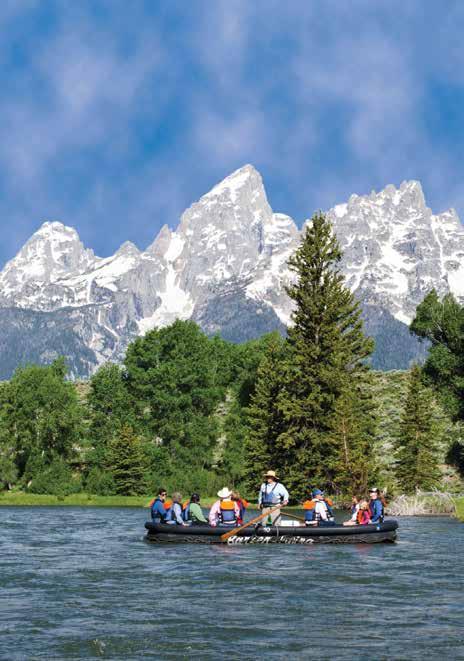
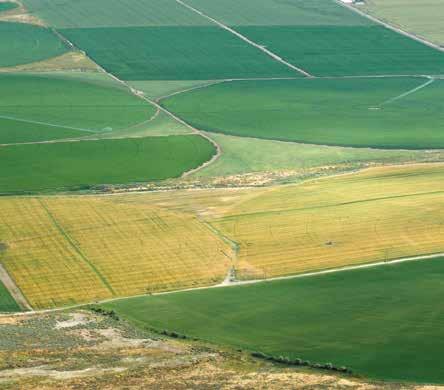
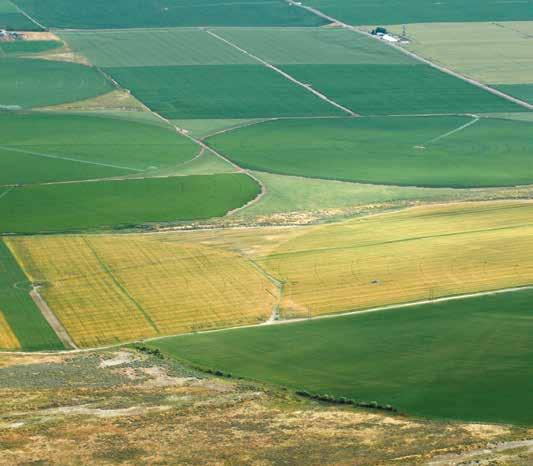
“There is certainly not going to be more water— most models predict less— and there is pretty strong resistance from water-rights owners to give any of it up.”
—DARREN RHEA, REGIONAL FISHERIES SUPERVISOR FOR THE WYOMING GAME AND FISH DEPARTMENT
ronmental, social, and economic conditions through ever-evolving scientific information and decision-making tools with the goal of providing value long into the future.”
Yet, there’s an inherent conflict between Reclamation’s ability to adapt and its contractual obligations. The authorized purpose of Jackson Lake Dam is irrigation, and Reclamation is legally bound to deliver water to the farmers and ranchers who own the rights to it. With a fully allocated river and thirsty farms waiting for their water downstream, there isn’t a lot of wiggle room for keeping flows in the upper Snake to support recreation, fisheries, and ecosystem health. Finding ways to maintain flows in the Snake’s upper reaches means finding ways to tweak the system while still delivering water downstream.
“I’d like to say that we have this figured out,” says Paul Arrington, the executive director and general counsel at the Idaho Water Users Association, a group formed in 1937 that today represents irrigation water users, municipalities, hydropower, aquaculture, agribusinesses, and businesses interested in the perpetuation of wise wa-
ter use in Idaho and the coutry. “But it is a work in progress. There are ongoing and significant disputes all along the [Snake River] Plain about the impacts of groundwater pumping on the overall water supply. We struggle with shifting precipitation patterns and how they impact our ability to store water. We are engaging in recharge and cloud seeding to help shore up resources.”
The Idaho Water Users Association is just one of the many groups and agencies that have a stake in the future of the Snake River. To help coordinate these groups, a new coalition of federal and state agencies, conservation groups, nonprofits, and other stakeholders was created in 2023. Dubbed the Snake River Headwaters Watershed Group, the coalition is dedicated to ensuring the Snake remains a healthy and resilient river into the future.
“The Watershed Group is not a vehicle to change water law, it’s a vehicle to find common interests and share information,” says Yvette Converse, the chief of science and resource management at Grand Teton National Park. Converse represents the park in the Watershed Group and was active in its design phase last year. “Another reason the Watershed Group is good is that sometimes it’s not that things aren’t happening, it’s that if we don’t know they are happening, it’s almost like they aren’t happening,” she says. “The group helps us know what everyone is doing and how we fit together.”
Water flows are just part of what the Watershed Group will address. Work-
ing groups have been formed to look at management, ecosystems, data and monitoring, and outreach and community engagement. Still, flows are a big part of the equation.
“There is certainly not going to be more water—most models predict less—and there is pretty strong resistance from water-rights owners to give any of it up,” says Darren Rhea, the regional fisheries supervisor for the Wyoming Game and Fish Department, who has also been involved in the formation of the Watershed Group. “There may be opportunities to buy or sell water, but that seems likely to be cost prohibitive. I see our best opportunity for flexibility being in how water is managed, stored, and moved through the system. Timing seems to be the bandwidth where some solutions for the future exist.”
“The Snake River is a super complex system,” says American Rivers’ Bosse. “There’s a water lawyer for every acre foot of water in the river. But the day is coming when we will have to sit down and reconsider water management. It’s going to be a long, probably decades-long, process. The Snake River flows for over 1,000 miles through Wyoming, Idaho, Washington, and Oregon—four different states with lots of complexities, lots of different agencies, lots of different stakeholders. What is doable, especially if you live in northwest Wyoming, is to guarantee there is enough water flowing below Jackson Lake Dam. I think we can solve that problem. It’s taking a relatively small bite out of a huge issue.” JH
The Craig Thomas Snake River Headwaters Legacy Act, passed in 2009, designated all or segments of 13 rivers and streams totaling 414 miles of waterways as Wild and Scenic. The purpose of this designation is to protect outstanding ecologic, geologic, fisheries, scenic, recreation, and cultural values, as well as ensure the river remains free-flowing. However, in order to secure the passage of the act, a provision that nothing in the Wild and Scenic designation will affect the operation and management of the Jackson Lake Dam was included.
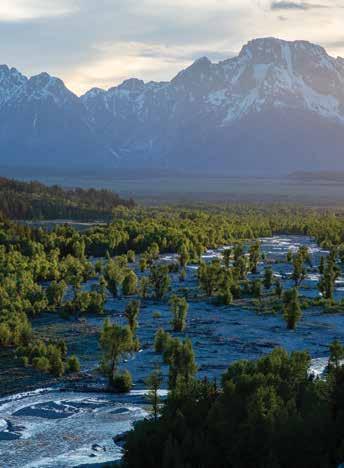
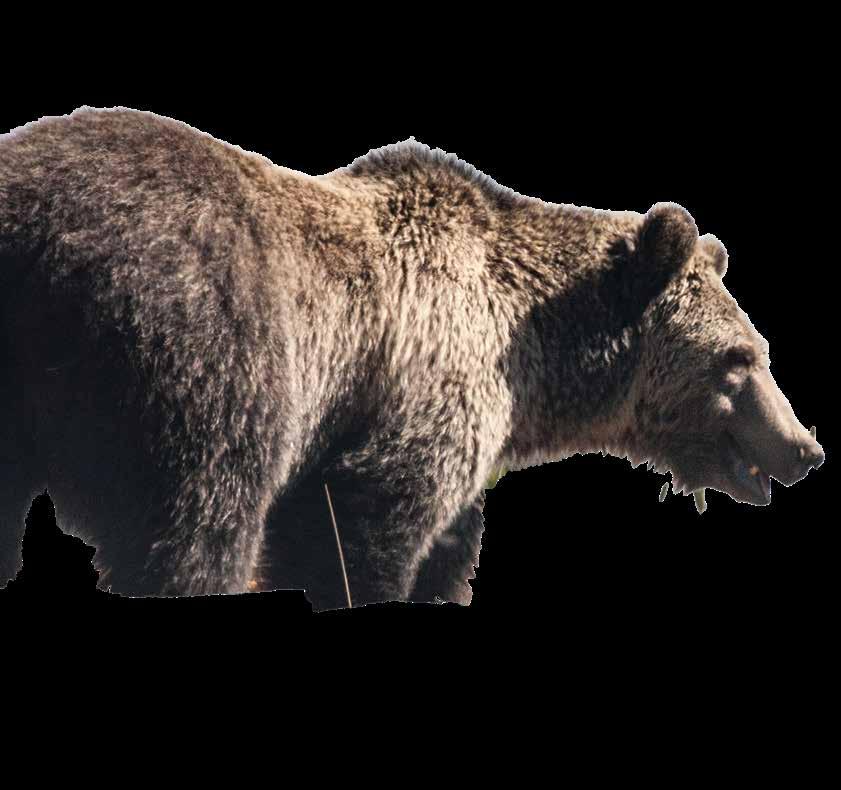

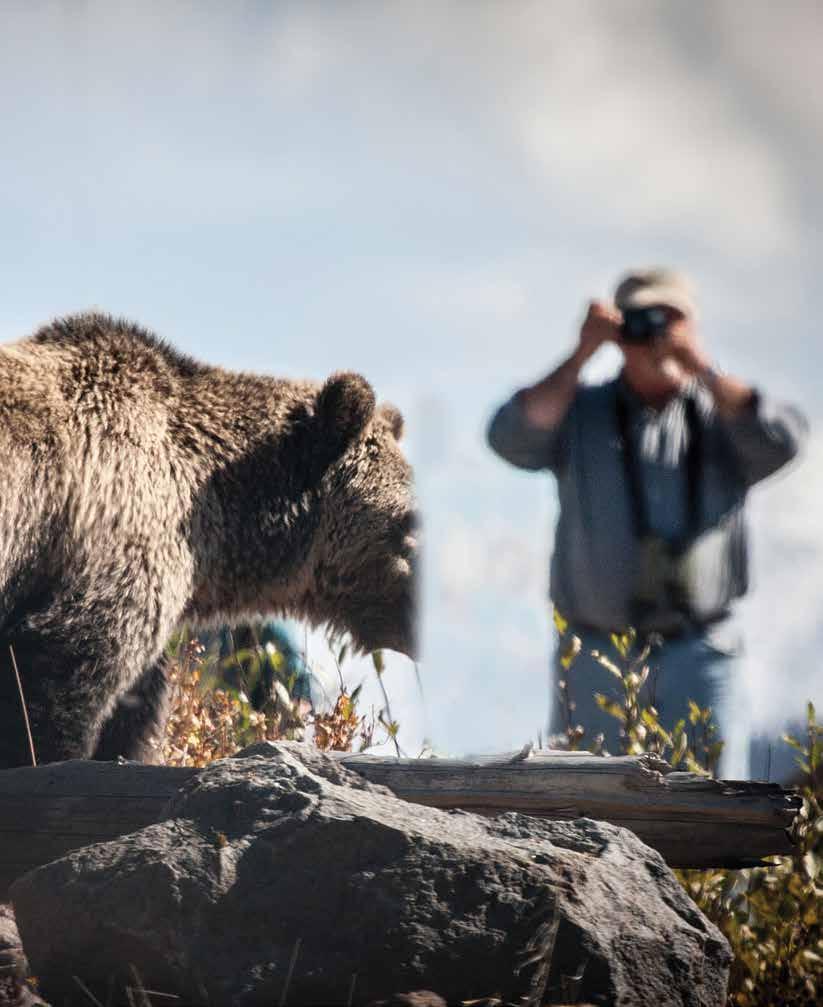
Yellowstone and Grand Teton National Parks’ views are striking, but it’s often the wildlife that steals the show for the four million-plus visitors who flock to the region annually. Here’s what you need to know to stay safe in their midst— and avoid inadvertently harming wildlife yourself.
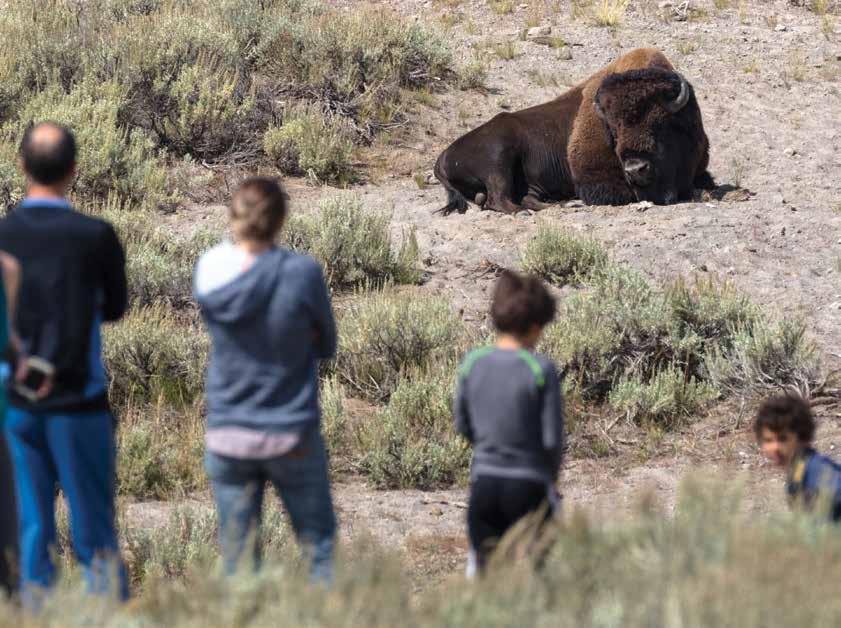
The 43-year-old Mississippi woman told
National Park Service officials that she had just wanted a photo of herself with a bison in frame.
Standing alongside her daughter near the Fairy Falls trailhead in Yellowstone National Park, the visitor put her back to the shaggy brown animal so large and powerful that wolf packs and grizzly bears choose their battles wisely before engaging. Park officials later ascertained the hulking bison was just six yards away from the Mississipians—about the span of a decently sized kitchen.
Before the photo was snapped, a passerby imparted a warning: Too close. The woman knew it.
“She actually admitted to having read the literature and read the signs, but she saw people too close to the bison so she figured it would be OK,” the late Yellowstone Park spokeswoman Amy Bartlett told the Jackson Hole Daily at the time.
According to the account detailed in the newspaper, the woman and her daughter heard bison footsteps approaching from behind.
They began to run.
Too late.
“The bison caught the mother on the right side, lifted her up and tossed her with its head,” park officials reported at the time.
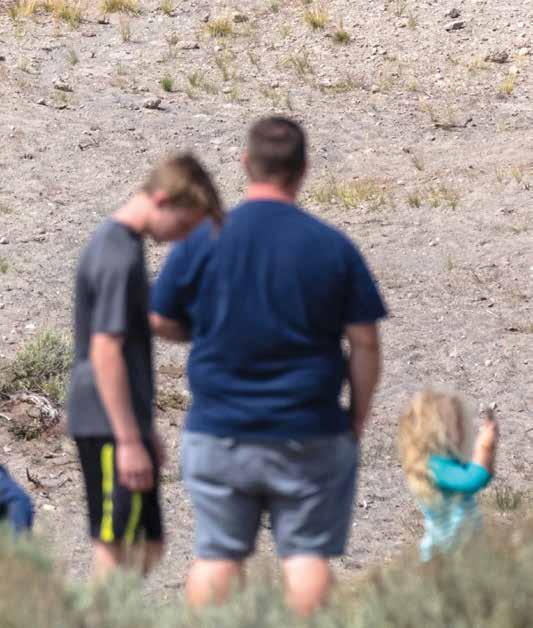
The middle-aged Mississippian’s father acted instinctively, just like the bison. He dove on top of his daughter and “covered her with his body to protect her.” That’s not recommended. The irritated bison could have easily gored him, too. But fortunately, it worked. The bison moved off about three yards, the tourists scrambled for safety, then headed for the Old Faithful Clinic to get their non-life-threatening injuries checked out.
The woman could have had it much worse. She was charged and tossed on a Tuesday in late July of 2015, a summer when five Yellowstone tourists were injured by bison. Of the five (three U.S. residents and two visitors from abroad), four were gored—opened up—by bison horns. “The other four injured were

“She actually admitted to having read the literature and read the signs, but she saw people too close to the bison so she figured it would be OK.”
—AMY BARTLETT, LATE YELLOWSTONE PARK SPOKESWOMAN
all life-flighted because of puncture wounds, and she was not, so she was extremely lucky,” Bartlett said at the time.
Five in a single season is unusual. But the reality is that a bison goring or two is unfortunately an expected part of a Yellowstone National Park summer. Historically, conflict has been inevitable when you add four to five million tourists to a landscape that’s home to healthy populations of toothy, large, and/or antlered megafauna. Yellowstone and its neighboring Grand Teton National Park have very clear instructions plastered on signs, websites, and in pamphlets distributed at entrance gates: always stay at least 100 yards from bears and wolves and 25 yards away from all other animals. Nevertheless, the messaging oftentimes
is ignored, missed, or gets metaphorically lost in the crowd by people who, in many cases, are in awe of wildlife they’re seeing for the first time in their lives—like bison, a species that was nearly wiped off the planet a century and a half ago.
The National Park Service does what it can to avert bad outcomes. Besides rangers and signage, there are volunteer-based units like Grand Teton National Park’s wildlife brigade whose sole purpose is to keep people and fauna safe when they mix at places like roads. And on top of that, there are people like Jackson Hole resident Jesse O’Connor, a professional tour guide who carries a whistle on his belt and who considers it his duty to help educate park visitors—and intervene when they’re making poor choices. “I will let them know; I will say, ‘Too close! 100 yards away!,’” he says.
O’Connor, who spends an average of 60 days guiding in the parks annually, perceives a mixed bag of human behavior leading to wildlife interactions going sideways. Some tourists really do miss the warnings, come from large metropolitan areas lacking wildlife, and are naive about the danger. But a significant percentage of people are willfully dismissive of the


A pair of foreign tourists were cited in 2016 for picking up a baby bison in Yellowstone National Park because they thought it was cold. Park officials later had to euthanize the calf after it was abandoned by its herd and was causing dangerous conditions along the road. A similar situation happened in May 2023.
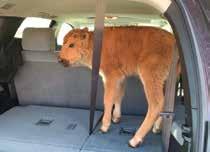
rules. “There are a lot of people who say, ‘That isn’t going to happen to me, the rules don’t apply to me,’” he says. “People make dangerous assumptions because they think they know better, and that’s getting worse and worse. Rejection of authority.”
Often, it’s the most flagrant disregard for the rules that earns the most attention. There’s an Instagram account devoted to documenting the behavior—@touronsofyellowstone, with a half-million followers—and there’s a good chance you’ve seen footage and online outrage stemming from these incidents, which often go viral. There was the drunk guy in 2018, Raymond Reinke, taunting a bison in the middle of a road during a bison jam. Or the clip from August 2023, when a group of Yellowstone tourists sprinted down the road to get a closer look at a roadside black bear sow with two cubs—a potentially perilous decision. Or the viral story from 2016, when a Canadian visitor “saved” a bison calf from the cold by
putting the young animal in his trunk, leading to the calf’s death (separate a calf from its herd and mother, and that can be the outcome: a mercy killing of a young defenseless animal that’s going to suffer if left on its own).
That list could keep going and going. There’s also an inverse to the most headline-worthy, shockingly ignorant, disrespectful human behavior. Yellowstone’s Mary Wilson, a ranger based at park headquarters in Mammoth Hot Springs, has seen situations time and again where tourists put themselves in harm’s way without even realizing it. Oftentimes, what happens in Mammoth looks like this: A cow elk is grazing or bedded in the developed area, and its newborn calf is tucked out of sight nearby. The visitor might not even be interested in the elk but wants to get to the picnic tables, bathrooms, Mammoth Hot Springs Hotel, or another destination. Mama elk’s protective instincts kick in, and just like that an unknowing visitor has been rammed
to the ground and is being pummeled by elk hooves. This exact scenario unfolded twice in three days in early June of 2018—and one of the recipients was a seasonal Yellowstone concession employee. “Most of the time, they don’t know,” says Wilson, a Yellowstone North District ranger in the Resource, Education, and Youth Programs division. “They don’t know there’s a risk because they’re so excited to see an animal.”
Yellowstone officials do what they can to prevent these types of accidents from occurring. During the elk rut in Mammoth—a time of year when it’s the bulls that get irascible—they erect prominent signs warning tourists. “We have a lot of temporary signs that we’ll put in the ground for maybe just 20 minutes,” Wilson says. “My staff, they do a lot of sign-moving and barricading and coding. We really actively manage that.” And Yellowstone’s preventative work goes beyond signage. From September into November, they actually remove the picnic tables from the front
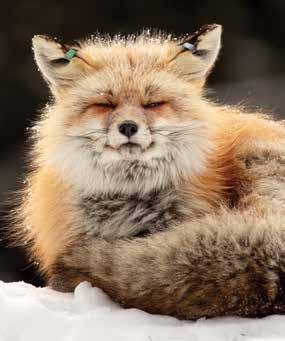
Grand Teton National Park hosts a similar number of annual visitors as Yellowstone. But perhaps because of geography and where wildlife congregates, in the Tetons, there are far fewer bison gorings, elk tramplings, and other wildlife run-ins that tend to cause human injuries. That’s not to say the more southerly, smaller park is immune to human-wildlife conflict.
In the heavily trafficked Jenny and String Lake areas, there are years where there are chronic issues with habituated, food-conditioned black bears targeting picnicking visitors. Oftentimes, it’s not the result of deliberate wildlife feeding. Rather, a guest leaves a backpack unattended while going for a dip in the lake, and a savvy bruin takes advantage. Unfortunately, the behavior often doesn’t pan out for the bears. Although park rangers attempt hazing animals, there’s a point where the intelligent ursines become too hooked on human-associated foods. Almost inevitably, those animals are considered unsafe and end up dead—put down by rangers.
And it’s not just black bears. Sporadically, there have been issues with foxes and coyotes boldly approaching Teton Park visitors looking for handouts. On a couple of occasions, those foxes have stopped responding to hazing operations. “That could be enough to euthanize an individual,” Grand Teton Park biologist John Stephenson says. Moral of the story: Don’t feed the foxes. Or any other wild animal.
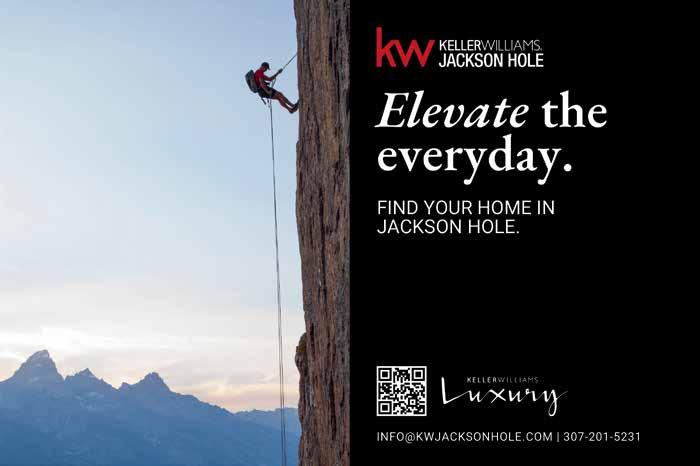
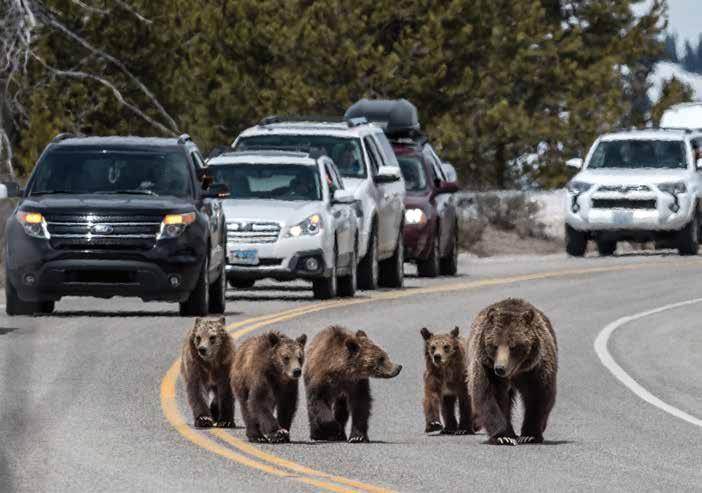
of the Albright Visitor Center—an area where rutting bull elk like to congregate. At night they even close off the parking lot nearest the visitor center. “We get everybody out by five o’clock, so people can’t park in there and be right on top of all the animals,” Wilson says. “But they can still enjoy them, just from a distance.”
Yellowstone has had success in turning the corner on chronic conflict between tourists and wildlife, most notably with grizzly bears. In the 1970s, park officials closed off garbage dumps that dozens of grizzlies had depended on for their main source of calories. Simultaneously, they installed bearproof infrastructure throughout the park: bearproof garbage cans and dumpsters, and poles in the backcountry for hanging food bags. And, at the same time, rangers stepped-up education efforts,
slowly starting to enforce food-storage regulations.
Prior to all these changes, grizzly bears and humans were in a constant state of friction. Kerry Gunther, Yellowstone’s lead bear biologist, runs through the numbers. “We used to average about 138 bear-caused propertydamage incidents per year, and 48 human injuries per year,” he says. “Now, we’re down to less than a dozen [overall conflicts]. And visitation has gone way up.” Bear-caused human injuries have declined by a remarkable 98 percent. Now, Yellowstone averages a single mauling a year. “And those are almost always surprise encounters in the backcountry, primarily with females with cubs,” Gunther says.
Gunther credits the extraordinary downturn in conflict to Yellowstone’s education campaign—and to tourists listening and changing their behavior. “We’ve hammered the message since
1970 not to feed the bears,” he says. “It’s actually more common for somebody to try to feed a coyote or an elk than a bear.” Nowadays, most of Yellowstone’s bear-caused human injuries are not from people making stupid decisions, but rather are just from bad luck and bad timing. There’s likely an element of inevitability explaining the remaining conflict. Mix millions of tourists—many urban folks ignorant of wildlife’s true danger—with a healthy population of grizzly and black bears, and something is bound to happen, regardless of whether there’s signage, attentive ranger corps, and other visitors around to help police each other. “The holy grail for me would be to have a year with no conflicts,” Gunther says. “I just don’t think we can ever get there with over four million visitors. People make mistakes. They’re on vacation and thinking about other things, and we’re pretty happy with how low we have conflicts.”
Both Yellowstone National Park (nps.gov/yell) and Grand Teton National Park (nps.gov/grte) have an abundance of wildlife-viewing information posted on their websites—and in many other places. “We have a lot of avenues,” said Teton Park spokesman C.J. Adams (who has since switched jobs to work for the Bridger-Teton National Forest). “We have the Wildlife Brigade to interface with people directly. Beyond that, we do a lot of social media posts. There’s messaging in our park newspaper that’s handed out at the gates and visitor centers. And we work with the Grand Teton National Park Foundation and Bear Wise Jackson Hole to get those messages out to the public.”
The messaging will tell you where to go. In Grand Teton, for example, head to Mormon Row in spring, summer, and fall for a shot at viewing the park’s migratory pronghorn. But there’s also guidance on how to stay safe. The short of it: keep a reasonable distance. Those distances differ depending on the species, and they’re regulated and aligned in the two national parks.
“Whether you are in your vehicle or on foot, you must maintain a distance of at least 100 yards from bears and wolves, and 25 yards from all other wildlife,” Teton Park rangers warn online. “Animals in the park are wild and may act aggressively if approached.” These distances are a minimum though; if an animal is reacting to your presence, you’re too close.

There are also more-elaborate third-party guides that are tailored to wildlife safety in the region. One of those, available for free online (grizzly399.org/ dl_guide.php) was funded and compiled by the Deidre Bainbridge Wildlife Fund, named after the late environmental advocate and Jackson Hole resident. The guide has general biological information and tips for wildlife viewing, and also specialized information about how to do so safely. It’ll tell you, for example, how to recreate safely with a dog in a wildlife-rich environment like the Greater Yellowstone Ecosystem. A couple of pointers: It’s illegal to take your pooch into the backcountry or on frontcountry trails in Grand Teton and Yellowstone National Parks. On the national forests adjacent to the national parks, dogs are allowed, but never let yours chase wildlife. It could earn you a fine, or worse. JH


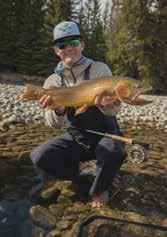
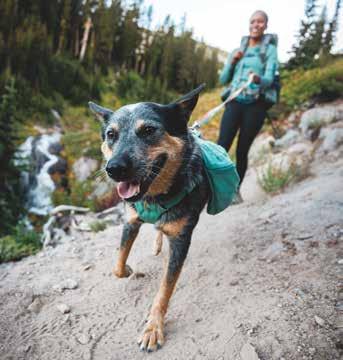
Place names in our valley come from many different sources—from the Shoshone language to early explorers and historic characters.
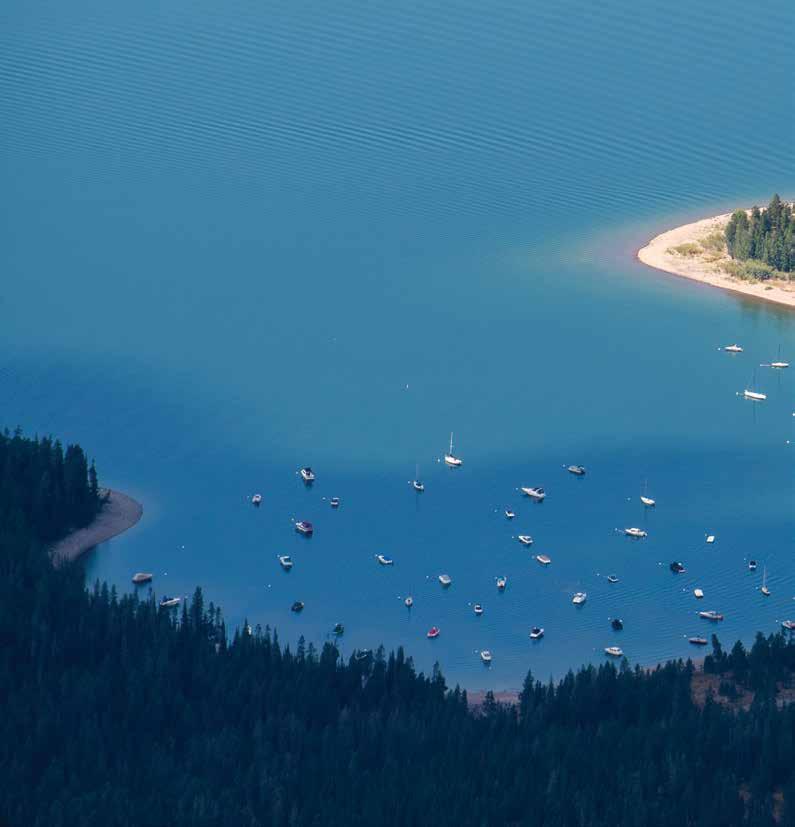
In 1924, when today’s Grand Teton National Park was still the Teton National Forest, cattle rancher, conservationist, and entrepreneur Stephen Leek founded a hunting and fishing camp in the quiet cove on Jackson Lake that today is Leek’s Marina. He applied for a Forest Service permit for “a resort for the accommodation of tourists,” completing construction in 1927. In summer, it was “Teton Camp for Boys,” and in the fall, a home base for guided hunting trips. The permit and business changed hands many times and is today a boat launch and lakefront pizzeria. Leek first arrived in the valley as a trapper in 1888 and became one of its first permanent residents. He homesteaded on Flat Creek and began cattle ranching and was one of the first to suggest management of elk, using a camera gifted to him by hunting client and founder of Eastman Kodak, George Eastman, to document the plight of the herds whose migrations and grazing were harmed by fencing and livestock. His work helped to found the National Elk Refuge in 1912.
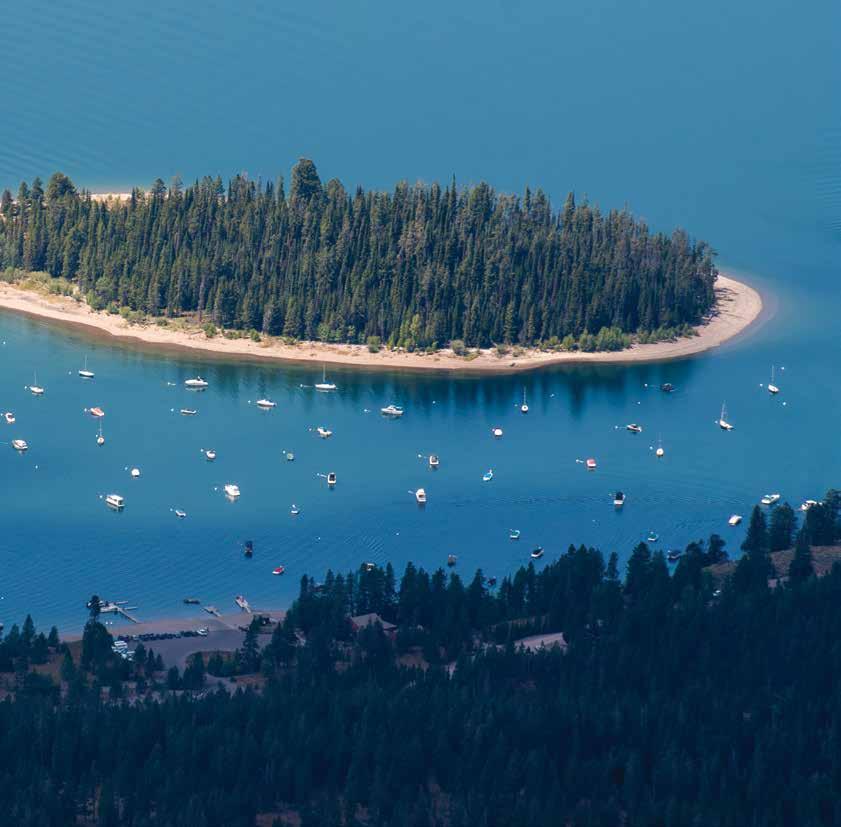
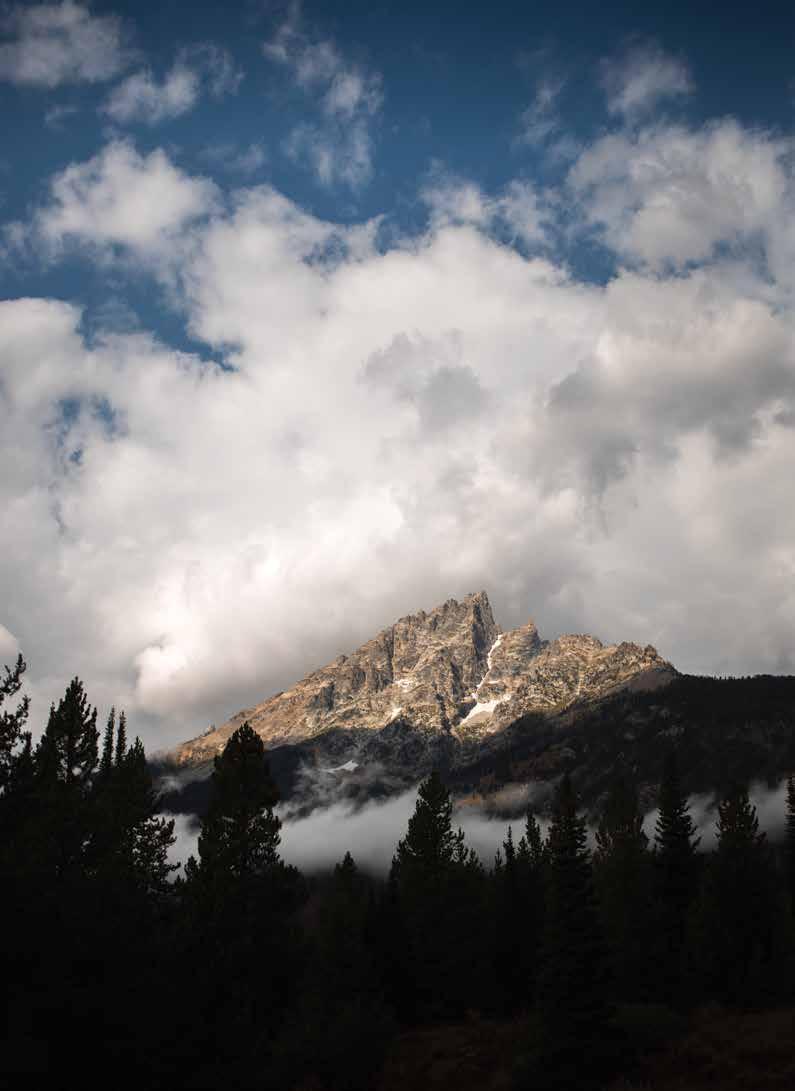
Teewinot is the name of a beginner ski lift at the Jackson Hole Mountain Resort, a condo development in Teton Village, and a rugged peak in the Teton Range. The Shoshone word means “many pinnacles.”
At 12,330 feet, the mountain is the sixth highest in the Teton Range, soaring more than 5,500 feet above Jenny Lake, just northeast of the Grand Teton. Indigenous people probably called the entire range Teewinot, as the description certainly applies to the mountain views. When French fur trappers arrived in the early 1800s, the various peaks were given their modern names.
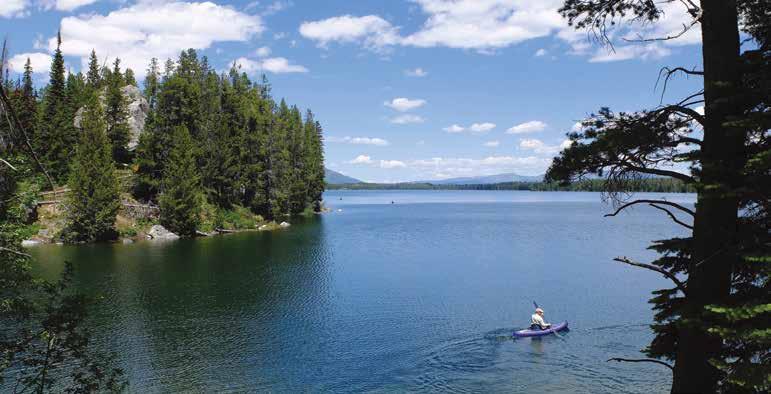
Leigh Lake, between String Lake and the foot of Mt. Moran in Grand Teton National Park, is named for Richard “Beaver Dick” Leigh, an English-American fur trapper, scout, and guide who lived in the Tetons from 1863 until his death in 1899 at age 68. A well-respected mountain man, Leigh was tall with fiery red hair, which helped make him a particular fascination among Native Americans. He and his Shoshone wife, Jenny, worked for the Hayden survey of the Tetons in 1872, and the team named Leigh Lake and Jenny Lake for them. The nickname “Beaver Dick” was reportedly given to Leigh by Brigham Young, president of the Church of Latter-day Saints from 1847 to 1877, for his trapping skills.
Deadman’s Bar is an appropriate name for this gravel bank in the Snake River a halfmile north of the Snake River Overlook. In 1886, a rafting group found the bludgeoned and gunshot bodies of three miners—German immigrants Henry Welter, T.H. Tiggerman, and August Kellenberger—partially buried here. John Tonnar, who had joined them in mining for gold along the river, was arrested for the murders but later freed on the grounds of self-defense. A skull believed to belong to one of the victims is at the Jackson Hole Historical Society and Museum—though it’s not currently on display. Today Deadman’s Bar is a popular put-in for scenic float trips and fishermen.

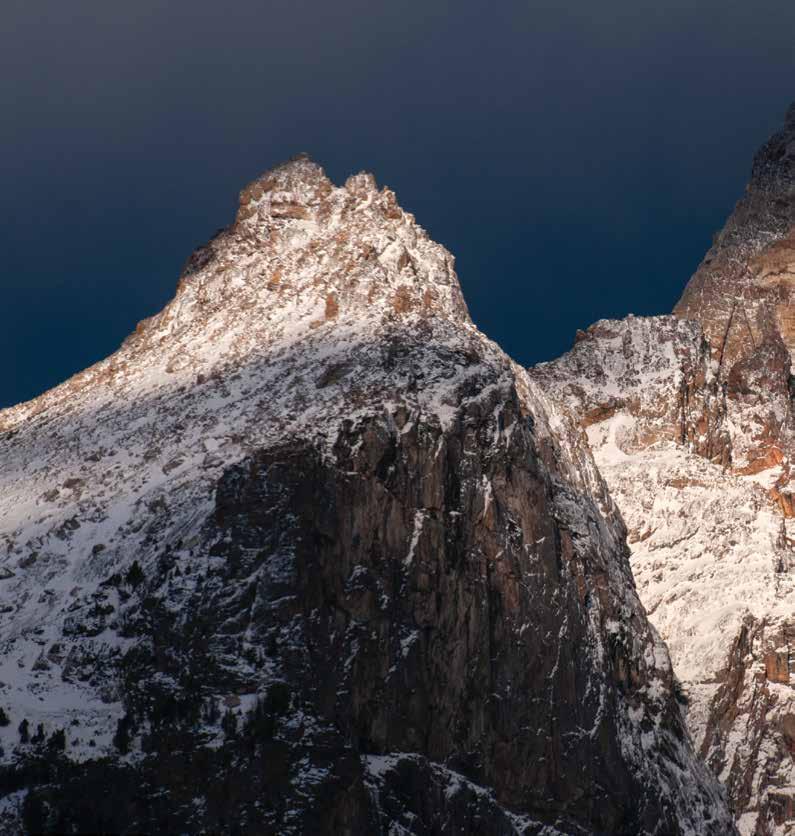
Disappointment Peak, left, 11,623 feet tall, rises above Amphitheater Lake directly in front of the Grand Teton. It got its name because early mountaineers thought they could get to the summit of the Grand from this peak’s summit. In 1925, four Colorado climbers led by Phil Smith (who later became one of the first rangers in the new Grand Teton National Park) reached Disappointment’s summit only to find a 450-foot drop between it and the lower part of the Grand’s East Ridge. The name came after their failed rappel attempt into the gap. Today, climbers find some of the most difficult climbing routes in the Tetons on Disappointment Peak and its secluded neighbor Teepe Pillar, visible just to the right of Disappointment Peak.
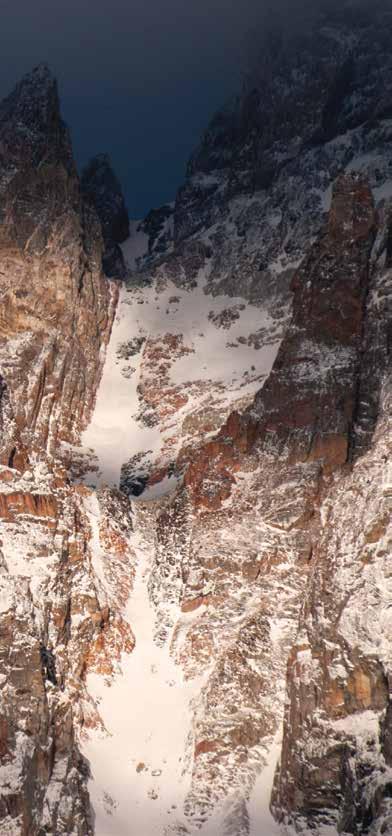
Bradley and Taggart Lakes are named for members of the Hayden Geological Survey of 1872, which first documented the geology and topography of the Yellowstone area that later became Yellowstone National Park. Both lakes were formed by glaciers and lie just above the valley floor. The 225-acre Bradley Lake is named for Frank Bradley, the survey’s chief geologist. The 305-acre Taggart Lake is named for William Rush Taggart, an assistant geologist under Bradley.
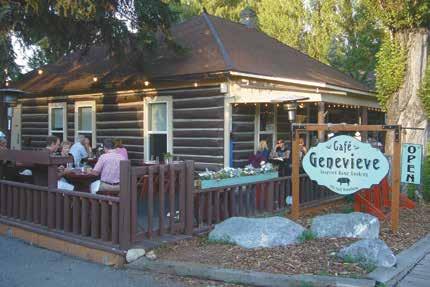
Located in a historic log cabin in downtown Jackson, Café Genevieve was named in honor of Genevieve Lawton Van Vleck, who, in 1920, became a member of the first all-female town council in the U.S. In 1906 Roy Van Vleck and his brother Frank moved to Jackson and built the cabin, which housed a mercantile store. Genevieve was in Michigan, and Roy planted several willow trees along Broadway for her. She moved west, and they married, and Genevieve helped run the store and several community organizations. She was soon elected to Jackson Hole’s “Petticoat Government.” When managing partner Fred Peightal and executive chef Joshua Governale opened Café Genevieve in 2010, they wanted to keep its historic character. JH
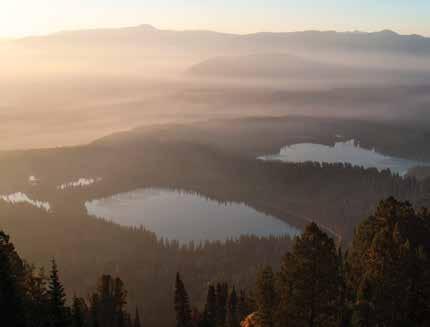
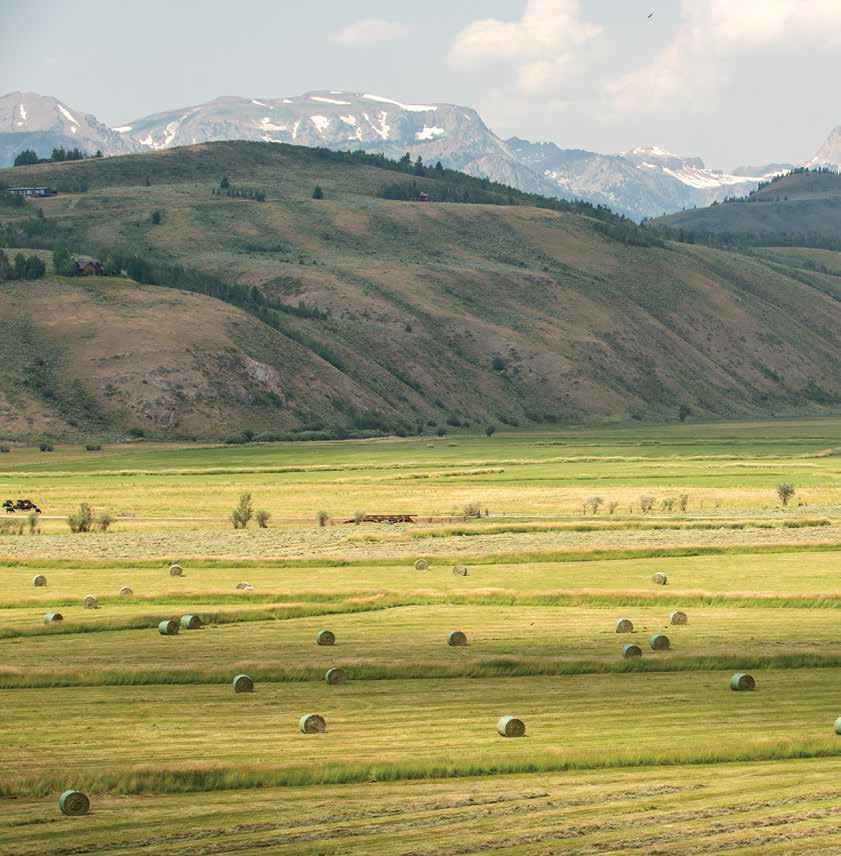


Do conservation easements protect open space and wildlife at the expense of the Jackson Hole community?

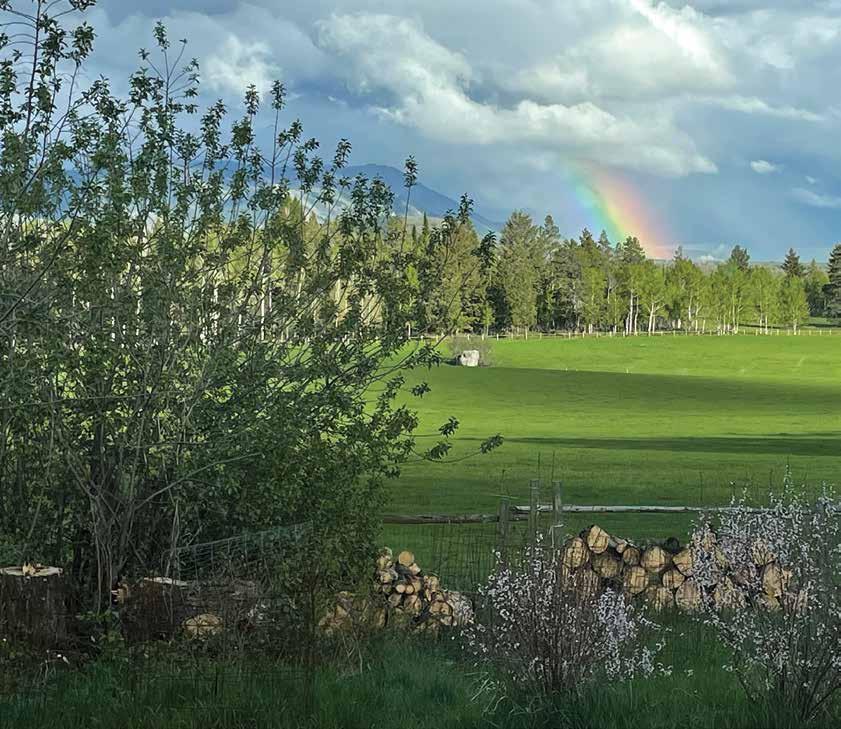
When Claire Fuller steps outside her home on the Huidekoper Ranch in Wilson, it’s as if she’s seeing a scene from Teton County’s past: This small, high-alpine farming operation, which supplies local markets and restaurants with quality produce, also has a smattering of open fields supporting a horseboarding and haying operation. And a couple of greenhouses, sheds, and two modest homes flanked by aspen and pine forests round out the 140-
acre property, home to Fuller, her husband, Brent Tyc, and her brother Nate Fuller Elk, mule deer, migratory birds, raptors, and other wildlife frequent the property as their ancestors have done for millennia. And despite the ultra-lucrative market for pristine land to subdivide for the construction of luxury homes, that’s not the future for this bucolic acreage and wildlife habitat. Ever.
When Claire’s grandmother, Virginia Huidekoper, passed down the ranch to her heirs in 1997, she did
not grant a commodity to be divided and sold. Instead, she passed a place to live along with a responsibility, a moral ethic, and the idea of something greater than transient fiscal profit: stewardship of land, wildlife, and nature.
Huidekoper herself was a largerthan-life local character. Among her contributions to the valley, she was an author, climber, skier, and co-founder of the Jackson Hole News; and she piloted the flight that verified and documented Bill Briggs’s first ski descent of the Grand Teton
When Claire’s grandmother, Virginia Huidekoper, passed down the ranch to her heirs in 1997, she passed a place to live along with a responsibility, a moral ethic, and the idea of something greater than transient fiscal profit: stewardship of land, wildlife, and nature.
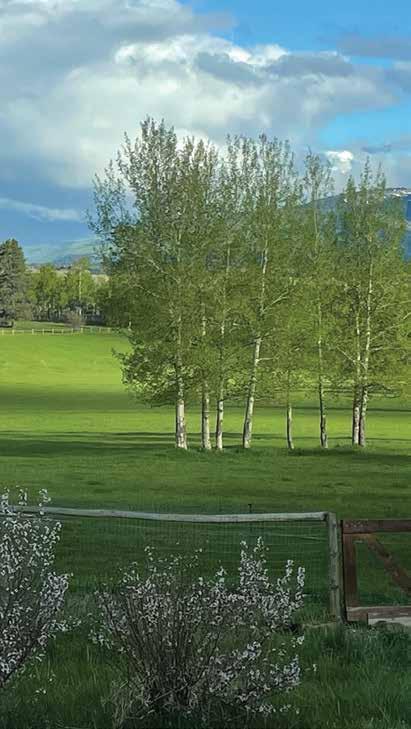
Huidekoper Ranch
in 1971. She donated her land’s development rights to the Jackson Hole Land Trust (JHLT). Land trusts are entities that purchase or accept donations of development rights, hold them in perpetuity, and monitor each parcel annually to en sure compliance with the original agreement regardless of the current owner.
Even if the Fullers—or any future landowner—would like to build another house for a family member or use the land in another way, the easement agreement Huideko per created prohibits it. “‘No development’ cuts both ways,” Fuller says. “But this place and the wildlife were here before me, and they will be here after me. It’s a really big choice for nonwealthy landowners, but fundamentally it comes down to different worldviews: stewardship of the land, or land as an investment vehicle.”
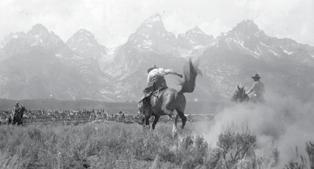
New History Museum Campus!
Meet Jackson Hole... 11, 000+ years of people and place
TUESDAY – SATURDAY, 10A – 6P
Expanded exhibits, historic cabins, research center & family friendly activities
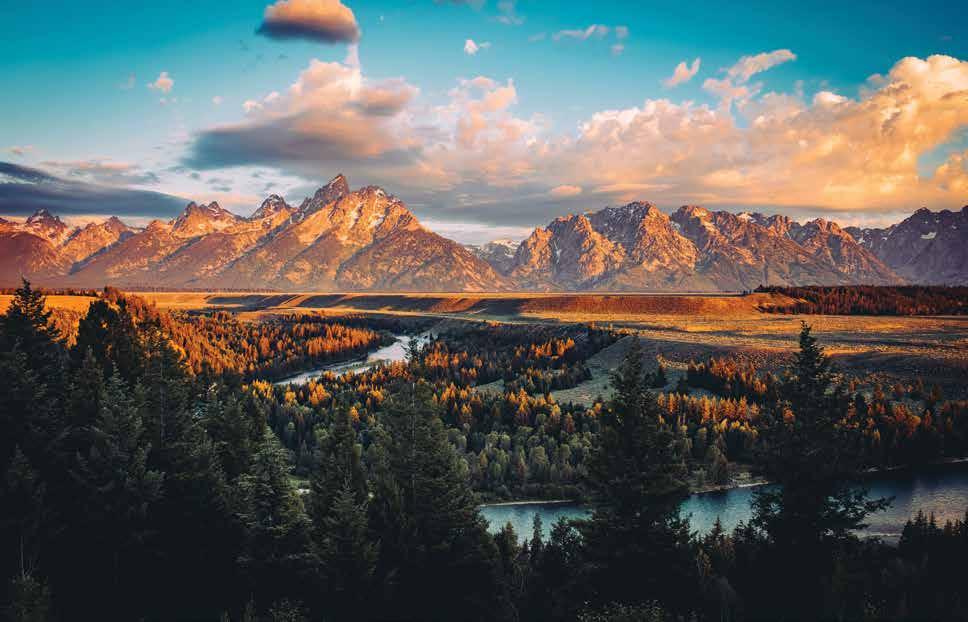
You can protect the ecosystem and your health!
Clean and check your shoes, clothes, packs, gear, pets, vehicles, and yourself before and after exploring and stay on designated trails to prevent the spread of invasive species and tick bites.
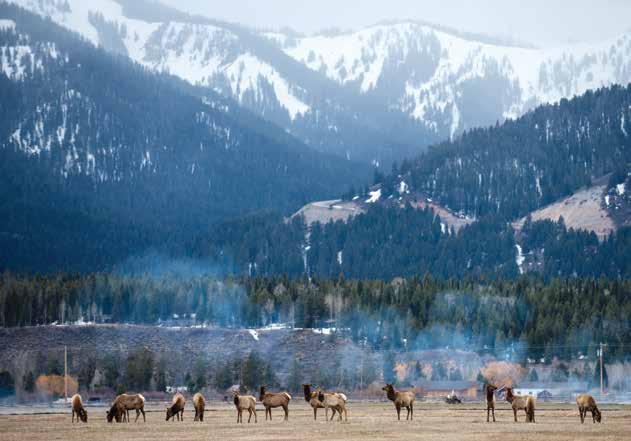
The region surrounding and including Teton County is cherished and known worldwide for vast preserved landscapes, wildlife, and wildernesses existing alongside contained corridors of human development. This did not occur by accident. It was a choice made by the government and people at the onset of European colonization here around the 1870s to limit industrial and other development and preserve a vast, geologically unique, and pristine wild place. (The U.S. Congress created Yellowstone National Park in 1872.) An oft-recited statistic is that 97 percent of the county’s more than 2.5 million acres is federally owned and managed public land, including Grand Teton National Park, part of Yellowstone, the National Elk Refuge, and part of the Bridger-Teton National Forest. That leaves only 3 percent of the land within county boundaries available to be privately owned.
This causes problems. According to the 2023 year-end Jackson Hole Real Estate Report, the average price of the 64 single-family homes sold that year in Jackson Hole was $5.04 million; in all of 2023, only three properties sold for less
than $1 million. For others, however, the problem is that 97 percent is not enough conservation in a location critical to wildlife. Some who fall into this camp see conservation easements as a way to protect private land from development. This group—proponents of public land and conservation over more development—say Teton County demands an exemplary level of land stewardship. The county is part of the Greater Yellowstone Ecosystem (GYE), which, depending on how it is defined, encompasses between 15 and 22 million acres in Wyoming, Idaho, and Montana. Yellowstone National Park is the ecosystem’s heart, but the area’s wildlife migrate around and through hundreds of miles surrounding the park. The GYE is among the world’s last few intact ecosystems; all the wild animals, apex predators, and longdistance migrations that existed in the region before the 1804–1806 Lewis and Clark Expedition still survive here. “There are only two intact temperate ecosystems left across the world: Tanzania’s Serengeti in Africa and right here,” says Max Ludington, president of the nonprofit Jackson Hole Land Trust. “At one point, these ecosystems existed everywhere across the world, and it remains here only because it’s been protected.”
A small herd of elk grazes in a field just east of Wilson in Hardeman Meadows, a conservation property. Some easements preserve critical corridors for wildlife as they migrate between their summer and winter ranges.
Yet development pressure is relentless, and residents and visitors sometimes question why there is so much public land and why any of the remaining 3 percent of private land should be protected from development. Part of the answer, says Ludington, is the location of the private land. “Homesteading was done where there is water. Water is the most critical resource for wildlife.” Today, development is heavily concentrated on the valley floor, but many of the remaining large rural tracts of land are along rivers and creeks, and provide interconnected corridors of public and private lands animals need to move, thrive, and migrate.
“National parks and forests are an important anchor, but private lands surrounding these public lands are essential to support big game migration and survival. Animals cannot have sustainable populations without an open and connected landscape,” says Jill Randall, big game migration coordinator for Wyoming Game & Fish. “Once land has been subdivided, it never goes back to functioning at a high level for wildlife.” Since it was founded in 1980, the JHLT has helped permanently protect more than 20,000 acres of land, including large tracts like the 1,848-acre Walton Ranch off Wyoming Highway 22 and a host of smaller properties.
Aconservation easement is a legal tool through which a landowner removes or restricts the development rights while maintaining ownership of the land. The process can seem opaque, and misunderstandings and misrepresentations are common. Not every piece of land qualifies for an easement. “Under the federal tax code, to be a deductible contribution, an easement must meet one or more of four requirements set by the Internal Revenue Service,” says Luther Propst, a Teton County Commissioner and conservation advocate. The four requirements are: protect habitat, preserve open space, preserve outdoor recreation, or preserve historically important land or buildings.
inspections per each agreement; a new landowner may not, for example, clear forests or add fences or buildings if the original contract prohibits it.
Ultimately, a conservation easement is the opposite action of an owner choosing to build as much as is allowed by zoning or waiver. The landowner is able to decide the development future. Both types of actions have impacts on the human community, wildlife, and the surrounding environment.
Trail Creek Ranch provides open space, wildlife habitat, and migration passage, and, in the winter, is open to public use as a Nordic ski trail system.
A landowner can donate the value of the development rights as a charitable contribution, which can provide a partial income tax break over a period of years. On the other hand, if a nonwealthy landowner wishes to protect a large property valuable for wildlife or agriculture but can’t afford to donate development rights, a land trust and a variety of nonprofits—usually environmental and wildlife-conservation organizations—will purchase them. The money comes from federal and state funds and private donations.
This sale or donation of development rights is in perpetuity, a fundamental requirement of an easement. The original agreement is nonnegotiable and permanently tied to the land, not ownership. Compliance is enforced via annual
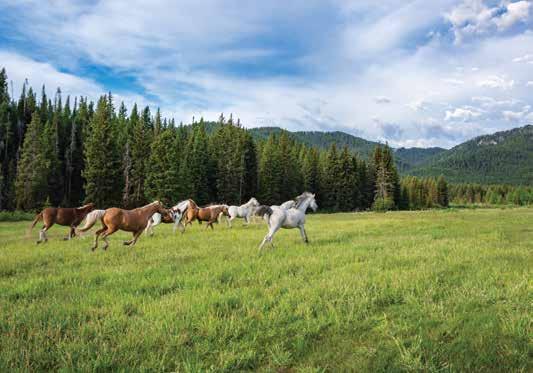
Amid affordable-housing woes, conservation easements can attract ire because they remove land from the development pool. However, if developed, most of these large, rural tracts of land would likely become luxury homes for retirees, vacation home owners, or remote workers, says Propst. “This kind of development would make the local housing crunch worse by creating more low-wage service jobs and seasonal jobs. Preservation via easement prevents that and serves an open space and wildlife purpose.”
At the Mead Ranch, a cattle operation in Spring Gulch near Jackson, multiple conservation easements provide support for wildlife and local food production. “My grandmother announced she never wanted to see a big house in Spring Gulch by Highway 22,” says Brad Mead, who lives on the ranch. Mead is not oblivious to land-use discussions in Teton County, but he stands by his family’s choice. “There is an interesting tension between housing and conservation. But realistically, easement properties are not going to become high-density or affordable housing. Our easements still permit us to graze cows and ranch, so it isn’t totally pristine. But the protected property is wildlife friendly, and it will remain undeveloped.”
Generally, land under an easement is not open to the public, since it remains private property. But one prominent conservation easement is Trail Creek Ranch in Wilson. Upon her death in 1997, Elizabeth “Betty” Woolsey, a climber and backcountry and
Albert Sommers works on irrigation ditches on his Sublett County ranch in 2014. Sommers and his family, along with the neighboring Grindstone Cattle Company, placed 19,000 acres of ranchland and critical wildlife habitat along the Green River into a conservation easement.
Olympic skier who bought the ranch in 1943, placed a conservation easement with the JHLT on the 270-acre ranch. Today, Trail Creek, which Woolsey used as a basecamp from which she guided some of the earliest backcountry skiers on Teton Pass, provides open space, wildlife habitat, and migration passage, and, in the winter, is open to public use as a Nordic ski trail system. An adjacent property, the Gill-Huff Ranch, is also under easement and allows wildlife habitat and ski trail continuity across the property.
The goal of the Land Trust’s 2019 “Save the Block” campaign was to raise enough money to purchase and place under a historic preservation easement two acres close to the Jackson Town Square. Although this area included the sole patch of green space in the heart of downtown that isn’t the Town Square and historic cabins home to beloved local businesses, it was going to be developed into a large, luxury hotel. Led by the Jackson Hole Land Trust, in about five months the campaign received donations from $1 to $1 million from more than 5,700 individuals. While the two log cabins on it might not always be home to Persephone Bakery Café and Healthy Being Juicery, the Block is now forever home to public green space and is permanently protected from additional development.
Rendezvous Park—R Park—is another public area made possible by easements. Owned and operated by the JHLT, the 40-acre R Park is the only nonprofit park in Jackson Hole. On the West Bank of the Snake River near the intersection of Wyoming Highways 390 and 22, today the park is home to ponds, sledding hills, meadows and wetlands (aka wildlife habitat), and a large sculpture of a troll created from reclaimed materials. Formerly, part of it was a gravel pit. Had the JHLT not stepped in, this land would likely have become a small community of large homes.

TTeton County is not the only place where conservation easements preserve wildlife habitat and prevent overdevelopment and sprawling subdivisions fragmenting the landscape. Statewide, Wyoming has seen rising development pressure and affordability issues, according to Jessica Crowder, executive director of the Cheyenne-based Wyoming Stock Grower’s Land Trust. “Agricultural land protection is our priority, and so what we see from landowners [seeking an easement] is a desire to keep the lands available for agriculture, for wildlife, and to pass it to the next generation.”
That was the case in 2010, when Sublette County rancher Albert Sommers and his family, along with the neighboring Grindstone Cattle Company, placed 19,000 acres of ranchland and critical wildlife habitat along the
Green River in a conservation easement. In addition to protecting wildlife habitat, the goal was to preserve small-scale ranching and agricultural traditions and keep local food production possible. The agreement also opened up five miles of riverbank fishing to the public.
Named the Sommers-Grindstone Conservation Project, it is a partnership between the landowners, the Wyoming Game and Fish Commission, and the Wyoming Stock Growers Land Trust. A portion of development value was donated, but the majority was purchased by wildlife-conservation nonprofits. The easement is held by the Wyoming Stock Growers Land Trust.
“We still own our land, just not the development right. It’s the landowner’s right to sell, like we could sell mineral rights, or water, or hunting rights. But we wanted to preserve the agricultural tradition and landscape; that’s what preserves wildlife. And any time you protect or enhance the state’s wildlife, that’s also a public good,” says Sommers, who is a now state representative for Sublette County and the current head of
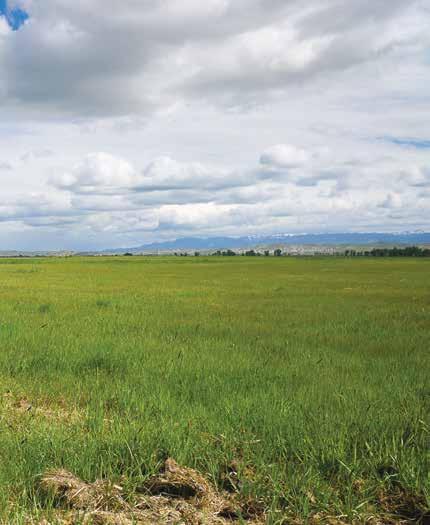
“We wanted to preserve the agricultural tradition and landscape; that’s what preserves wildlife. And any time you protect or enhance the state’s wildlife, that’s also a public good.”
—ALBERT SOMMERS, RANCHER AND STATE REPRESENTATIVE FOR SUBLETTE COUNTY
the Wyoming State Legislature. “Eventually we will gift the ranch to the next generation, a neighbor’s boy who is already working the ranch. Conservation easements help preserve everything we love about Wyoming.”
Those who work at land trusts understand the complexities, from the decision to the agreement to public opinion. “A conservation easement is a big decision for a family to make and protect their land in this way,” says the Stockgrowers Land Trust’s Crowder. “It also means we have to be more intentional about what, where, and how development does take place.”

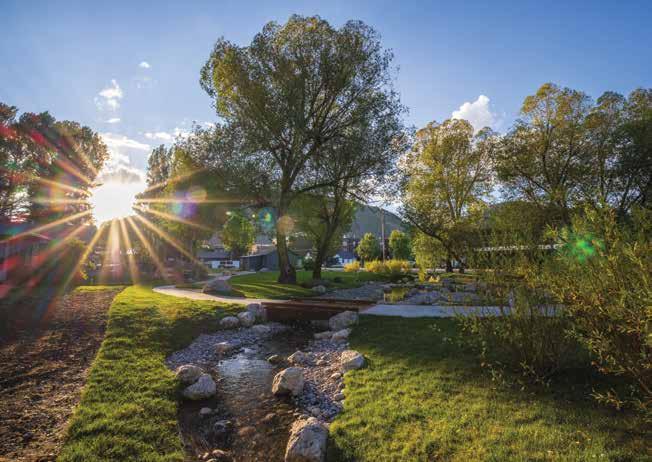
A“A lot of people point to zoning and housing regulations, conservation or federal lands, but even if we repealed all these regulations, we’d still have an affordable-housing problem because of the external demand.”
BILL COLLINS, TETON COUNTY PLANNING AND DEVELOPMENT DIRECTOR
merica is a nation with a penchant for sprawling development, which has fragmented the land, and, in many cases, destroyed the ability of wildlife to live on the land. In the northwestern corner of the GYE near Bozeman, Montana, development demand plus a lack of protected land has resulted in open spaces quickly falling to subdivisions, buildings, and more roads. Yet housing prices there have nonetheless risen, and biologists see wildlife-migration corridors and food sources, and thus herds and individual animals, being destroyed in real time.
The aggressive building of new homes along the Front Range of Colorado, too, has not guaranteed affordability. In 2022, the Front Range cities of Denver, Colorado Springs, and Pueblo were ranked in the top 10 of unaffordable cities based on rankings by Ojo Labs, a Texas-based real estate tech firm. And the sprawling development there has fomented intense traffic congestion, a loss of grasslands, open agricultural land, and fragmented, severely dwindling wildlife populations.
Is it a myth that conservation easements affect the fundamental equation of supply and demand in housing development and pricing? According to Bill
Collins, a Teton County planning and development director from 1993 to 2004, conserved lands have little to do with affordability issues. Instead, he says it is the limitless demand for second homes and investment properties and remote workers with purchasing power that far surpasses that of most local workers. “A lot of people point to zoning and housing regulations, conservation, or federal lands, but even if we repealed all these regulations, we’d still have an affordable-housing problem because of the external demand,” Collins says.
It can be difficult to look past immediate human problems and appreciate the long-term vision of most conservation easements. But people can move and live other places, and the GYE’s wildlife cannot. “The GYE is one of the only places on Earth that still supports long-distance migrations for multiple species across the same landscape,” says WYGF’s Randall. “Conservation easements are one of the best tools to ensure we maintain this ecological phenomenon into the future.”
Fuller says, “I think there is value in undeveloped places, and it highlights a fundamental ethic. Do we want to be here because of the open spaces and wildlife, or despite it?” JH
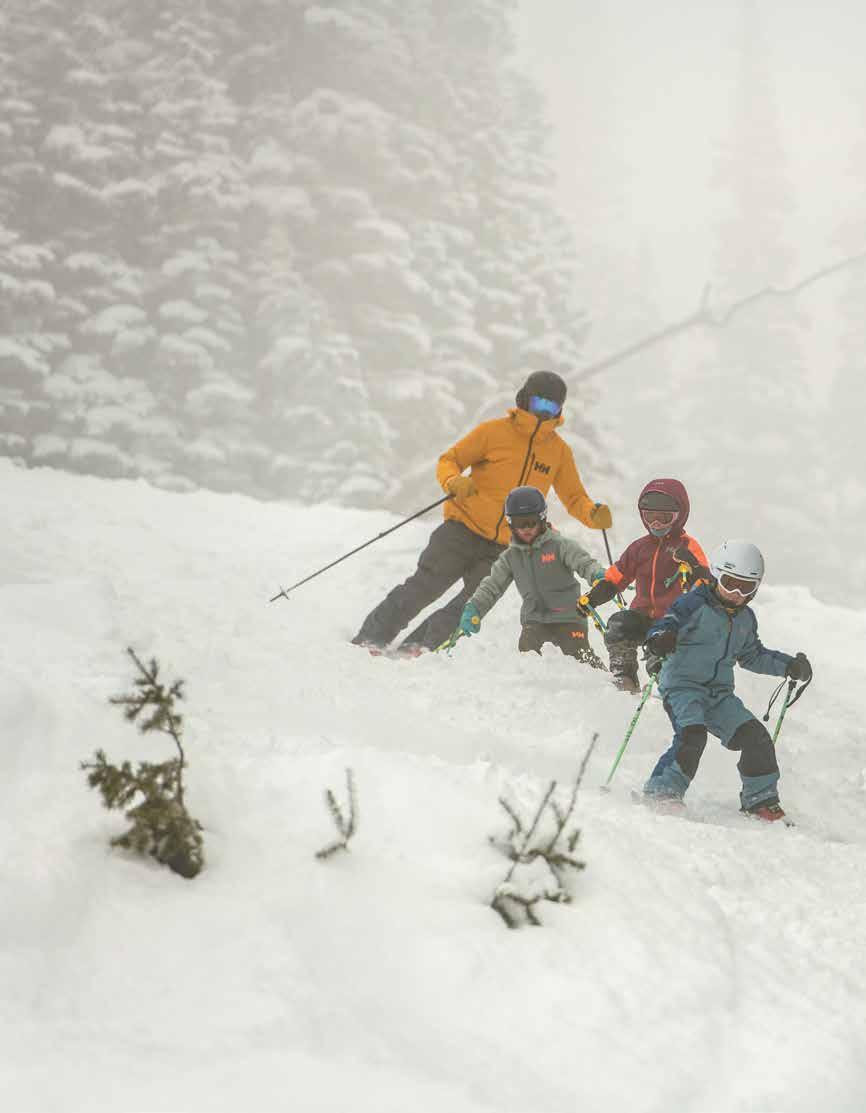
 KEN DRIESE
KEN DRIESE

ear the summit of the Grand Teton, atop a rocky spur that forms the Grand’s west shoulder, is the most striking archaeological site in Grand Teton National Park. It’s a ring of sharp granite shards, each as large as a flat-screen TV, placed side-by-side to form a waist-high enclosure just large enough for one person to stretch out and lie in wait for game, or a sign.
The Crow, or Apsáalooke, people call these prehistoric rock structures “fasting beds,” and they’re scattered across traditional Crow lands in present-day Wyoming and Montana. A Crow seeking guidance or solace would climb alone to a remote, exposed spot on a bluff or ridge, construct a windbreak, and then strip naked before fasting and praying for four days, hoping for a guardian spirit to contact and counsel him.
The first white explorers to stumble across the site were utterly puzzled by the Enclosure, as both the structure and its rocky spire are now called. These were Nathaniel Langford and James Stevenson, two members of the Hayden Survey of 1871, the second U.S. government expedition to map and explore the Yellowstone region. As the expedition journeyed along the western slope of the Tetons, Langford, Stevenson, and a few others set off to scale the Grand.
The group bushwhacked and scrambled to the saddle between the Grand and Middle Teton, then Langford and Stevenson proceeded cautiously to the top of the Enclosure, where they were stunned to discover its crown of standing stones. As Langford would write in his ensuing article in the June 1873 issue of Scribner’s magazine:
On one of the adjoining buttresses, which was but a little lower than the very summit, we found a curiosity in the shape of granite slabs piled up on end, in circular form, 6 feet diameter, the space filled with disintegrating granite … This was probably done hundreds of years ago, for hundreds of years must have been required to fill this space with granite fragments as small as these.

This passage describes the site just as it looks today.
Leaving the Enclosure, Langford and Stevenson proceeded to have one of the most controversial climbing days in Grand Teton history, which is worth discussing before returning to the possible origins of the Enclosure.
What the duo did was claim to clamber over sheets of ice to summit the Grand, with no evidence to show for it, save their questionable word. In his Scribner’s article, Langford’s description of the terrain above the Enclosure is wildly inaccurate:
In this author’s opinion, the words “bald, denuded head, worn smooth” betray Langford and Stevenson’s failed mission and resultant fraud, as the top of the mountain is an immense pile of jagged rocks with few places to sit or stand.
The controversy continues today, with some armchair mountaineers still believing Langford and Stevenson were successful, though most historians ascribe the Grand’s first undisputed ascent to Owen, grudgingly. Owen was so obsessed with claiming the first ascent that he cajoled the Wyoming legislature into officially proclaiming his party the first, then had a bronze plaque created saying so, and in 1929 convinced Grand Teton National Park’s first rangers to install it on the summit of the Grand. It remained bolted to a summit slab until 1977, when it was mysteriously pried off and never seen again.
“Exposure to the winds kept it free from snow and ice, and its bald, denuded head was worn smooth by the elemental warfare waged around it.”
The world took Langford at his word until 1898, when Billy Owen, the Wyoming State Auditor, organized a successful ascent of the Grand with Franklin Spalding, an episcopal minister who led the party through the technical terrain; Frank Petersen; and John Shive. As soon as they descended, Owen claimed the first ascent, as he’d already doubted Langford’s claim, and saw no cairn at the top, or any other sign of a previous ascent.
Owen’s claim to the Grand’s first ascent would seem settled. But is it? When Langford announced his and Stevenson’s feat, he wrote in Scribner’s, “We felt that we had achieved a victory, and that it was something for ourselves to know—a solitary satisfaction—that we were the first white men who had ever stood upon the spot we then occupied.” For Langford to say “the first white men” was to acknowledge the probability, if not the certainty, that Indigenous climbers had ascended the Grand first, though this probability is rarely mentioned today.
Back to the Enclosure and its similarity to other Crow/Apsáalooke fasting beds. Before he passed away in 2020, Apsáalooke storyteller Grant Bulltail related that the Teton Mountain Range is known to his people as “Bishish’s Father,” because a young Crow named Bishish once fasted high in the Tetons, where a shining being appeared and urged

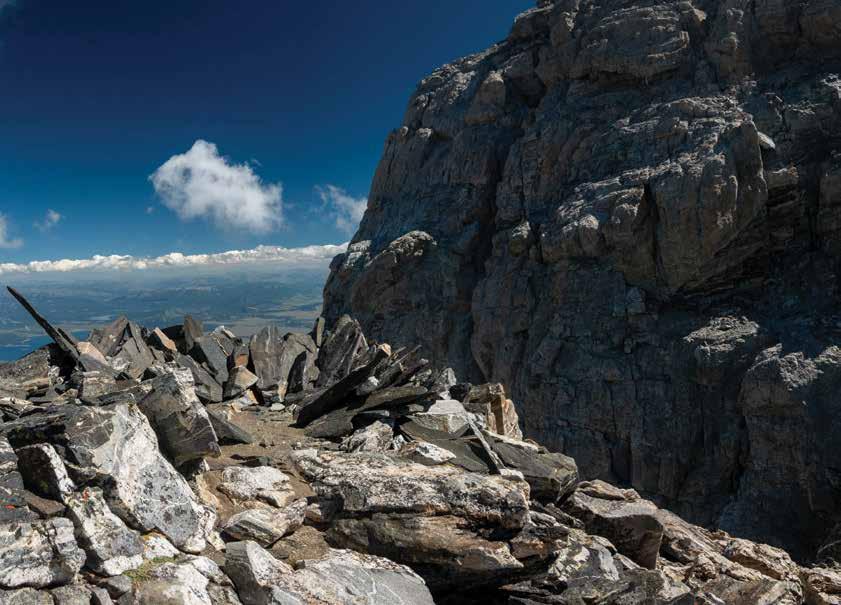
him to voyage south to find horses for his people. Bishish did so, returning seven years later with fast Spanish ponies, giving the Crow an upper hand in hunting and warfare.
If you take the Bishish story literally, and assume he built the Enclosure, the story holds together. According to various Crow traditions, they first gained horses in the early 1700s, which would jibe with what Langford said in Scribner’s: “It could not have been constructed less than a century ago, and it is not improbable that its age may reach back for many centuries.”
Even if Bishish were a myth, the question remains whether the person who built the Enclosure might have climbed the Grand Teton. Wouldn’t the person with the energy and audacity to create a fasting bed in this most extreme setting think nothing of making a side trip to the summit? While guiding Owen and the others, Spalding had no trouble finding the narrow, airy ledges that lead to the upper mountain. Someone who’d lived his whole life outside, who could fast atop a 13,280-foot spire for four days, would have found and navigated those ledges just as easily.
Shoshone historian Laine Thom contends that Native Americans regard summits differently than whites and don’t feel the need to conquer. But if you’re choosing the 13,280-foot shoulder of the Grand Teton as your fasting bed, you’re clearly the type that has to do things more dramatically and strenuously than anyone else. Of course, this is all speculative, but there’s no harm in reserving a sliver of a chance that a Crow named Bishish created the Enclosure and climbed the Grand before bringing horses to his people. JH


These four summits don’t require any technical climbing and do offer expansive views.
T// STORY AND PHOTOGRAPHY BY DINA MISHEVhere are about 134 named peaks in Grand Teton National Park—and the Tetons are only one of six mountain ranges easily accessible from Jackson Hole. You could spend a lifetime hiking and climbing to summits here and never do the same one twice. Here are four summits, presented in order from least to most challenging, that are among our favorites because they do not require rock climbing skills and do offer amazing views. (And for anyone unable to hike to a summit, taking a lift to the top of one of the three ski resorts in the area—Snow King, Jackson Hole Mountain Resort, and Grand Targhee Resort—doesn’t diminish the views you get at the top.)
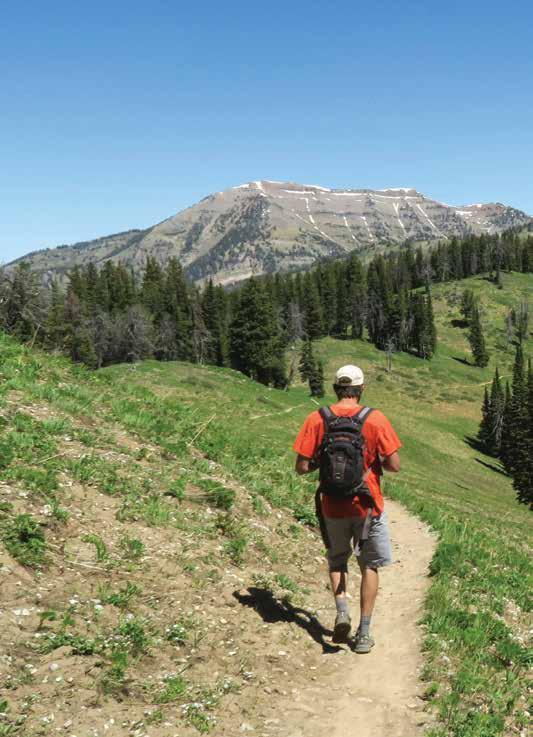
Local opinion is split on whether 9,279-foot Mt. Elly, on the south side of Teton Pass in the Bridger-Teton National Forest, is in the southern Tetons or the northern Snake River Range. Tom Turiano, a guide and historian who has published numerous books on skiing, hiking, and climbing in the various mountain ranges of the Greater Yellowstone Ecosystem, says it’s in the northern Snake River Range. We’re with him, but also, walking through wildflower-covered hillsides on the trail to the peak’s summit, we wonder why it matters. Southern Tetons or northern Snake Rivers—the views from Mt. Elly are equally rewarding.
Because it starts at the top of Teton Pass, which is 8,432 feet in elevation, the two-mile (one-way) Mt. Elly Overlook Trail is the easiest hike in the valley that delivers you to a summit from which you can see almost all of the mountain ranges that
make Jackson Hole a hole. From the parking lot at the top of Teton Pass, the hike gains about 800 vertical feet, which isn’t nothing but is as close to nothing as you can get on a Jackson Hole summit hike.
The steepest part of the hike is the first quarter-mile from the parking lot. After that, the grade mellows and there’s scenery—the Snake River winding through the valley below, pine forest, blooming wildflowers—to distract you. In my book Best Easy Day Hikes Jackson Hole, I rate the Mt. Elly trail as the area’s best hike for wildflowers.
GETTING THERE: Take WY22 west out of Wilson and drive five steep, twisting miles to the top of Teton Pass. Pull into the large parking area at the top; the Mt. Elly Overlook Trail starts at the parking area’s southeast end.

Many Jackson Hole peaks are named for their prominent features or after people. Mt. Elly got its name from a stuffed animal. In the mid-1900s, Mary Bird Young, a frequent guest at Trail Creek Ranch at the base of the eastern side of Teton Pass, always carried a stuffed elephant, Elly, in her backpack. One day, Young pulled Elly out of her pack to show her the magnificent views from an unnamed 9,279-foot summit. Her companions thought this amusing, and Mt. Elly was born.
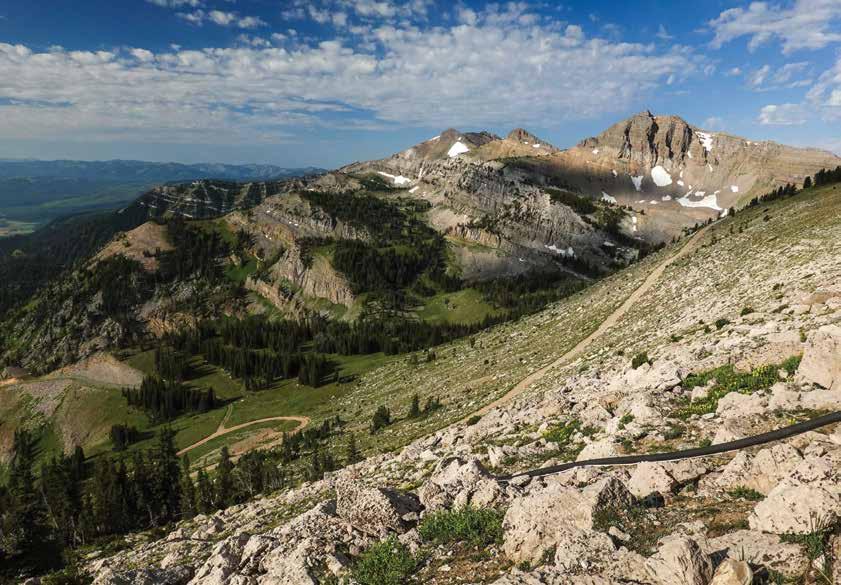
Yes, you can take the Jackson Hole Mountain Resort aerial tram to the 10,450foot summit of Rendezvous Mountain. And if you’re not capable of or up for a challenging 5.7-mile hike up 4,200 vertical feet, you should do that. But if you are up for a demanding adventure, the walk up Rendezvous Mountain via the Wildflower Trail and then the Cirque Trail takes you through masses of wildflowers and also groves of whitebark pine, and, about one-quarter of the way up, there’s even a shaded swing that begs you to sit and relax for a couple of minutes. Note that the Cirque Trail has steep, exposed sections that require the use of hands and feet. While Rendezvous Mountain is easily the busiest summit on this list (remember: aerial tram), we’re OK with the crowds because they come with the benefit of being able to ride the aerial tram down. For free. Also, a cabin at the summit, Corbet’s Cabin, serves fresh-made waffles. About two-thirds of the way up this hike—at 9,095 feet—you reach the top of the Bridger Gondola and Rendezvous Lodge, which has a fine-dining restaurant, evening happy hour on its deck, and a market with grab-andgo foods like frittatas, pizza, and pastries. Just in case you need to rest.
GETTING THERE: The Wildflower Trail starts beneath the aerial tram in the Jackson Hole Mountain Resort base area. At the top of the Bridger Gondola, the Wildflower Trail ends; from here, pick up the Cirque Trail.
The Cirque Trail takes you past some of the oldest whitebark pine trees at JHMR; some might be more than 1,000 years old.
National Park has some of the best views of any summit in the Tetons

Static Peak in Grand Teton National Park has some of the best views of any summit in the Tetons, but you do have to work for them: the hike to its 11,303-foot-tall top is 8.5 miles each way and climbs (and on the return trip, descends) about 5,000 vertical feet. The reward? On clear days, you can see the Wind River Mountains and north into Yellowstone; directly to the north is the south face of Buck Mountain; behind Buck rises the Grand Teton; below you there’s Timberline Lake, its dark green waters looking frigid even on the warmest August day.
The trail to Static’s summit starts at the Death Canyon Trailhead. The first mile climbs several hundred feet to the Phelps Lake Overlook, where there are nice views down onto the eponymous lake, which was formed by retreating glaciers during the last ice age. The next mile is a little disheartening because you lose the vert you’ve just gained and then some, as the trail descends about 500 feet from the overlook to the mouth of Death Canyon. In a couple of miles, you’ll hit an old ranger patrol cabin and, just after passing it, take a right onto a trail marked with Static Peak Divide. Even though you’ve already hiked up about 2,000 vertical feet at this point, this is where the work really starts—it’s 3,000 vertical feet and about four miles from the patrol cabin to Static Peak Divide. At Static Peak Divide (10,790 feet), leave the main trail to follow a faint trail up the final 500 vertical feet to Static Peak’s summit.
GETTING THERE: The Death Canyon Trailhead is off MooseWilson Road in Grand Teton National Park. Moose-Wilson Road and the Death Canyon Road/Trailhead are part of an ongoing construction project. Check nps.gov/grte/getinvolved/ moose-wilson-corridor-project.htm for possible closures.



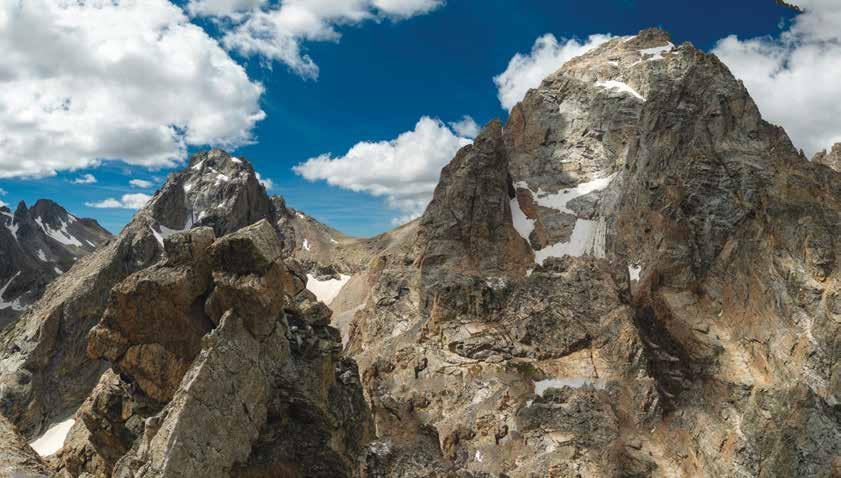
Disappointment Peak, an 11,623-foot-tall peak directly east of the Grand Teton in GTNP, is anything but a disappointment. In fact, it might have the best views of any summit in the Tetons. In the most excellent book A Climber’s Guide to the Tetons, authors Leigh Ortenberger and Renny Jackson write this of Disappointment’s summit:
“This summit view is truly remarkable, showing all of the peaks and pinnacles surrounding Garnet Canyon and Glacier Gulch, the heart of the Tetons, to great advantage.”
Disappointment’s summit does not come easy though. Not only does it require hiking up 5,000 vertical feet in about 5.5 miles, but the last 2,000 vertical feet require route-finding skills and being comfortable in and confident with exposure. An official GTNP hiking trail takes you 4.8 miles to Amphitheater Lake, but it ends there. A climber’s trail continues to the summit, and it has sections that are exposed and airy and require the use of hands and
feet. People attempting to summit Disappointment have been seriously injured. There are places where, if you slip, you can fall hundreds of feet. Do not head up Disappointment Peak lightly.
The most often done route from Amphitheater Lake to the summit is to squeeze through “the keyhole,” make a couple of scrambly moves, and pop out into a gully that is steep but not super exposed. The gully takes you to the peak’s east face, where cairns mark a track through scree and rocks.
To get to the keyhole, follow the climber’s trail to the base of the headwall above Amphitheater Lake. The keyhole—a tiny opening in a pile of boulders—isn’t immediately obvious, but it is there. Just after scooching out of it, you’ll encounter the most exposed section of scrambling. Here, you will use your hands and feet for about 20 vertical feet. If members of your group aren’t good with exposure, it is possible to set up a belay above here. Expect it to take as long to reach Disappointment’s summit from Amphitheater Lake as it took you to get to Amphitheater Lake from your car.
GETTING THERE: From the Lupine Meadows Trailhead in GTNP, take the Garnet Canyon Trail for 3.1 miles to the Amphitheater Lake Trail. JH

This mountain is named Disappointment Peak because the first white men to climb it—Phil Smith and Walter Harvey, in 1925—thought they were climbing the Grand Teton. By this time, the Grand had already been climbed—almost certainly by Native Americans (read more on page 138) and definitealy by several parties of whites, including the first woman, Eleanor Davis—but Smith and Harvey thought they were doing a new route. But, no. Upon reaching the summit, the men were disappointed to see a vast and complicated chasm between their perch and the 13,775foot summit of the Grand.

Shervin’s Tire and Auto Care has been serving Jackson residents since 1969. It’s a fixture of the community and the team at Shervin’s is dedicated to treating all customers like family. Whether you need a new set of tires, a tune up, or just some snacks for the road trip, Shervin’s has you covered.

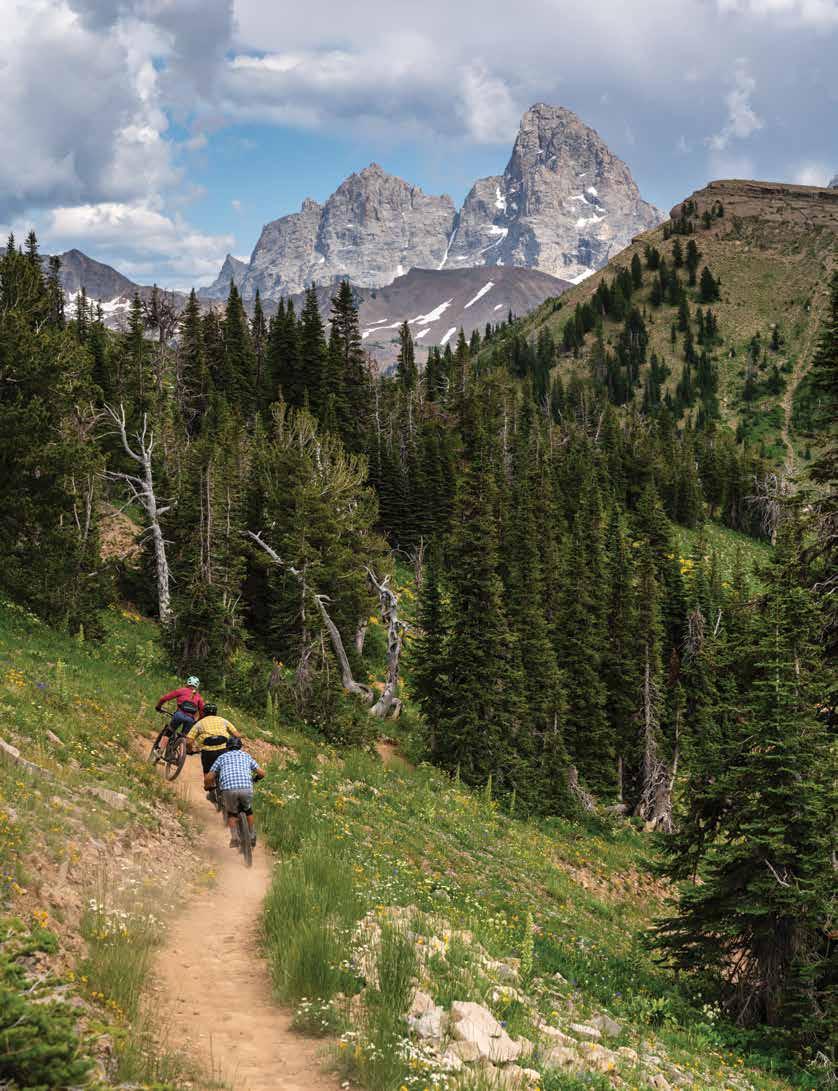
TARGHEE CROSS-COUNTRY RIDING
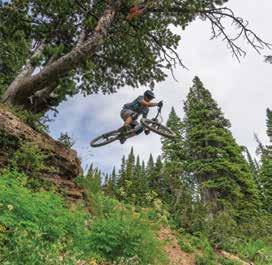
It’s hard to reach consensus when you ask bikers to identify their favorite cross-country mountain bike trail at Grand Targhee Resort in Alta, Wyoming. With roughly 30 miles of rolling intermediate trails from which to choose, what’s best depends largely on what you want.
Scenic vistas? Buffalo Soldier takes you to an overlook with unparalleled views of Teton Canyon and the Grand. Wildflowers? They’re everywhere at Targhee, but some of the best trails for riding through fields of flowers include Action Jackson or the Rick’s Basin trails.
Kid-friendly? Roundabout or the pump track near the base of the Dreamcatcher lift are perfect for little ones. Big climbs? Tall Cool One gains roughly 1,700 feet in just under seven miles as it ascends in a series of switchbacks from the base of the Blackfoot lift to the top of Dreamcatcher. The only cross-country trail that reaches the summit of Fred’s Mountain, Tall Cool One’s main challenge is the relentless zig-zagging climb, but you are rewarded for the effort with your choice of downhill trails to descend.
Targhee’s cross-country trails are free, well-signed, and not super technical. (If you want a techy ride, spring for a lift ticket—$45/day for ages 6 through 12, and $60 for ages 13 and up—to ride the 13 miles of lift-accessed
The system of cross-country mountain biking trails at Grand Targhee is free to ride and also priceless.
//BY MOLLY ABSOLONdownhill trails.) The system of cross-country trails is known for its flow and moderate grades, which make the trails ridable by all levels of mountain bikers. And because loops intersect at various points throughout the resort, you can ride for just a few miles or for up to 30 with minimal backtracking. Another benefit of riding at Targhee? The base area is at 8,000 feet, which means that in the heat of the summer, these trails offer a cool respite from the valley heat.
Finally, perhaps the best thing about mountain biking at Targhee is post-ride relaxing with a cold beer and a heaping plate of nachos at the Trap Bar. Or pick up an ice cream at Snorkels and kick back in an Adirondack chair on Targhee’s main plaza for the mountain bike version of après.
You can rent bikes at the base area or at one of the bike shops in nearby Driggs or Victor, Idaho. If you want some instruction, Targhee offers lessons and hosts a number of clinics throughout the summer for you to refine and develop your skills.
TARGHEE CROSS-COUNTRY RIDING
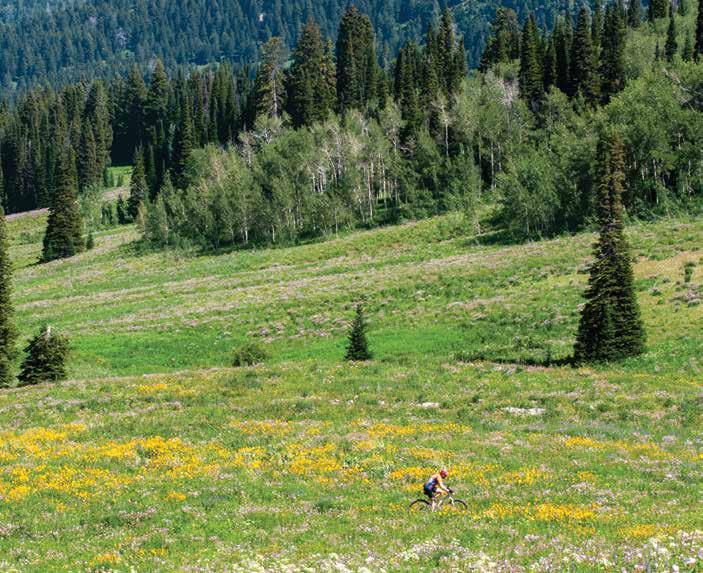
Seven miles with 440 feet of elevation gain and loss, moderate physical rating, advanced beginner/intermediate trail, 1–1.5 hours
This loop links three trails and can be ridden in either direction; after a few visits, you’ll figure out your personal preference. Action Jackson is Targhee’s sentimental favorite because it is named after Victor single-speed mountain bike racer and all-around good guy AJ Linnell, who died in a plane crash in 2015. That legacy aside, the Action Jackson–Buffalo Soldier–Andy’s Loop is worthy of its place on everyone’s list of Targhee’s best because of the
fun riding it offers. The trail rolls up and down through pine forest, across meadows of flowers, into the speckled light of aspen glades and around a small knoll from which you look out across Teton Canyon toward the Grand and its majestic neighbors.
Approximately six miles and 800 feet of elevation gain, moderate physical rating, advanced beginner/intermediate, 1–1.5 hours
JW Bennett founder Sarah Kjorstad makes custom hats along with accessories to adorn them with at her shop in downtown Jackson.
This series of trails takes you from the Targhee base over to Rick’s Basin, an area known for its spectacular displays of wildflowers. Depending on
the month, you’ll ride through yellow mule’s ears, purple larkspur, red Indian paintbrush, golden arrowleaf balsamroot, pink geranium, magenta fireweed, and pale green false hellebore. Most riders recommend riding this loop counterclockwise to get the most bang out of Perma-Grin—a flowing downhill section that winds through aspen forests with long stretches where you can open up and enjoy the kind of speed that will put an eponymous grin onto your face. Perma-Grin was one of Targhee’s former trail designer Andy Williams’s favorite trails. Riders with dogs can find water for thirsty pooches until late in the summer on The Other One.
Andy’s–Yada,
Eleven miles and approximately 1,500 feet of elevation gain, physically demanding, intermediate, 2–3 hours
While this loop can be ridden in both directions, most people prefer to ride it clockwise and avoid the climb up 38 Special, which has more than 40 switchbacks to navigate as you ascend out of Mill Creek. Clockwise, you’ll gain elevation on Peaked and Ain’t Life Grand’s longer traverses. So, unless you want to work on your uphill switchback turns, start by heading up Peaked. This loop ups the challenge for riders because of its long continuous climbs, but the trails are rideable for most skill levels if you have enough stamina and lung capacity, plus there are plenty of scenic spots to stop and take a break with big views of the Tetons and out across Teton Valley to the Big Hole Range.
About 29 miles with approximately 3,400 feet of elevation gain, physically demanding, intermediate riding, 4–6 hours
Grand Targhee’s International Mountain Bike Association’s (IMBA) Epic loop (designated in 2014) combines all of the resort’s cross-country trails into one epic ride. The Pierre’s Hole Race route is similar, although there are some differences in the specific routing. Regardless, you get 28.7 miles of varied, flowy singletrack that are rideable by all skill levels (with the necessary fitness). It’s a great way to get in lots of miles—whether for training or to challenge yourself on a long ride on singletrack with amazing views and varied terrain. The classic route goes out Andy’s to Yada, up Peaked and Ain’t Life Grand, down 38 Special, up Colter’s Escape, over to Buffalo Soldier, back along Action Jackson to Planet
Like a winter ski patrol, Grand Targhee’s bike patrol consists of medically trained patrollers who are on call to help guests throughout the summer. Call boxes are mounted along bike trails in case riders need assistance. Plus, the patrollers ride the trails to check for downed trees or other maintenance issues, which means Targhee’s trails are always in prime condition.
Clare, across the road to Greenhorn, up Pika and More Cowbell, down PermaGrin and The Other One, over to North Woods, Quakie’s Ridge, and Snowdrift, and then back Pika and Yogi to the base. (The route is not marked as the Epic or Pierre’s, so you do need to know the names of the component trails and follow signs for each of them. Don’t worry if you miss a trail though, any variation of these is fun.) JH
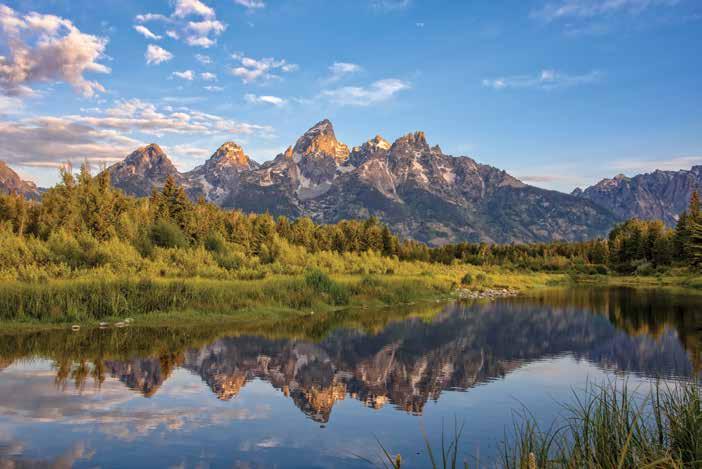

What kind of waterfall experience are you looking for?

Day hike to a waterfall in the national forest.
WHAT YOU’LL SEE: These secluded falls in the Wyoming Range plummet more than 200 feet through an hourglass-like formation. Expect meadows exploding with wildflowers and secluded campsites. Views of surrounding mountain ranges abound, and the scene is purely Western: creek crossings, rugged rocks, sharp peaks, and signs of wildlife. Find bear claw scratches on aspen trees and look for coyote, elk, deer, and perhaps even wolf scat along the trail. These are backcountry falls, which often means fewer people and less crowding.
GET THERE: In the Bridger-Teton National Forest, this waterfall is a six-mile hike up 1,300 vertical feet and across several creeks. It starts at the Cliff Creek Trailhead. To get to the trailhead, head south on Highway 189/US 89 from the town of Jackson to Hoback Junction. At the roundabout, take the second exit and proceed east on US 189/191 for 14 miles. Turn right on Cliff Creek Road/Forest Service (FS) Road 30530. Continue for 6.6 miles and then turn right onto FS Road 30565.
ALSO IN THE AREA: A long hike and a day at the falls works up the appetite. Buffalo Bills Food Truck (wyobuffalobills.com) in Hoback Junction exists to solve that problem. Open daily from “11:30ish to 8” (per the website), the food truck serves Wyoming-size portions of burgers, quesadillas, tacos, vegetarian options, and more.
// BY RACHEL WALKER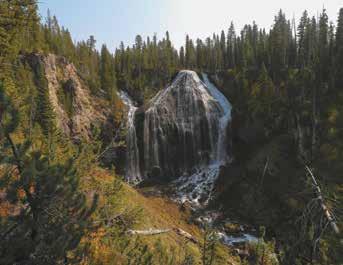
Backpack to a remote waterfall in Yellowstone.
WHAT YOU’LL SEE: If weeping willows could transform themselves into water, they would look like Union Falls. At 250 feet, this stunning fan-type waterfall is among the tallest in Yellowstone National Park. In the park’s lush Bechler Region, which receives the highest amount of the park’s rainfall, Union Falls is just below the convergence of two rivers. (FYI: The Bechler region isn’t only lush with water, but also bears. Do not travel in this area without bear spray.)
GET THERE: A trek to Union falls is a really long day hike (32 miles), or a great opportunity to camp in Yellowstone’s backcountry (permits required). The hike, which includes multiple stream crossings and climbs about 600 feet, starts at the Cascade Creek Trailhead at the western end of Grassy Lake Reservoir off Grassy Lake Road just south of the southern entrance to Yellowstone.
ALSO IN THE AREA: Refresh and replenish at nearby Flagg Ranch, where log-cabin-style Sheffields Restaurant serves savory grilled meats, fish, and vegetable dishes, and the Sheffields Saloon has local beers on tap as well as a wide range of spirits. Stay the night at one of Flagg Ranch’s cozy cabins or Western lodge, or pitch a tent in the developed campground (reservations required).
The Greater Yellowstone Ecosystem was forged by powerful forces of nature, especially water. From frothing, raging rivers to winter snow that can be measured in feet—and then melts come spring and fills the drainages—water carves its way through cliffs and forests as it flows into rivers, lakes, and, eventually, the Atlantic or Pacific Ocean. Combine that hydrologic phenomenon with the area’s dramatic geologic uplift, and you have prime conditions to create waterfalls. The GYE’s 15-plus million acres are home to several hundred.
Like snowflakes, every waterfall is different. Here are four that are very different—in looks, in ease of getting to, and in the size of crowds you’ll encounter once there.

HIDDEN FALLS
Hike one or five miles to a cascade in Grand Teton National Park.
WHAT YOU’LL SEE: These falls earn their name because they’re tucked into trees on the western shore of Jenny Lake in Grand Teton National Park. The falls tumble down a tiered natural slide for 100 feet and then gush down to the lake. Marvel at the rapid movement and frothing waters, and, because Hidden Falls are among the easiest to access in the park, expect fellow visitors.
GET THERE: This popular cascade—it’s the only waterfall in GTNP that you can hike to the base of—is a 4.9 mile (round-trip) hike on the Jenny Lake Loop Trail. The trail starts at South Jenny Lake, one of the busiest places in GTNP. Cut four miles (!) off the hike by taking Jenny Lake Boating’s shuttle across the lake. This runs every 10 to 15 minutes from late May through late September. $20 for adults, $12 for ages 2 to 11, and $17 for ages 62 and older.
ALSO IN THE AREA: No trip to Grand Teton National Park is complete without a stop at Dornans in Moose. Evelyn Middleton Dornan homesteaded here in 1922, and her family has since established (and still runs) several businesses, including a chuckwagon, a pizza and pasta restaurant with a rooftop deck and stunning Teton views (read more on pg. 76), and a deli.

WHAT YOU’LL SEE: Some waterfalls are tall; few are as wide as Cave Falls—about 250 feet. For perspective, that’s about as wide as a 20-story building is tall. Although Cave Falls are short (about 20 feet tall), they are mighty. You can hear their roar before you see them.
GET THERE: You can drive right to Cave Falls, although not from any of Yellowstone’s most popular areas like Old Faithful or Mammoth Terraces. Cave Falls is in the tiny part of Yellowstone in Idaho. From Ashton, Idaho, take State Highway 47 east to E 1400 N/Cave Falls Road. After five miles of pavement, the road turns to dirt and ends 12 miles later at the Cave Falls parking lot.
ALSO IN THE AREA: Camp in the Cave Falls Campground along Fall River, about two miles south of the falls in the CaribouTarghee National Forest. This remote but developed campground has RV and designated tent sites, supreme fishing, and unimpeded views of the water. Cave Falls also has excellent fishing in the pools at the waterfall’s base. JH
It takes a lot of work to make nothing happen.

Ais the single largest piece of public land in the 15+ million acre Greater Yellowstone Ecosystem (it’s bigger than Yellowstone and Grand Teton National Parks combined!). Many of Jackson
Hole’s most beloved places are on the BTNF, including Cache Creek, Teton Pass, Curtis Canyon, Snow King, Shadow Mountain, and Jackson Hole Mountain Resort.
Working with dozens of partner organizations, Friends of the BridgerTeton (FBT) promotes and facilitates responsible recreation on this amazing landscape so that we can all enjoy the Forest’s diversity and wealth of resources now and into the future.
// BY SOFIA MCGULICKFriends of the Bridger-Teton’s flagship program is Ambassadors for Responsible Recreation. Over the past several summers, Ambassadors at dispersed camping areas at Curtis Canyon, Shadow Mountain, and Toppings/Spread Creek have extinguished more than 500 abandoned campfires, any of which could have become a wildfire, and have also secured hundreds of attractants that could have led to human-bear conflicts. “There is no question Ambassadors have made a significant impact in preserving the forest’s resources,” says Linda Merigliano, the BTNF wilderness and recreation manager.
btfriends.org | @bridgertetonfriends

Here’s a few things you can do to help us make nothing happen.

The best way to prevent a wildfire is to not build a campfire. If you do want to have a campfire, first check the local fire danger (www.fs.usda.gov/btnf) to see if campfires are allowed. If they are, only build a campfire in a designated fire ring. Never leave your fire unattended, and make sure that it is completely extinguished—drown it with water, stir, feel for heat, and then repeat until it is cold to the touch.


Stop the spread of invasive species in your tracks by remembering to:
n REMOVE plants and mud from boots, gear, pets, and vehicles.
n CLEAN your gear before entering and leaving the recreation site.
n STAY on designated roads and trails.
n USE certified or local firewood and hay.
For more information, go to tcweed.org

Centuries ago, moose, wolves, bison, elk, eagles, sandhill cranes, trumpeter swans, grizzly and black bears, bighorn sheep, bald eagles, elk, and mountain lions lived on or migrated through the lands that is now the BTNF … and all of these species still live wild on the BTNF today. Wildlife watching is one of the least physically demanding activities you can do on the BTNF, but carries some of the highest consequences, not only for you, but also for the animals.
Watch wildlife safely by:
n Giving them space and always staying at least 100 yards away from black and grizzly bears, and at least 25 yards from all other animals, including bison, elk, and moose. These distances are minimums, though: if an animal is reacting to your presence, you’re too close.
n Keeping your dog under control.
n Never feeding wildlife. Human food is bad for the teeth and digestive systems of many species. Animals dependent upon handouts can lose their ability to find their own natural food and then die when winter comes and no one feeds them. Feeding animals can make them lose their fear of humans, making them easy targets for hunters. Fed animals will start associating humans with food and coming into populated areas, which can cause wildlife managers to relocate or kill these animals.
For more information about how to protect the wildlife that makes Jackson Hole and the BTNF so special, go to beingwildjh.com.
Across the U.S., there are about 50,000 non-native or invasive plant species. These wreak havoc on native habitats and ecosystems, damage crops, and, especially important in the Greater Yellowstone Ecosystem, one of the few intact ecosystems remaining in the world, threaten native species. Nationwide, 42% of threatened and endangered species are at risk at least partially as a result of invasive species; approximately 18% are at risk primarily as a result.
On the BTNF, 29 land- and aquatic invasive species have been found and identified. Help stop the threat posed by invasive species by:
n DRAIN all water from your boat including the motor, bilge, live well, and ballast areas.
n CLEAN all mud, plants, and debris from your boat. The plants can be invasive and mud and plants can also harbor other Aquatic Invasive Species.
n DRY your boat well before using it in another water—at least 5 days in the hot summer, 18 days in the spring or fall, or 3 days in the winter when temperatures are freezing.
For more information, go to snakeriverfund.org.
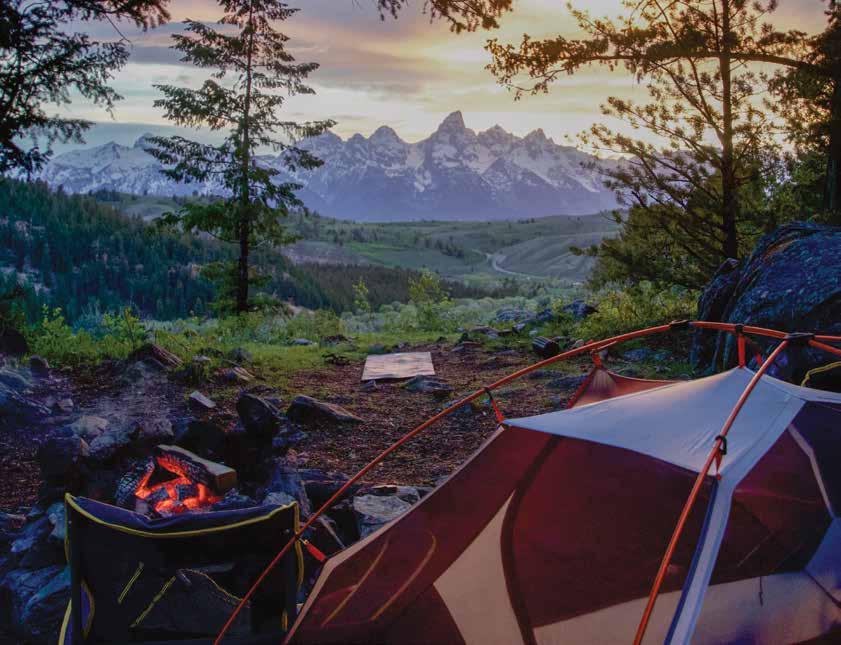
Let Leave No Trace principles guide you to recreating responsibly in and around Jackson Hole.// BY BEVIN WALLACE
Leave No Trace and its principles are not new. “The organization has been around for 30 years, and the notion of ‘leave no trace’ even predates that,” says Mark Eller, foundation director of Leave No Trace. “It was an education program that the Forest Service and the National Park Service started together with partners like NOLS advising on what the principles might look like.” But what many hikers, skiers, and tourists might not realize is that the principles are constantly being evaluated and updated. “A lot of people think Leave No Trace was written on stone
tablets and discovered in a burning bush,” Eller says. “But it is more dynamic than that. We do research, we revise the advice we give. We publish research and papers and make sure Leave No Trace stays dynamic and evolving, and is based on science.”
For example, in recent years, Leave No Trace held a zero-landfill outreach and education program in Grand Teton National Park and hosted a Leave No Trace “Hot Spot” education event for park employees and volunteers at GTNP’s String Lake, an area of concern due to “overwhelming use and human-
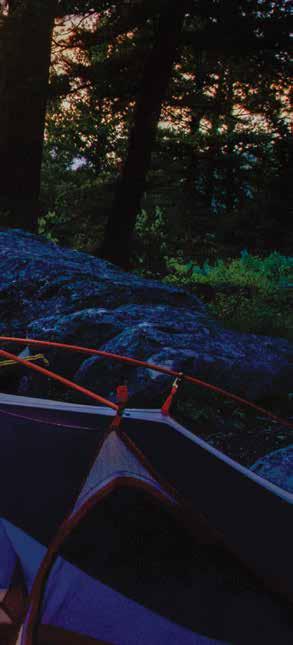
wildlife interactions.” It also conducts research in Grand Teton and Yellowstone National Parks using life-size cutouts of bison or elk and asking visitors how close they think a safe viewing distance would be to the wildlife. Their responses have helped the organization develop practical tips and messaging for wildlife encounters.
“I believe that people usually want to do the right thing and respect the wildlife, but they need more specific guidance than just ‘respect wildlife,’” Eller says. “How do you do that? People don’t always know. I mean, there are

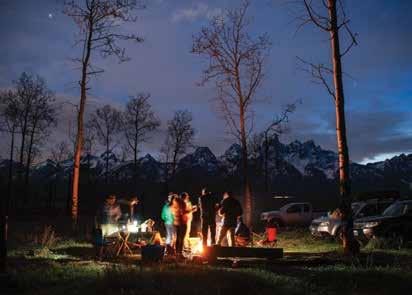

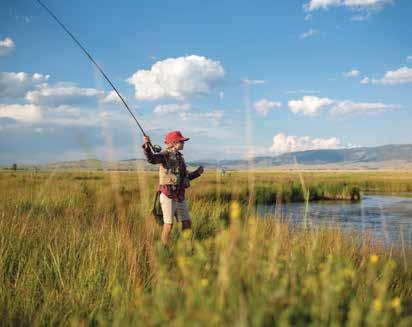
Here are some recommendations for utilizing the principles when heading outdoors in and around Jackson Hole.
All of the LNT principles apply nowhere more than they do with camping and backpacking. Before you go, you should know how to properly put out a fire (pour water on it until it’s cool to the touch) and store your food securely; and where to camp that will cause the least impact on the landscape. For camping around Jackson Hole, the nonprofit Friends of the Bridger-Teton recommends choosing a campsite that is at least 200 feet from any lakes, streams, or rivers and that is on a “hardened surface” that has been used for camping before. Also, pack out everything you pack (or drive) in.
Because it’s not generally physically strenuous and can be highly rewarding, wildlife watching is one of the most popular activities for people coming to the Greater Yellowstone area. Not only that, wildlife watching can happen when you’re doing almost any other activity in the backcountry—hiking, skiing, mountain biking, fishing, hunting, camping, and photography. But wildlife is wild; animals can be unpredictable and defensive, especially when they are with their young. Stay 25 yards from most wildlife and at least 100 yards from predators like black bears, grizzly bears, and wolves.
A practical tip Leave No Trace devised for wildlife watching is the “thumb trick”—if you hold up your thumb at arm’s length and you can’t block out the entire animal with your thumb, you’re too close.
Anglers should know all the local fishing regulations, which are available from all Wyoming Game & Fish offices and are in place to protect native fish populations. To avoid stressing out the trout, don’t fish in the heat of the day when the fish should be taking it easy. If you catch a fish in warm water, it’s likely the fish will die after being released. For the same reason, try not to fight a fish until it’s exhausted. The Grand Teton National Park and the Bridger-Teton National Forest ask that anglers wash their boots, waders, boats, and trailers to help prevent the spread of aquatic invasive species, which can harm native fish. And never move a live fish from one body of water to another.
lots of people who believe that handing food to animals is helping the animals. So, you need to explain to them that if they are getting this wildlife accustomed to humans as a food source, that could have bad implications for that animal. But we also need to tell them why. It’s not just us scolding people and telling them don’t do it because we told you not to.”
The seven principles of Leave No Trace are: 1) Plan ahead and prepare 2) travel and camp on durable surfaces 3) dispose of waste properly 4) leave what you find 5) minimize campfire impacts 6) respect wildlife 7) be considerate of others.
Still, Eller says the basic seven principles are a great place to start. They are the best guidelines for backcountry etiquette and will help you become more conscious of your impacts on the environment. They are always worth revisiting, especially—and this is crucial—before you reach your outdoor recreation destination. “If somebody shows up at a national park and gets handed a pamphlet about the seven principles of Leave No Trace, that’s a pretty tough ask for them to absorb all that right there on the spot,” he says.
The seven principles of Leave No Trace are: 1) Plan ahead and prepare, 2) travel and camp on durable surfaces, 3) dispose of waste properly, 4) leave what you find, 5) minimize campfire impacts, 6) respect wildlife, 7) be considerate of others.
These principles are fleshed out on Leave No Trace’s website lnt.org, which is also a great resource for current advice and information about the organization’s workshops, outreach, and research. While the seven principles apply to all outdoor recreation activities, some activities require more specific guidelines. JH



Take an urban public art walk, and please sit on the swings and benches along the way—they’re the ultimate in functional art.// BY SAM SIMMA
Abrightly painted chairlift in downtown Jackson might seem random, but in this mountain town, there’s nothing nonsensical about turning retired chairlifts from Snow King Ski Area into public art. Each chair is fun to look at and also functions as either a bench or a swing. Largescale murals in downtown alleyways aren’t as obviously functional, but they share conservation themes while encouraging viewers to pause for a photo op.
Jackson’s Town Square is full of art galleries, there is a free outdoor sculpture trail at the National Museum of Wildlife Art, and the nonprofit Jackson Hole Public Art has installations across the valley. But a new public art project, Square to Summit, and an ongoing one, WildWalls, make the downtown-toSnow-King corridor a wonderful outdoor art walk.
“Snow King is important to our community for a lot of reasons,” says Carrie Geraci, executive director of JH Public Art, a local nonprofit that places temporary and permanent artworks in public spaces so that art may be more accessible to all. When the resort—the first ski area in the state of Wyoming (it opened in 1939), which locals today call the “Town Hill”—replaced its Summit Chair with an eight-passenger gondola in 2021, Ryan Stanley, the resort’s president, offered to set aside 25 of the Summit chairlifts for a public art project. (The rest of the chairs were sold or donated to other nonprofits.)
“Having the opportunity to partner on this installation has been a positive and rewarding experience that brings together private and public resources in the best possible outcome for everyone
to enjoy,” Geraci says. In total, over 30 local businesses and organizations came together to bring the project, which debuted last summer, to fruition. The 25 donated chairs were repurposed into colorful swings and benches, and form a walking corridor from downtown Jackson to the Snow King summit—hence the project’s name, Square to Summit.
Painted vibrant hues ranging from blue to yellow, the chairs channel alpenglow colors. “In the winter, it’s all the shades of light reflecting off the snow,” Geraci says. “And in the summer, miraculously, the alpenglow colors are the colors of our wildflowers.”
All of the chairs have views of Snow King and many are on Cache Street. “There are a few off the Cache Street corridor—for example, one on Center Street that looks straight up at Snow King—but in general, we wanted people to be able to walk along and feel an element of surprise and discovery when they came across another bench,” Geraci says.
As you walk around downtown Jackson, sit and relax on as many of these as you want. At each, there’s signage sharing a snippet of the town hill’s history, imagery from the Jackson Hole Historical Society & Museum, and recognition of the project’s sponsors. Also around the Square are three murals, each as eye-catching as the swings: The Time in Place, Hooked, and Knowledge is Protection. These murals are part of JH Public Art’s WildWalls program, an annual event during which permanent and temporary wheatpasted murals sharing conservation messages are created in iconic public settings throughout Jackson.

1. Katy Ann Fox painted The Time in Place—larger-than-life wildflowers popping against a purple backdrop on an exterior wall of Trio Bistro (45 S. Glenwood St.)—for WildWalls 2021. Commissioned by Trio Bistro and The Nature Conservancy, the mural is inspired by the latter’s wildlife project, which documents how climate change is affecting wildflowers in certain areas.
The benches and swings invite people to sit together and have a conversation or to step outside from your busy office day and eat your lunch in the fresh air.”
—CARRIE GERACI, EXECUTIVE DIRECTOR, JH PUBLIC ART
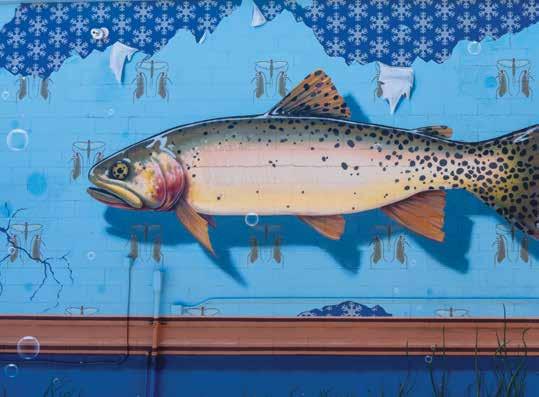


2. Hooked, by Dan Toro, highlights the Snake River watershed, which is foundational to the overall health of the Greater Yellowstone Ecosystem and provides key wildlife habitat, recreational opportunities, and clean drinking water for thousands. On the side of Snake River Brewing, the mural is a collaboration between the brewery and Protect Our Water JH, an organization addressing the issue of nutrient pollution in the surface waters and ground water of Teton County.
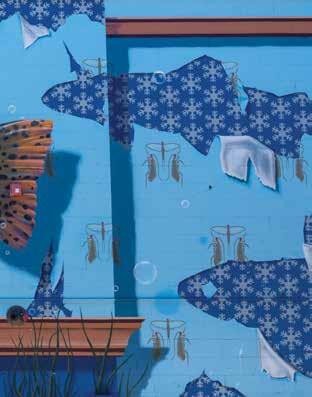
3. Helen Seay’s Knowledge is Protection mural, in a Pearl Street alley adjacent to Shirt Off My Back, was co-sponsored by Grand Teton National Park Foundation. “Bears, bear safety, and traveling in bear country are topics near and dear to my heart,” Seay says. Commissioned as part of WildWalls 2022, the mural leverages augmented reality features to promote a greater understanding and awareness of the region’s ecosystem.
I love the social and health benefits that public art can inspire, too.”
CARRIE GERACI, EXECUTIVE DIRECTOR, JH PUBLIC ART "
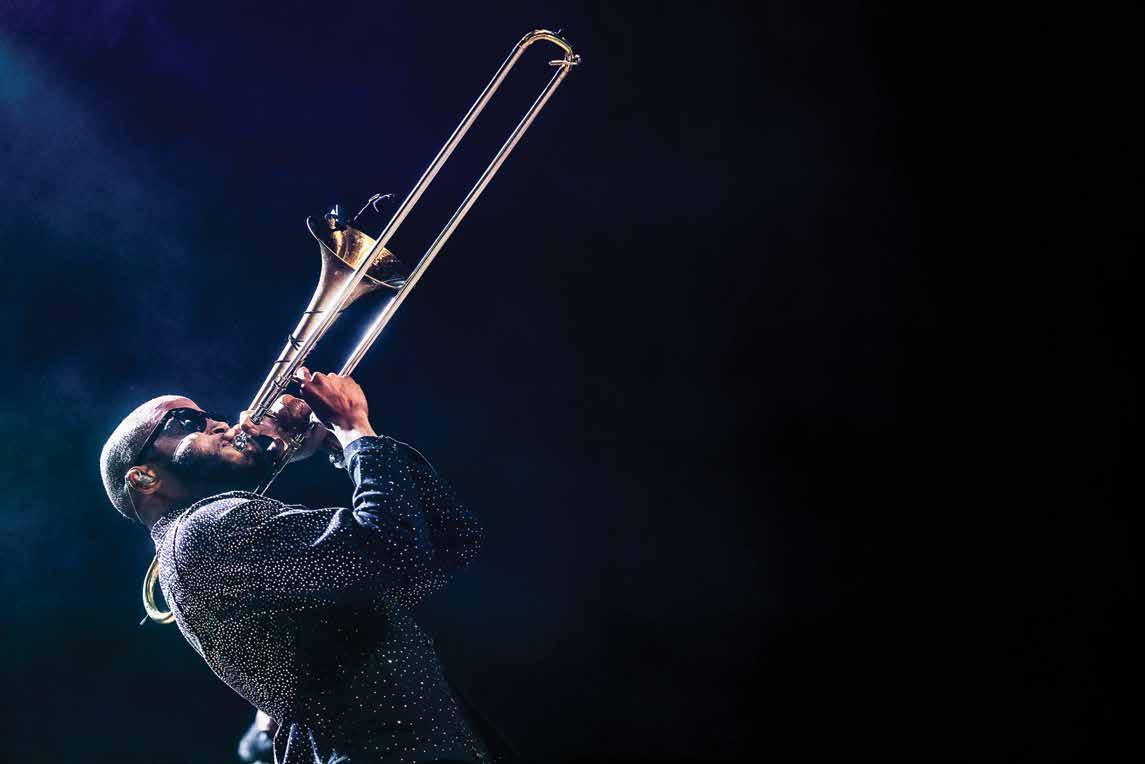
When you are finished with these murals, start again following the chairs, which lead south toward Snow King. When construction on Snow King’s summit is complete (in 2025), six swings will stand at the top (as of this past spring, two of these had been placed). If a trip to the summit isn’t in the cards for you, four chairs are installed at the base of the mountain. JH
SCAN TO LEARN ABOUT SUMMER EVENTS AT CENTER FOR THE ARTS
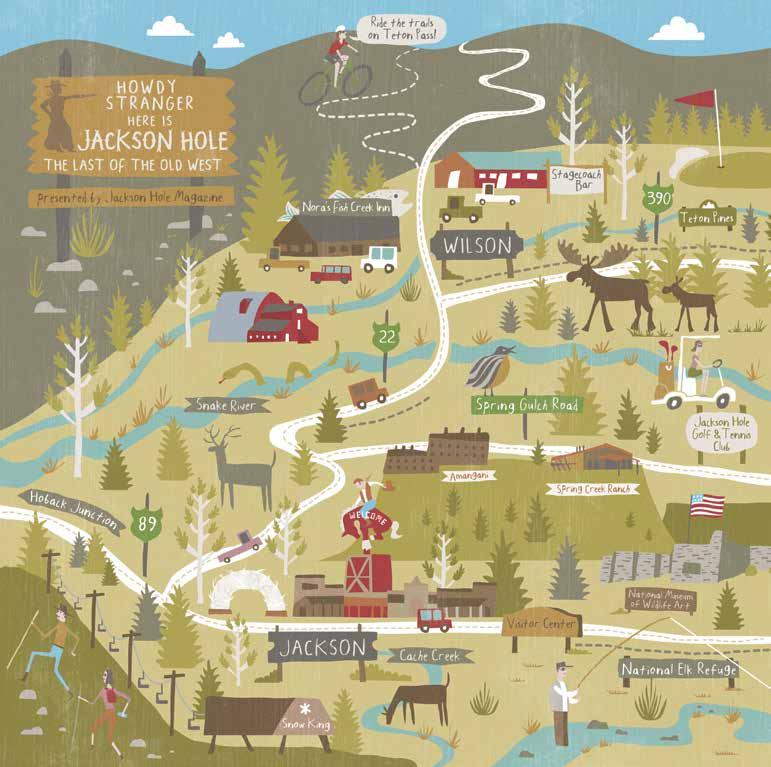
y Walk from the Square to the Summit (p. 162).
y Check out the Jackson Hole Historical Society & Museum (162).
y Walk the pathway north from town to see views of the Winegar Tree (p. 42).
y Get a McDowell Burger at Sweet Cheeks Meats (p. 72).
y Hike Josie’s Ridge (p. 34).
y Relax in the Save the Block green space in downtown (p. 128).
y Do dinner at Calico (p. 58).
y Hike to the summit of Rendezvous Mountain and then ride the tram down (p. 144).
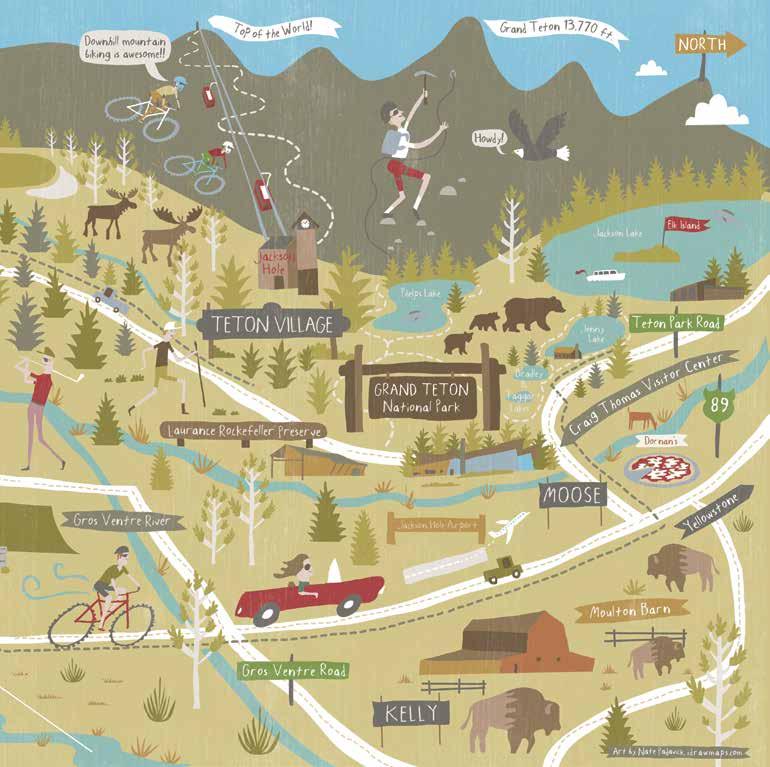
y Check out the revitalized Mormon Row (p. 32).
y Visit Jackson Lake Dam (p. 106).
y Give wildlife their space (p. 114).
y Hike around Bradley and Taggart Lakes (p. 122).
y Ride the downhill mountain bike trails on Teton Pass (p. 48).
y Try Carmela’s Chopped Salad at Streetfood @ the Stagecoach (p. 68).
y Enjoy a picnic at R Park (p. 128).
y Practice Leave No Trace (p. 158).
y Marvel at the width of Cave Falls (p. 154).
y Check out Grand Targhee’s cross-country mountain biking trails (p. 150 ).
y Take a scenic drive to Granite Creek in the BTNF (p. 52).
y Try not to do anything in Yellowstone that will land you on @touronsofyellowstone (p. 114).
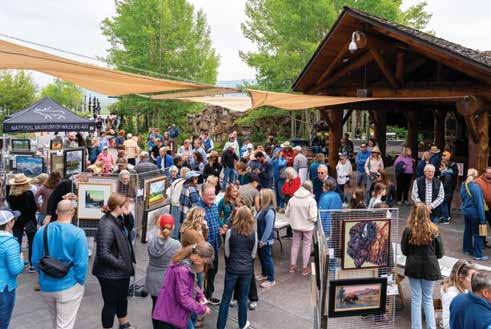
At the National Museum of Wildlife Art’s annual Plein Air Fest, Etc., watch as nearly 50 Jackson-based and regional artists create original paintings on the museum’s Sculpture Trail. At 12:15 p.m., bid on your favorites in a silent auction. wildlifeart.org
JACKSON HOLE RODEO
A long-standing tradition, the rodeo shows off Jackson’s cowboy culture. jhrodeo.com
YOGA ON THE TRAIL
Do downward dog surrounded by sculptures of wildlife art and overlooking the National Elk Refuge at these free hour-long yoga classes at the National Museum of Wildlife Art. Led by teachers from several valley yoga studios, the classes are B.Y.O.M. (bring your own mat). wildlifeart.org
JACKSON HOLE PARAGLIDING
Tour Teton Village from above. No experience is necessary to fly tandem with a professional pilot. jhparagliding.com
JACKSON HOLE PEOPLE’S MARKET
Browse fresh, local produce while enjoying prepared foods, music, and beer Wednesdays from June into September. tetonslowfood.org
NATIONAL MUSEUM OF WILDLIFE ART
This museum takes an expansive view of the wildlife art genre with its 5,000-plus-piece permanent collection. wildlifeart.org
8 JACKSON HOLE HALF MARATHON
Take this unique opportunity to run or walk from Teton Village into West Jackson. jhhalf.com
15 PLEIN AIR FEST, ETC.
Plein air painters create works while the public can watch on the National Museum of Wildlife Art’s Sculpture Trail. Collectors bid on the artwork later in the afternoon. wildlifeart.org
20–22 JACKSON HOLE FOOD & WINE FESTIVAL
Celebrate food, wine, spirits, and brews at this three-day event. jhfoodandwine.com
04 GRAND TETON MUSIC FESTIVAL –JAYNE AND AL HILDE, JR. PATRIOTIC POPS
Guest vocalist Capathia Jenkins joins the GTMF Orchestra to present a program of Independence Day favorites at the Center for the Arts Park in downtown Jackson. gtmf.org
20–28 TETON COUNTY FAIR
This is the ultimate slice of local life, with games, rides, 4-H competitions, and concerts. tetoncountyfair.com
26–28 59TH ANNUAL ART FAIR
JACKSON HOLE
This outdoor, juried art fair draws artists and artisans from across the country while raising money for the Art Association of Jackson Hole. At the Center for the Arts Park. artassociation.org
16–18 59TH ANNUAL ART FAIR
JACKSON HOLE
This outdoor, juried art fair draws artists and artisans from across the country while raising money for the Art Association of Jackson Hole. At the Center for the Arts Park. artassociation.org
03 RENDEZVOUS MOUNTAIN HILL CLIMB
This is one of the toughest mountain races out there, climbing 4,200 vertical feet from the Jackson Hole Mountain Resert base area to the 10,450 summit of Rendezvous Mountain. jacksonhole.com
04–15 40TH ANNUAL JACKSON HOLE
FALL ARTS FESTIVAL
Free and ticketed events celebrate the valley’s art scene. jacksonholechamber.com
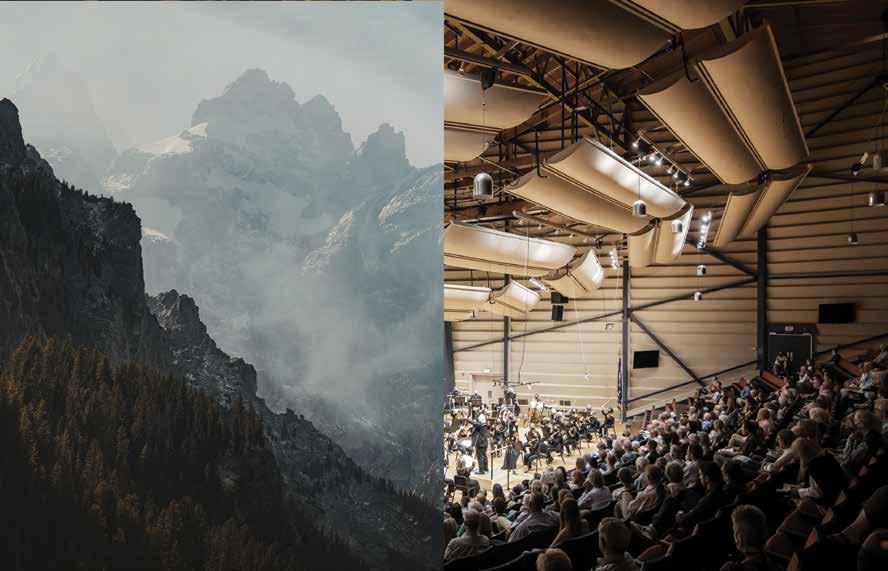








Owen above the Teton Glacier after a successful ascent of the peak in Grand Teton National Park. The mountain is named after William Owen, who was among the group to claim the first confirmed ascent of the nearby Grand Teton in 1898. Teewinot Mountain dominates the skyline on the left, and Bradley and Taggart Lakes can be seen on the valley floor.
